- RMS Queen Mary 2 Cruises
CUNARD QM2 SHIP CRUISE ITINERARY, SCHEDULE, PRICES, INFORMATION
- World Cruises
- Transatlantic
- RMS Queen Mary 1 Ship History, Facts
The Queen Mary 1 ship was planned and built as a response to the modern ocean liners constructed in Germany and launched in 1928 – SS Bremen and SS Europa. So the British “White Star Line” began its own ocean liner building program with “Oceanic” (construction started in 1928, but the ship was never finished due to the Great Depression of 1931), while the Cunard Line planned its own 75,000 ton liner.
The construction of still the unnamed Cunard Queen Mary ship began in December 1930 (the ship’s keel was laid down on 31 January 1931) in the yard of “John Brown & Co” at Clydebank (Scotland). The launch was scheduled for May 1932, but the work on the ship was suspended in December 1931 due to the world economic depression. Then a loan of 9.5 million pounds from the British Government was granted to the Cunard Line with enough money to complete the Queen Mary ship and to build a second liner – the Queen Elizabeth ship. As a direct result of this most advantageous deal, the Cunard Line merged with its main UK rival “White Star” on 10 May 1934 into Cunard White Star Ltd . The Queen Mary construction resumed in April 1934, the liner was completed by August and launched on 26 September at a total cost of 3,5 million pounds sterling. Then the QM liner was taken to be fitted by the Bromsgrove Guild.
The work was completed in March 1936 . The Queen Mary ship sailed out for preliminary trials and after being painted in Southampton, the liner was handed over to Cunard White Star Line on 11 May 1936. RMS Queen Mary ship first sailing was on 14 May with its Transatlantic itinerary being Southampton-Cherbourg-New York . By May 1937 the liner had carried a total of almost 57,000 passengers.
And something about the Queen Mary ship – the fastest liner in the world . The main speed-rival of the QM ship was SS Normandie – a liner built in France (the Saint-Nazaire yards, launched 1932, scrapped 1946) and operated by the French Compagnie Generale Transatlantique line. The QM ship took the Blue Riband (the prestigeous award given to a ship with the speed record for a transatlantic crossing ) from the French liner SS Normandie in August 1938, with record speeds for both west- and eastbound crossings of the Atlantic Ocean – the average speeds was, respectively, 30,63 kn (35m25 mph, 56,7 km/h) and 30,14 kn (34,68 mph, 55,82 km/h). In 1937, the Normandie liner was refitted with new propellers, enabling her to take the Blue Riband, but in 1938 the Queen Mary ship reclaim the honour for best speeds in both directions – westbound 30,99 kn (35,66 mph, 57.39 km/h) and eastbound 31,69 kn (36,47 mph, 58.69 km/h). This record was beaten by the SS United Sates liner in 1952. And as a fun fact – the ship Queen Mary had a shock proof compass – one of the world’s largest magnetic compasses at that time.
- /work in progress/
- (Nov 16, 1936) passenger suicide (Garner Marshall, age 70)
- (Sept 21) passenger death (Percy A. Chapman, heart attack)
- in 1937 she carried a total of 56,850 passengers
- (December 23, 1942) departing from Gourock, Scotland (through Suez to Sydney) transporting 10, 669 troops
- (December 29, 1945) 5-day Transatlantic from Southampton with 11,346 American troops onboard
- (December 30, 1951, high-level diplomatic meetings aboard QM conducted by the Great Britain’s Prime Minister Sir Winston Churchill. Also onboard was the British wartime singer Vera Lynn (aka ‘Forces Sweetheart’).
- (December 5, 1952) fire incident (started in a cabin), followed by a dry-dock in Southampton.
- (November 17, 1954) HM Queen Elizabeth boarded the ship (crossing from USA to UK)
- (December 23, 1963) QM first Canary Islands cruise from Southampton
- (December 9, 1967) she arrived in Long Beach CA – to stay!
The last commercial sailing of the ship Queen Mary was on 30 August 1939 departing from Southampton and then berthed at New York until the end of 1939. Other Cunard QM ship related articles:
- RMS Queen Mary (details, specifications, construction)
- RMS Queen Mary Deck Plans (cabins/facilities location)
- The Old Queen Mary Ship Haunted (a ghost story)
- All Queen Mary Ships
- Queen Mary Hotel Long Beach CA
- RMS Queen Mary 2 Ship (for now you can see here the QM2 cruise schedule with prices ).

Queen Mary Cruises
- Privacy policy
- QM2 Transatlantic Crossings
- Queen Mary 2 Position
- Queen Mary 2 Tickets Prices
- Queen Mary 2 World Cruise
- Queen Mary Ship Haunted
- RMS Queen Mary
- RMS Queen Mary 2 Deck Plans
- RMS Queen Mary 2 Ship
- RMS Queen Mary 2 ship
- Queen Elizabeth Cruise Ship
- Queen Victoria Cruise Ship
Copyright © 2012 - 2024 RMS Queen Mary 2 Cruises
- Attractions
- Sports & Recreation
- Arts & Culture
- Spas & Salons
- Day Trips & Nearby
- Catalina Island
- Whale Watching
- This Weekend in Long Beach
- Annual Events
- Restaurants
- Cruise Terminal Information
- Getting Here
- Transportation
- Visitors Center
- Special Offers
- Convention Center
- Client Services
- Meeting Facilities
- Service Providers
- Request for Proposal
- About Meet Long Beach
- Contact Meet Long Beach
- Plan Your Trip
- Maps & Directions
- Travel Professionals
- About Visit Long Beach
Insider’s Guide to The Queen Mary
In 1967, the Queen Mary completed her final voyage from Southampton, docking in Long Beach, California, where she remains permanently moored.
In the years since, the nearly one-century-old ocean liner has been transformed into a historic hotel and one of Long Beach’s top attractions, welcoming visitors to explore its storied halls and learn of the ship’s history through tours and onboard exhibits.
History of The Queen Mary
The RMS Queen Mary was constructed in Scotland for Cunard-White Star Line by shipbuilding firm John Brown & Company. Her maiden voyage was in May of 1936, and in August of that year she would go on to win the Blue Riband — an accolade for transatlantic passenger liners with the highest average speeds.
Named for Mary of Teck — wife of King George V and Queen of the United Kingdom and Empress of India from 1910-1936 — the Queen Mary featured a grand Art Deco design that swept throughout the ship, with decor fashioned from over 50 different types of wood from around the globe. Luxurious onboard amenities included two indoor swimming pools, a music studio, libraries, paddle tennis courts and telephone service that could connect callers to anywhere in the world. The cabin class main dining room, which spanned three decks in height, even featured a motorized crystal model of the ship that would track the journey’s process.
Her status as a passenger liner was short-lived, with the onset of World War II resulting in the ship’s conversion to troopship for Allied soldiers. Following the war, the Queen Mary once again began shuttling passengers back-and-forth across the Atlantic ocean.
The late 1950s saw the arrival of the jet age, resulting in the decrease of demand for sea travel and inevitably leading to the retirement of the Queen Mary in the late 1960s. During her service, the Queen Mary transported over 2 million passengers, and approximately 810,000 members of the military during World War II.
The Queen Mary was purchased by the City of Long Beach in 1967, who then worked to transform the vessel into a hotel, museum and event space.
After several ownership transitions and multiple iterations of tourism experiences, the Queen Mary was closed in May of 2020 as a result of the COVID-19 pandemic. In 2021, the lease for the Queen Mary was surrendered back to the City of Long Beach, who has since begun repairs to restore the ship back to its original glory. For updates on the restoration progress, including how you can obtain pieces of the historic boat, follow the ship’s official Instagram , Twitter and Facebook .
Tours & Exhibits
The Queen Mary offers daily public tours and welcomes visitors onboard to learn more about the ship’s nearly 100-year history via exhibits and scheduled tours .
Engineering aficionados will enjoy The Steam and Steel Tour, which descends into the depths of the ship’s boiler and generator rooms to share how the Queen Mary was powered across the Atlantic. The Glory Days experience thrusts visitors through time, highlighting the liner’s extensive history as a passenger vessel and wartime asset. The Cunard Story exhibition traces the history of the Cunard-White Star Line, for whom the Queen Mary sailed all those years ago.
The Queen Mary is open for public tours. Tours include the Glory Days Historical Tour, Steam and Steel Tour, & Haunted Encounters Tour. Follow Visit Long Beach on Twitter , Facebook and Instagram for the latest updates and other trip inspiration.
The Queen Mary remains one of the most historic and unique accommodations available in southern California. Travelers can choose to stay in one of the more than 300 original first class staterooms found throughout the now full-service hotel. The ship's interior has been carefully preserved, offering guests a rare glimpse at what first class accommodations were like aboard an ocean liner in the mid-20th century.
Complete with functioning portholes and original artwork, room options on the Queen Mary range from full suites — the most spacious and luxurious of accommodations, with a private room and breakfast nook — to the popular deluxe stateroom, which blends stately Art Deco elements with modern amenities. Family staterooms, standard staterooms and even mini suites are also available, as is the storied “Stateroom B340,” known for its long record of alleged paranormal activity.
Bars & Restaurants
The Queen Mary is home to a number of unique dining options that continue the ocean liner’s legacy of providing a memorable culinary experience for all passengers — or, in this case, hotel guests and visitors.
The sophisticated Sir Winston’s Restaurant & Lounge pairs a fine-dining experience with panoramic, picturesque views of the Pacific Ocean. For more casual fare, the Chelsea Chowder House & Bar is perfect for families looking to enjoy seafood and British-inspired cuisine. A grab-and-go marketplace on the port side of the Promenade Deck features coffee, sandwiches and snacks, while a 30s-inspired former first-class lounge now serves as a chic bar serving craft cocktails, beer and wine.
Weddings, Meetings & Private Events
One of the most unique venue options in southern California for meetings, social gatherings, and weddings, the Queen Mary can accommodate upwards of 800 attendees in 80,000 square feet of event space that spans 14 distinct Art Deco areas.
Choose from spaces as small as 522 square feet, or larger areas with lofty, 33-foot ceilings. The regal Grand Salon accommodates up to 700 guests in an elegant, 9,000-square-foot space on the R Deck, while the smaller Royal Salon & King’s View offers stunning views of downtown Long Beach and the Pacific Ocean from what was once a first-class smoking lounge.
Event planning, on-site support and A/V assistance come standard with the Queen Mary’s event services offerings, and the storied ship has been updated with the latest technology to deliver a modern event experience in the heart of a 1930’s cruise liner. Additional services include catering coordination, event production and even activity planning — offering your guests bespoke tours of the historic ship.
Upcoming Events
Queen Mary sets the perfect scene for a variety of year-round events , featuring concerts, comedic performances, and more. From wine nights to fireworks on the 4th of July, there is no shortage of unforgettable happenings on this sophisticated ocean liner. Recurring events include karaoke sessions, afternoon tea, Sunday brunch with live music, and art and wine nights.
Fun Facts About the Queen Mary
- Holds the world record for the most passengers ever transported on one vessel (16,683)
- Made the front page of the New York Times in 1938 after successfully docking without the assistance of tug boats
- Was the first ocean liner to have a Jewish prayer room
- Earned the nickname of the “Grey Ghost” during World War II due to her battleship gray wartime paint job
- Also earned the nickname of “The Ship of Woods” given the vast number of different woods from all over the globe used throughout the ship
- Is featured in the 1966 film starring Frank Sinatra, Assault on a Queen
The Queen Mary has a history of reported paranormal activity, enough in fact to earn it a spot on TIME’s “Top 10 Haunted Places” list in 2008. Visitors brave enough to investigate further can do so during the Haunted Encounters tour which includes spooky strolls to “haunted” locations and legends of the paranormal residents through ghostly tales.
Frequently Asked Questions
1. why is the queen mary famous.
The Queen Mary was regarded as one of the most elegant and sophisticated ocean liners of her time, hosting Hollywood legends, British Royalty, and dignitaries.
2. What happened to the Queen Mary Ship?
With emerging preferences for air transportation, the Queen Mary docked permanently in Long Beach in 1967, where it now floats on Californian waters as an iconic attraction.
3. How much does it cost to on the Queen Mary?
Entry prices will vary depending on your choice of program or event at the Queen Mary. All visitors must hold an admission ticket or hotel room key for access to the public facilities of the ship. For more information, visit the official website of the Queen Mary.
4. What is the difference between an ocean liner and a cruise ship?
Ocean liners are constructed for transcontinental journeys across certain ports in different continents, while cruises are designed for smaller routes and are usually sailed nearer to land.
This website uses cookies to optimize your visitor experience. Learn More
Neighborhoods
Home to a perfect blend of wonderful and welcome communities.
Plan Your Trip
Whether you’re visiting Long Beach, California for business, fun or both, you’ll always find something unconventional to do.
Events in Long Beach
Special events in Long Beach invite visitors to experience a variety of festivals, sporting events, concerts, and celebrations throughout the year.
Actor and comedian Gabriel “Fluffy” Iglesias will serve as the grand marshal for the Acura Grand Prix of Long Beach IndyCar series race on Sunday, Apr. 21.
Katherine Legge and Takuma Sato, drivers with a legacy of winning races, breaking barriers and setting milestones, will be honored at this year’s Long Beach Motorsports Walk of Fame ceremony

Long Beach Museum of Art in Long Beach “The location is breathtaking. The exhibits are always interesting and top-notch. They do a lot for the community, too. And Claire’s, the
Ah, the sandwich. That perfectly packed, wonderfully stacked bit of gastronomic goodness. Long Beach offers all manner of Lord Sandwich’s creation, from classic turns to creative interpretations, offered everywhere from
Long Beach is well-known for producing elite athletes as well as active locals who can regularly be seen cycling, swimming, skating, running, etc. Adding to those activities, the Long Beach

You’ve just seen the symphony or a great comedy show at the Long Beach Convention & Entertainment Center, and now you’re looking for a place that’s open late where you
Long Beach has a rich musical heritage, one that’s added to every summer through a wide array of music festivals. These single and multi-day events not only offer a wide
The East Village Arts District in Downtown Long Beach has fostered a tight-knit community of women-owned businesses. These independent shops and eateries contribute to the neighborhood’s authentically creative vibe as

There are lots of beloved coffee shops in Long Beach, as increasing interest in specialty coffee has led to a boom of roasters in the city. Just about anywhere you
As a destination, Long Beach is known for its 5.5 mile-long beach, the Aquarium of the Pacific, the Museum of Latin American Art, and so much more. Long Beach is
Once again, Saṅkrānta, the New Year’s celebration observed throughout much of Southeast Asia, will be officially celebrated in Long Beach on Saturday, April 6, at Long Beach City College’s Pacific

Opening a sports bar for women used to be much harder than it is today — and Jax Diener can tell you that from experience. "About 30-plus years ago, I
Whether you love sailing and stand-up paddleboarding, or prefer life on land with an ocean view, your family can have a splashing good time spending Spring Break in Long Beach!
The Cambodia Town Parade and Cultural Festival, which returns for its 16th year on Sunday, April 7, has evolved into one of Long Beach’s most popular community events. Still, one
Queen Mary in Long Beach: The Complete Guide
:max_bytes(150000):strip_icc():format(webp)/betsy-hikey-1000x1500-56a386bf3df78cf7727ddc41.jpg)
TripSavvy / Christian Hundley
Things to Do
Hotel queen mary, tips for your visit, the queen mary.
On your next trip to Long Beach, California, you should stop by the cruise ship that never moves—the Queen Mary.
Originally built in 1937, the ship had a long and fascinating 30-year career before making its 516th and final voyage to Long Beach, California, on Dec. 9, 1967.
Since then, the Queen Mary has been docked in the Long Beach harbor and converted into a hotel and tourist attraction, which some even believe to be haunted. Guides' voices echo in the now-empty engine room, where 27 boilers once generated 160,000 horsepower. In fact, the ship has been in Long Beach longer than it sailed the oceans and is now known as an icon for its home city.
Bigger, faster, and more powerful than its predecessor, the Titanic, the RMS Queen Mary had a long career with 1,001 successful Atlantic crossings. Built at the John Brown shipyard on the Clyde, Scotland, in 1937, the Queen Mary held the record for the fastest-ever North Atlantic crossing.
It carried the rich and famous across the Atlantic for three years in great luxury. During World War II, it carried troops. Afterward, the ship ferried war brides and children to the United States and Canada before returning to service as a transatlantic cruise ship.
In 1967, the ship's owner, Cunard, sold the Queen Mary for $3.45 million. After the boat's final voyage, it became permanently docked in Long Beach and has been there ever since.
It may not be as enormous as today's mega-cruise liners, but the Queen Mary is an elegant reminder of a bygone era.
The least expensive way to see the ship is the self-guided tour which takes visitors over the 1,020-foot-long Queen Mary, from the engine room to the wheelhouse. Unfortunately, the tour route is poorly marked, and the big ship can be pretty intimidating when toured on your own. You may get more out of your experience if you take one of their guided tours.
They offer several themed tours, which change from time to time. One of the most popular is Ghosts and Legends of the Queen Mary, which dramatizes paranormal and historical events aboard the ship. You can also take tours in the evening, including haunted explorations and midnight ghost tours led by paranormal experts. You can see a list of current tours on the Queen Mary website .
The Scorpion, a Foxtrot-class Russian submarine, is moored just below the Queen Mary's bow. A tour of the cramped quarters and military conditions (78 crew shared two showers and three toilets) provides an interesting contrast to the Queen Mary in size and luxury.
Events at the Queen Mary
Every Halloween, the Queen Mary is home to Dark Harbor , an intense Halloween experience that features haunted mazes, a 4D theater experience, and live monsters and entertainment.
The ship also hosts seasonal and holiday celebrations, mystery murder dinner shows, a Scottish festival, and other events. You can find their upcoming events on their website .
The ship isn't just a tourist attraction, it doubles as a hotel as well. With authentic wood-paneling, original artwork from the 1930s, and time-appropriate styled decor, you can easily imagine yourself on a transatlantic journey along with Charlie Chaplin, Clark Gable, and others. The ship includes 347 staterooms and suites, all of which come with standard amenities.
The smaller rooms are reasonably priced but can be a bit dark. For a taste of the luxury of a bygone era, splurge on a Deluxe Stateroom or a Royalty Suite.
- The Queen Mary is open daily, and a reservation is not required for a regular tour.
- There is an admission fee, as well as a parking fee.
- Allow a few hours for a leisurely tour, as there's a lot to see.
- Take a guided tour for a more efficient and educational experience.
- Grab a map on your way in. Certain things, including elevator stops, are labeled in ship jargon, but the map makes things easy to understand.
The Best Alaska Cruises
Top 10 Haunted US Destinations for the Halloween Lover
19 Fun Things to Do in Los Angeles, California at Night
Gilded Trains and Transatlantic Cruises: The Resurgence of Golden Age Travel
Why Cruising Solo Is Worth it
The Best Cruise Lines for Couples
Where to Take the Kids in October
Halloween in the USA
The Real Haunted Places of St. Louis
13 New Ocean Cruise Ships in 2018
The Spookiest Road Trips in the United States
Disney's New Cruise Ship Is Setting Sail In June 2022—See Inside
Inside the Cunard Line's Queen Mary 2
Guide to Lahaina, Maui
Best Ghost Tours of the Southeast U.S.
10 Spooky Ghost Tours in Los Angeles

Legends of America
Traveling through american history, destinations & legends since 2003., ghosts of the queen mary in long beach, california.
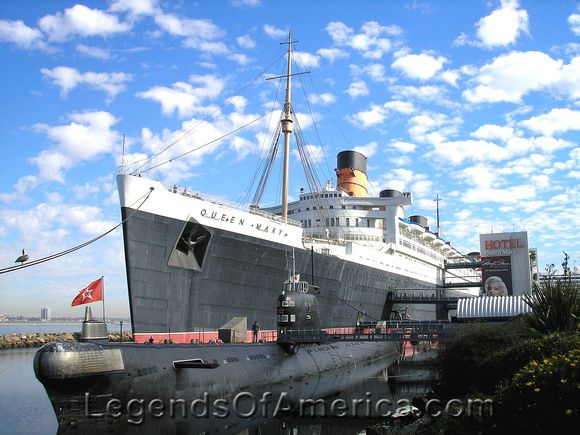
The Queen Mary at Long Beach, CA. Photo by Kathy Alexander.
Resting in Long Beach Harbor is the RMS Queen Mary, a colossal ship that was bigger, faster, and more powerful than the Titanic . The 1,000-foot ship began her life when the first keel plate was laid in 1930 at the John Brown shipyard in Clyde, Scotland. The Great Depression held up her construction between 1931 and 1934, but she was finally completed, making her maiden voyage on May 27, 1936.
For three years, the luxury ocean liner hosted the world’s rich and famous across the Atlantic, including the likes of the Duke and Duchess of Windsor, Greta Garbo, Clark Gable, David Niven, Mary Pickford, George, and Ira Gershwin, and Sir Winston Churchill, to name a few. Considered by the upper class to be the only civilized way to travel, she held the record for the fastest-ever North Atlantic crossing.
But, when World War II broke out in 1939, luxury travel immediately ceased, and the ship was transformed into a troopship known as “The Grey Ghost.” During this time, her capacity was increased from 2,410 to 5,500. By the end of World War II, the ship had carried more than 800,000 troops, traveled more than 600,000 miles, and played a significant role in virtually every major Allied campaign. She had also survived a collision at sea, set the record for carrying the most people on a floating vessel (16,683), and participated in the D-Day invasion .
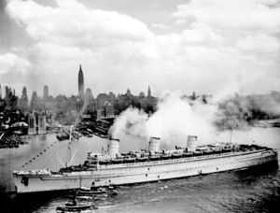
During her service in the war, the Queen Mary was painted a drab grey, hence her nickname, the “Grey Ghost.”
At the close of the war, the ship began to transport more than 22,000 war brides and their children to the United States and Canada. Known as the “Bride and Baby Voyages,” she made 13 voyages for this purpose in 1946.
Its duty to the war complete, the Queen Mary was refurbished and resumed her elegant cruises in July 1947, maintaining weekly service between Southampton, Cherbourg, and New York. However, by the early 1960s, transatlantic cruises were falling out of fashion due to air travel becoming affordable for the masses. In 1963, the ship began a series of occasional cruises, first to the Canary Islands and later to the Bahamas. However, she proved ill-suited for the work without central air conditioning, outdoor pools, or other amenities now commonplace on cruise ships. In 1967, she was withdrawn from service after more than 1,000 transatlantic crossings.
That same year, the Queen Mary was sold for $3.45 million to the city of Long Beach, California , as a maritime museum and hotel. On December 9, 1967, she made her final voyage to Long Beach. After 1,001 successful Atlantic crossings, she was permanently docked and soon became the luxury hotel she is today.
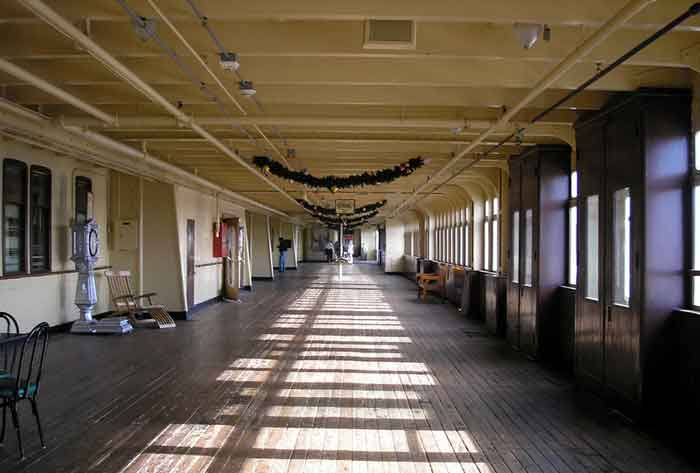
The decks on the Queen Mary still sport their original wood flooring, Kathy Alexander.
Internationally recognized, the historic floating hotel and museum attract thousands of visitors annually. It has also attracted several unearthly guests over the years. Some say the Queen Mary is one of the most haunted places in the world, with as many as 150 known spirits lurking upon the ship. Over the past 60 years, the Queen Mary has been the site of at least 49 reported deaths, not to mention having gone through the terrors of war, so it is no surprise that spectral spirits of her vivid past continue to walk within her rooms and hallways.
The Queen Mary’s engine room is located 50 feet below water level, which is said to be a hotbed of paranormal activity. Used in the filming of the Poseidon Adventure, the room’s infamous “Door 13” crushed at least two men to death at different points during the ship’s history. During a routine watertight door drill in 1966, the most recent death crushed an 18-year-old crew member. Dressed in blue coveralls and sporting a beard, the young man has often been spied walking the length of Shaft Alley before disappearing by door #13.
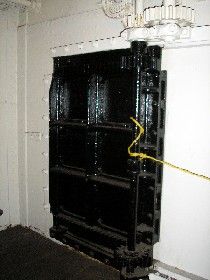
In the area of this heavy door in the Engine Room, we got some very creepy feelings, Kathy Alexander.
Its first and second-class swimming pools are two more popular spots for the Queen’s otherworldly guests. Though neither is utilized today for their original purpose, spirits seemingly are not aware of that. In the first-class swimming pool, which has been closed for more than three decades, women have often appeared in 1930’s style swimming suits wandering the decks near the pool. Others have reported the sounds of splashing and spied wet footprints leading from the deck to the changing rooms. Some have also spied the spirit of a young girl clutching her teddy bear.
In the second-class poolroom, the spirit of another little girl named Jackie has often been seen and heard. Allegedly, the unfortunate girl drowned in the pool during the ship’s sailing days and reputedly refused to move on, as her voice and laughter have been captured here. However, author, and paranormal investigator, Cher Garman points out that there are no known drownings to have ever occurred on the ship, although she says Jackie is there.
In the Queen’s Salon, which once served as the ship’s first-class lounge, a beautiful young woman in an elegant white evening gown has often been seen dancing alone in the shadows of the corner of the room.
Yet more odd occurrences have been made in several first-class staterooms. Here, reports have been made of a tall, dark-haired man appearing in a 1930’s style suit, as well as water running and lights turning on in the middle of the night, and phones ringing in the early morning hours with no one on the other end of the line. In the third-class children’s playroom, a baby’s cry has often been heard, which is thought to be the infant boy who died shortly after his birth.
Other phenomena throughout the ship are the sounds of distinct knocks, doors slamming and high-pitched squeals, drastic temperature changes, and the aromas of smells long past.
These are a few of the many reports of apparitions and strange events at this luxury liner-turned-hotel.
Today, the Queen Mary, listed on the National Register of Historic Places, provides a wide range of guest rooms for travelers and 14 Art Deco salons, tours, restaurants, shops, and exhibits.
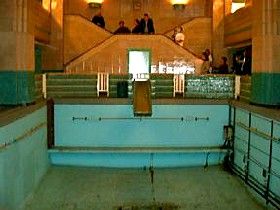
The first-class pool on the Queen Mary is said to host a number of unearthly spirits.
Contact Information:
Queen Mary Hotel and Museum 1126 Queens Highway Long Beach, California 90802 562-435-3511 or 800-437-2934
© Kathy Alexander / Legends of America , updated January 2023.
The Queen Mary: A Haunting Like No Other (more about the only officially sanctioned paranormal investigation of the ship)
Haunted California
Ghostly Legends & Mysteries
California Main Page
11 Facts about the R.M.S. Queen Mary
By kim o'connell | jun 8, 2018.

Even larger than the Titanic and just as elegant, the R.M.S. Queen Mary was once considered the finest ocean liner traversing the Atlantic Ocean. The Queen Mary made exactly 1001 transatlantic crossings in the mid-20th century before it was converted into a hotel in Long Beach, California. Read on for more facts about this famed luxury liner.
1. IT WAS BUILT BY THE SAME FIRM AS THE R.M.S. LUSITANIA .
The Queen Mary was built during an age when countries such as Britain, France, and Germany were all racing to be the top provider of luxury transatlantic travel. Two rival British companies, the Cunard and White Star lines, sought to outdo each other’s ships in terms of size, speed, and amenities. A British shipbuilder called John Brown & Company , commissioned by Cunard, began construction of the Queen Mary —initially known only as Hull Number 534—in December 1930 at a Clydebank, Scotland, shipyard. The company was already well known for having built the R.M.S. Lusitania , which was torpedoed and sunk by a German U-boat in 1915.
2. THE GOVERNMENT KEPT HER CONSTRUCTION AFLOAT—BUT WITH STRINGS ATTACHED.
With the onset of the worldwide Great Depression, construction on the Queen Mary came to an abrupt halt. Eager to spur on the sluggish economy, the British government agreed to give a loan that would allow construction on ship #534 to continue, but only if Cunard and White Star would merge. (Like Cunard, White Star—famous as the owner of the ill-fated R.M.S. Titanic —had fallen on hard times.) In 1934, the new Cunard-White Star Line was born, and construction on the ship immediately resumed. As part of the merger, the government stipulated that a sister ship to the Queen Mary also be built—which was to become the Queen Elizabeth —so the two ships could together dominate transatlantic travel. The Queen Mary ’s $30 million price tag would be the equivalent of more than $560 million today.
3. THE SHIP'S NAME WAS SHROUDED IN MYSTERY.
While it was under construction, the ship’s name was a closely guarded secret. On September 26, 1934, Britain’s King George V and his wife, Queen Mary of Teck, were on hand in Southampton , England, to christen #534 after the royal consort herself. "As a sailor I have deep pleasure in coming here today to watch the launching by the queen of this great and beautiful ship,” the king said to the thousands of cheering onlookers gathered on the docks:
“We come to the happy task of sending on her way the stateliest ship now in being. It has been the nation’s will that she should be completed, and today we can send her forth no longer a number on the books, but a ship with a name in the world alive with beauty, energy and strength.”
The queen then cut a ribbon and broke a bottle of wine to christen the ship. The R.M.S. Queen Mary began its maiden ocean crossing two years later, on May 27, 1936, from Southampton to New York. (R.M.S. stands for "royal mail ship"—all vessels with this designation had a government contract to carry British mail.)
4. SHE WAS ONE OF THE MOST POWERFUL SHIPS EVER BUILT.

At 1018 feet long and more than 81,000 tons, the Queen Mary was one of the largest ships ever built at the time, second only to the French liner Normandie . ( Titanic , by comparison, was only 883 feet long and about 46,000 tons.) Queen Mary ’s rudder, at 150 tons, was then the largest ever built. Its amidship dining room, located between two of the ship’s three funnels, was the largest room ever constructed inside a ship at the time—at 143 feet long and spanning the vessel's entire width, it could seat 800 first-class passengers at once. Two dozen boilers and four sets of turbines generating 160,000 horsepower fueled four propellers, which turned at a rate of 200 revolutions per minute. Because of its technological innovation, a 1932 Popular Mechanics article called the Queen Mary “the Sovereign Ship of the Seas.”
5. THE QUEEN MARY 'S LUXURIOUS AMENITIES ATTRACTED ELITE PASSENGERS.
Inside, the ship boasted five dining areas, two swimming pools, beauty salons, and a grand ballroom, which attracted wealthy passengers and celebrities to the ship’s first-class accommodations. A first-class breakfast menu included eggs and pastries as well as onion soup gratinée and broiled kippered herrings. An Art Deco mural in the main dining room used a crystal model of the ship to track its progress between England and New York. Royalty, Hollywood stars, notable business magnates, and well-known politicians all traveled on the Queen Mary , including the likes of Clark Gable, Bob Hope, Queen Elizabeth II, Winston Churchill—and even comedy duo Laurel & Hardy and Desi Arnaz of I Love Lucy fame. In addition to first-class, the ship also had “tourist class” (a.k.a. second-class) and third-class accommodations, with the most cramped quarters reserved for the crew, who sometimes bunked 10 to a room.
6. THE QUEEN MARY HELD THE BLUE RIBAND FOR MORE THAN 15 YEARS.
In August 1936, clocking in at just over 30 knots, the Queen Mary nabbed the Blue Riband , an unofficial accolade for the ship crossing the Atlantic with the highest average speed, making the crossing in just four days . ( Riband is an archaic word for “ribbon.”) Her rival the Normandie briefly captured the title in 1937, but Queen Mary earned it back the following year, and held onto the speed record until 1952, when it was eclipsed for good by the S.S. United States , an American passenger liner whose record of over 35 knots is still unmatched by any ship of its class. (It’s probably no coincidence that Blue Riband candy , a chocolate-covered wafer now owned by Nestle , emerged in the UK in the late 1930s.)
7. THE SHIP GOT A NEW LOOK FOR WORLD WAR II.

In September 1939, the Queen Mary had just crossed to New York when the British government ordered that it remain in port there until further notice. Eventually, Allied forces determined that the Queen Mary , along with the Normandie and Queen Elizabeth , also docked in New York, would become troopships to carry soldiers to various battlefronts. The ship’s hull and funnels were painted battleship gray, earning the ship the nickname the “ Grey Ghost .” It was also outfitted with a degaussing coil, which altered the ship’s magnetic field and helped to protect against the enemy’s use of magnetic mines. These highly valuable troopships were capable of moving as many as 15,000 soldiers at a time.
8. THE SHIP WAS INVOLVED IN A TRAGIC ACCIDENT.
British forces assigned the H.M.S. Curacoa , built during the First World War, to serve as an escort ship for the Queen Mary during World War II. On October 2, 1942, the two ships were scheduled to rendezvous off the coast of Ireland. As was typical during wartime, the Queen Mary was on a zig-zag course meant to throw off pursuit by enemy U-boats. Historians believe the cruiser Curacoa was on a straight course—and the two were headed right for each other. Before the ships’ crews could take evasive action, the Queen Mary collided with the Curacoa , cutting it in two and sending it to the ocean floor. Although more than 100 sailors were rescued, 337 men were killed. A British sailor on the Queen Mary named Alfred Johnson later recalled , “I said to my mate … ‘I'm sure we're going to hit her.’ And sure enough, the Queen Mary sliced the cruiser in two like a piece of butter, straight through the six-inch armored plating.”
9. AFTER THE WAR, SHE RECEIVED A MODERN UPGRADE.
Once the war ended, the Queen Mary required 10 months of work to be retrofitted so that she could go back into commercial passenger service. The Cunard-White Star Line added more berths in all three classes, as well as air conditioning. She returned to the seas in July 1947, along with her sister ship the Queen Elizabeth , and remained a popular oceangoing vessel for the next two decades.
10. SHE HAD A CAMEO IN A FRANK SINATRA MOVIE.
A 1966 action-adventure film written by Twilight Zone writer Rod Serling and starring Frank Sinatra, Assault on a Queen , takes place in part on the Queen Mary . Sinatra plays a bandit who gets involved in an elaborate heist to rob the liner during an ocean crossing. The film’s score is by legendary jazz musician Duke Ellington. Despite the promising setting, reviews of the performances were tepid. "Sinatra swashbuckles like a pirate is supposed to. He's quick with the bitter or sarcastic remark and he evokes some pity. Miss Lisi [Virna Lisi, Sinatra's bombshell co-star] is lovely to look at, even though she's not called on for too much acting," The Miami Herald wrote .
11. THE QUEEN MARY IS NOW A FLOATING HOTEL.
By the late 1960s, the popularity and ease of air travel had effectively signaled the end of the great transatlantic passenger liners. Cunard (which had reverted to its pre-merger name) decided to sell the Queen Mary , which departed on its final cruise on October 31, 1967. After navigating nearly 3.8 million nautical miles, the ship docked in Long Beach, California, on December 9 of that year, where it has been ever since. The iconic ship is now a floating luxury hotel , museum, and tourist attraction, complete with three restaurants, shopping, and dining. The Queen Mary Heritage Foundation is now developing a museum and educational facility to preserve and enhance the ship’s remarkable story.
- Weekly Newsletter
California's Boating & Fishing News

The RMS Queen Mary, an ocean liner, sailed the North Atlantic Ocean from 1936 to 1967, before retiring and taking up a mooring in Long Beach Harbor. Shutterstock image.
The History and Hauntings of the Queen Mary
LONG BEACH—On Dec. 9, 1967, Long Beach city purchased the historic British transatlantic liner, the Queen Mary . The ship remains moored in Long Beach Harbor and functions as a maritime museum, meeting center, hotel, and a haunted attraction.
The Queen Mary was built in 1930 in Clydebank, Scotland, by Cunard Line, a British cruise line based at Carnival House in Southampton, England. The project was initially known as job #534, and due to the economic setback induced by the Great Depression, the ship’s construction was finished in three and a half years and cost 3.5 million pounds sterling which is equivalent to $4.8 million in today’s USD.
Cunard decided to name the ship after Queen Victoria, but as legend has it, Cunard directors went to ask King George for his blessing of the ship’s proposed name, according to the Queen Mary website.
“We have decided to name our new ship after England’s greatest Queen,” says the article. “But King George’s reported response was, “My wife [Queen Mary] will be delighted that you are naming the ship after her.”
On May 27, 1936, the Queen Mary set sail on her maiden voyage, departing from Southampton, England. The ship was constructed with five dining halls and lounges, two cocktail bars, two pools, a grand ballroom, a squash court, and even a small hospital. The Queen Mary had set the bar for transatlantic travel, catering to the rich and famous, who were typically the only people who traveled at that time.
The Queen Mary retired in 1967 when she became a Southern California attraction after she found her current home in the Long Beach Harbor. In her heyday, The Queen Mary carried 2.2 million passengers during peacetime and 810,000 military personnel in the Second World War. Since her retirement in Long Beach, the ship has seen an estimated 50 million visitors.
The day the Queen Mary was christened in 1934, a well-known English psychic by the name of Lady Mable Fortiscue-Harrison predicted, “the Queen Mary will know her greatest fame and popularity when she never sails another mile or carries another fare-paying passenger,” according to the Queen Mary website.
Today, the Queen Mary is known as a haunted attraction. “The unique history of the ship allows us to offer a one-of-a-kind and authentic experiences that delve into the paranormal, from evening tours and ghost investigations to overnight stays in our haunted Stateroom, B340,” said Chris Wilmoth, Director of marketing at the Queen Mary to Travel and Leisure .
Share This:
- ← On Board with JR Johnson
- The Log Abroad in Oglala Lakota Nation →
2 thoughts on “ The History and Hauntings of the Queen Mary ”
We are delighted to see Queen Mary ship from outside decked in Long Beach, Los Angeles today. It resembles just like the historic Titanic ship and very beautiful to look at it.
I stayed on the Queen Mary in November 2012 as a birthday present and was there for 4 days and 3 nights. I was in Room A 131. I had a digital camera at the time and could not look at the actual photos until I got home and loaded them on my computer. There were orbs everywhere, a common occurrence on this ship I understand. However my experiences were anything but common, at least to me. Let me be clear. I did not go to the Queen Mary to ghost shop, I am very interested in British Royalty and wanted to tour the Windsor Suite and see other places of interest that related to the British Royal Family. I got to accomplish that while I was there. The Queen Mary was hosting an event featuring gowns of the late Princess Diana. I got to attend this event as well.
On my first night, the TV turned on and off by itself about three times. I just attributed it to faulty batteries and it did not happen again during my stay.
However I was awakened in the middle of the night by the sounds of a party. Loud voices, laughter, clinking glasses… I looked out the porthole which overlooked the water and there were no party boats around, in fact nothing was near. I looked out in the hallway and could see and hear nothing. When I inquired at the front desk, the next day, I was told the room next to mine was empty and had been all weekend.
Also that morning the light in my bathroom burned out so I reported it to the front desk at the same time and they said they would have a maintenance worker repair it. I went and had breakfast and came back to the room. The light had been repaired. I was in the room about 30 minutes getting ready to go on the self-guided tour when a maintenance man knocked on my door and said he was there to fix the bathroom light. When I told him it had already been repaired, he looked puzzled and showed me his work order. He said it was his first job of the day. Who and how did the light get repaired?
On the self guided tour, I was pretty much alone for much of the time. I got to the steps to the Isolation Ward and could not make myself go down the steps. I felt uneasy and unsafe as if I was not alone. I felt closed in even though did not go down the steps. I continued on to the bridge and around the ship for I really do not know how long but got turned around and needed to find a rest room. I asked a painter near the back of the ship to assist and he showed me where a staff stairwell was near the stacks that led to a rest room near the playroom inside. When I got back to the outside of the ship, there was no evidence of a painter or fresh paint anywhere. The painter had overalls and dark hair with a mustache. I did ask a woman who was walking near the lifeboats if she had seen a worker or painter and she said no.
When I went on the guided night Ghost tour, nothing out of the ordinary happened in the usual places such as the swimming pool, vortex or Door 13. I took several photos ( when later loaded showed several orbs ). However when I got into the boiler room, my camera battery went dead. It was a new battery for the tour so it should have lasted. The tour guide said that happens frequently. When we got out of the boiler room to some common area, the battery worked great and performed perfectly for the rest of the evening.
Lastly was the propeller room. I was still with the tour group but got a very bad feeling when looking at this propeller. I felt closed in, breathing seemed more difficult and I felt unsafe. I had to get out of there quickly and actually had to exit the ship and go outside before the feeling went away.
I had a lovely birthday brunch in the Main Dining room and left quite happy. When I got home and saw my photos, I was amazed.
I have the photos and you can certainly have them for your research and website if you wish. You may use my story and I will gladly answer any questions that you may have.
Nora Graves [email protected]
Comments Cancel reply
Your email address will not be published. Required fields are marked *
Your Thoughts are Appreciated
Save my name, email, and website in this browser for the next time I comment.

- Queen Mary Facts
Queen Mary History
- Queen Mary At War
The need for Queen Mary

In the 1920s, Cunard identified the need to replace the ageing Mauretania on the transatlantic run. Initially they line wanted a ship of similar scale to Aquitania , although mechanically modernised.
As the design for the new ship evolved, the dimensions grew into a liner of over 310m (1,019 ft) long and 81,000 tons, making it a contender for the world’s largest passenger ship. It was at this point that Cunard committed to the idea of building not one but two giant ocean liners, with the goal of commencing the first ever two ship weekly transatlantic service.
On 31 January 1931 the keel was laid at the John Brown Shipyard in Clydebank, Scotland on Hull 534. Construction of the ship progressed fast, with launch originally scheduled for May 1932.
However, on 11 December 1931 Cunard announced that work on the ship was to be suspended, due to the crippling effect of the Great Depression. Cunard and the British shipping industry had been hit hard by the lack of international travellers, as well as a reduction in cargo revenue.
The suspension of the build meant John Brown was force to lay off its huge workforce indefinitely. Cunard’s major rival, White Star Line, was also facing economic difficulties. White Star approached the British Government for assistance and financial support to keep its services running.
Cunard, desperate to complete Hull 534, also approached the government for assistance. The British Government were particularly concerned about the state of the British shipping industry. Germany, Italy and France had all eclipsed Cunard and White Star Line with new ships that included the legendary Bremen, Europa (Germany), Rex (Italy) and Normandie (France).
In December 1933 a British Government deal was reached, whereby the two companies were required to merge to form Cunard-White Star Line. In return, the government provided the new company – Cunard-White Star, with a £9.5 million loan.
This allowed Cunard-White Star to recommence construction on Hull 534 and also commence planning works for a running mate. In April 1934 work began again on Hull 534. This was a welcome relief to the local area and thousands of people flocked to Clydebank in search of work at the shipyard.
Early Service Life
With the workforce back aboard the ship, work progressed quickly. The ship was ready for launch by August 1934 and the ship was launched as R.M.S. Queen Mary on 26 September by HM. Queen Mary, with HM. King George V by her side.
The ship was then moved to the fitting out basin, allowing her interiors to be completed. This saw a magnificent art-deco interior installed aboard the liner, breaking the long tradition of Edwardian interiors on the Cunard express service and taking the travelling public by storm.
In March 1936 Queen Mary set sail for her sea trials, which she completed by May of that year. Queen Mary’s maiden voyage departed on 27 May 1936; sailing on the Southampton to New York (via Cherbourg) service. At this stage, France held the speed record for the Transatlantic crossing, thanks to the French Ocean Liner SS. Normandie.
Despite Cunard declaring that the Queen Mary was not designed to race against Normandie, expectations were high that the Cunard ship would try to break speed records on its maiden voyage!
During the final days of what would have been a record breaking maiden crossing, a thick fog descended upon the ship and Queen Mary was slowed, making a successful record attempt impossible.
However, in August Queen Mary undertook a record breaking westbound crossing, capturing the Blue Riband for the first time from Normandie. Normandie later reclaimed the speed record from Queen Mary, however in August 1938 Queen Mary set new records for both the eastbound and westbound crossings – this time holding the record until 1952!
Queen Mary made her last peacetime voyage from Southampton on 30 August 1939. Upon arrival in New York, the ship was berthed in the relative safety of the US port while World War II commenced in Europe.
She remained here until the end of the year as the war escalated, and the British Admiralty decided what role the ship would play in the coming months and years.
Queen Mary’s War Service
Having been joined in New York by Normandie and the newly launched Queen Elizabeth, for a brief period three of the world’s largest transatlantic liners sat idle together in the harbour. The trio were also joined by the second Mauretania .
In March 1940 Queen Mary was called into military service. She sailed from New York bound for Sydney, Australia to prepare her for her wartime duties.
Upon her arrival in Australia, she was sent to the Cockatoo Drydock on Cockatoo Island, and work commenced to convert the ship into a troop carrier. Queen Mary’s luxury fittings and interior were removed and safely stored. In their place, thousands of bunks and hammocks were installed; while the ship’s large public areas were rearranged into mess halls and offices for military purposes.
To protect the ship, small caliber guns were fitted on the Queen Mary, including anti aircraft guns on her open decks. But it was the Queen Mary’s speed that would be her main protection against possible attack. To that end, the liner was ordered to sail at high speed when carrying troops, to avoid danger from enemy shipping.
On 4 May 1940, Queen Mary departed Sydney with troops of the Australian Imperial Force on board, bound for the River Clyde, Scotland. After operating on this route, and various others, Queen Mary concentrated on voyages between Australian ports and Singapore to the Gulf of Suez.
When the United States of America entered the war on the side of the allies in 1941, Queen Mary’s trooping capacity was increased to over 15,000 people.
Following further refurbishment, she entered service in her new role as a mass transport of troops on the North Atlantic. It was on this service that Queen Mary carried the most people ever transported by a ship – 16,683 people in one voyage – a record she still hold to this day
On 2 October 1942, while Queen Mary was steaming at 28-knots in a zigzag pattern the ship collided with her escort the HMS Curacao. The accident tragically resulted in the smaller escort being cut in two, and sinking. Queen Mary’s bow was badly damaged, and between October and December 1942 she was repaired at Boston.
At the end of the War, Queen Mary was used in the urgent and time consuming task of repatriating thousands of servicemen. Following this duty, the ship was utilised on the war bride service, being employed in this capacity from January to September 1946.
Queen Mary and her sister Queen Elizabeth were the largest troop ships in history. Their ability to transport upwards of 16,000 people per crossing made a significant impact to the allies war effort.
In fact, Winston Churchill himself acknowledged the Cunard Queens, crediting them for helping reduce the war, saying in a letter to Cunard Chairman Sir Percy Bates:
Without their aid, the day of final victory must unquestionably have been postponed.
Post War Passenger Service
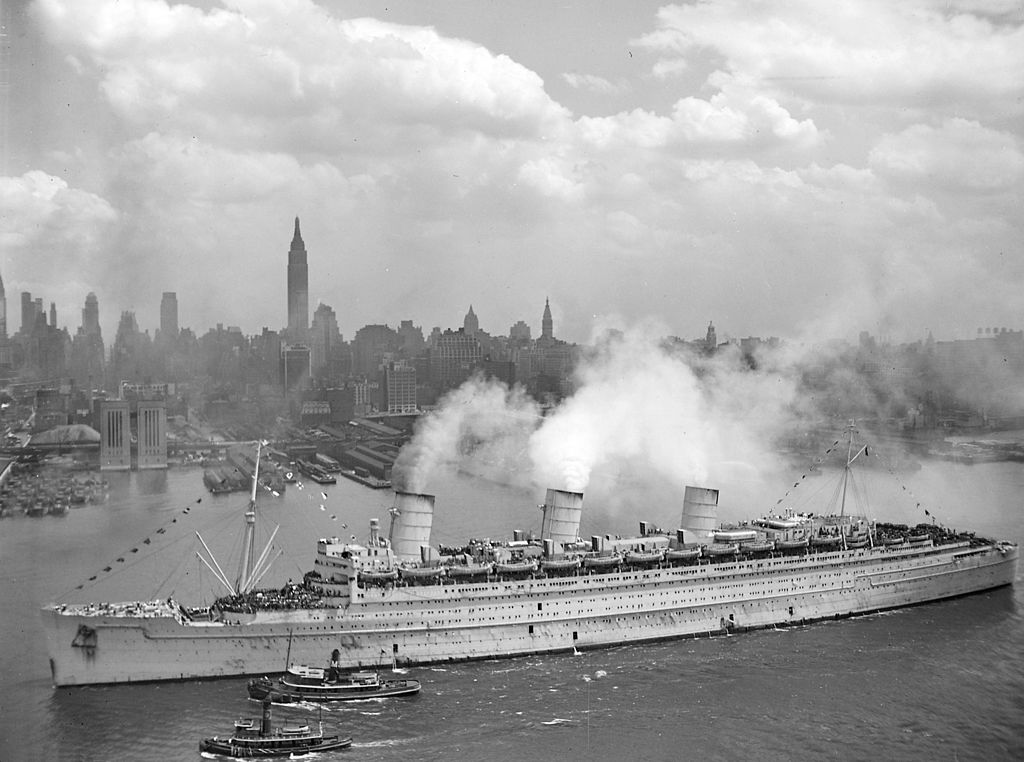
Queen Mary’s first post-war voyage departed on 31 July 1947, sailing from Southampton to New York. Queen Mary remained a popular liner during the coming decade. Paired with Queen Elizabeth, the liners were able to complete the world’s first two-ship weekly transatlantic service.
In 1952, Queen Mary lost her speed record to the SS United States. The American’s had witnessed the success of the large Cunard liners as troop ships during World War II. Furthermore the US Government had needed to charter the Queens during that conflict. With the Cold War in full swing, they supported the United States Lines in building SS. United States, a ship that remains to this day as the fastest ocean liner ever constructed.
Despite this new competitor, Queen Mary remained popular. Business was good for most of the 1950s, however air travel was becoming increasingly dominant with fast piston airliners such as the Lockheed Constellation and Douglas DC6 attracting larger numbers of travellers.
In March 1958 Queen Mary was fitted with Denny-Brown stabilisers. Originally trailed aboard the smaller Cunard liner Media , these stabilisers greatly helped Queen Mary’s stability and addressed a ‘rolling problem’ the ship had endured for much of her career.
In 1958, Boeing’s 707 jet made its first commercial service across the Atlantic for Pan Am Airways. The introduction of fast commercial jets signalled the beginning of the end of the transatlantic liner.
By the early 1960s, there was increasing speculation that Queen Mary would retire from Cunard service. Commencing in December 1963 Queen Mary increasingly undertook pleasure cruises. However the ageing Queen Mary was not designed for cruising. Her art-deco interiors were from a bygone era; while her deep draft and lack of air conditioning made her unsuitable for this role.
The ship, along with much of the British Merchant Marine, suffered further during the Seaman’s Strike of 1966. The strike cost Cunard millions of pounds and ultimately meant retaining the loss making Queen Mary was impossible.
Queen Mary’s Retirement
Queen Mary was eventually sold to Long Beach California to become a floating hotel. She sailed on her last direct transatlantic crossing on 16 September 1967, from New York to Southampton. The ship then undertook her longest ever peacetime voyage; sailing around Cape Horn before docking in Long Beach.
She was extensively refurbished – work that included replacing the original funnels and decommissioning her steam turbine propulsion system, and opened in the early 1970s.
Today Queen Mary operates as a floating hotel, conference centre and museum. She is berthed near the new Carnival Cruise Line terminal and is often used as a hotel by guests travelling aboard a Carnival Cruise Liner.
Image source: Wikimedia Commons.
Chris Frame Official
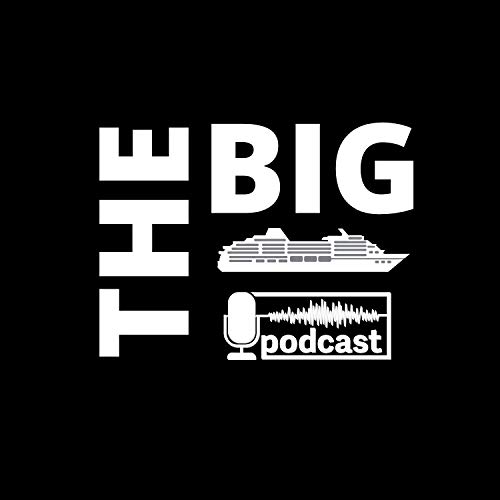

How Big Is the Queen Mary Compared to a Cruise Ship?
By Michael Ferguson
The Queen Mary is an iconic ocean liner that has been sailing the high seas since 1936. It’s a majestic ship, and its size and grandeur make it stand out from the rest. But how big is the Queen Mary compared to a modern cruise ship?
The Queen Mary measures 1,019 feet long and 118 feet wide. She is 181 feet tall from keel to masthead, and weighs in at 82,000 tons.
By comparison, many of today’s modern cruise ships measure over 1,100 feet in length and can weigh upwards of 150,000 tons. That means that the Queen Mary is slightly smaller than many of today’s modern cruise ships.
But size isn’t everything when it comes to comparing the Queen Mary to a modern cruise ship. The Queen Mary was designed with luxury in mind and features amenities like a grand ballroom, a two-level promenade deck, and even an indoor swimming pool. Many of these features can be found on modern cruise ships as well.
The Queen Mary also has its own unique history that sets it apart from other vessels. It was originally designed as a transatlantic passenger liner before it was converted to a troopship during World War II. After the war ended, the vessel returned to civilian service before being retired in 1967.
10 Related Question Answers Found
How big is the queen victoria cruise ship, how big is the titanic compared to a cruise ship, how big was the titanic compared to a cruise ship, how big is the titanic compared to today's cruise ship, what is considered a large cruise ship, how big is the crown princess cruise ship, how big was the titanic compared to a modern cruise ship, which is the largest princess cruise ship, how big is the titanic compared to a modern cruise ship, what is the largest princess cruise ship, backpacking - budget travel - business travel - cruise ship - vacation - tourism - resort - cruise - road trip - destination wedding - tourist destination - best places, london - madrid - paris - prague - dubai - barcelona - rome.
© 2024 LuxuryTraveldiva

Queen Mary 2: An ode to the last of her kind
From an early age I’ve been lucky enough to explore the world via ship, so I guess it was only natural for me to delve into the history of cruise ships and learn about their precursors, the grand ocean liners of the 20th Century.
I read books and watched documentaries to learn about these majestic ships competing against one another as they plied the North Atlantic sailing from Europe to America.
There was just something about them that has interested me to this very day, with ships such as Queen Elizabeth 2 , Queen Mary and Normandie capturing the attention of the general public. They weren’t just ships, they were symbols of national pride carrying people from all walks of life. Transporting immigrants as they sailed to the New World, troops to distant battlefields far from home, and even the rich and famous as they crossed the Atlantic in style.

Queen Mary 2
Yet, as someone who started cruising in the early 21st Century, I felt I’d somewhat missed the boat. The advent of commercial air travel made traditional ocean liners a thing of the past, with most either being scrapped or acting as cruise ships with one of the most iconic Cunard’s Queen Elizabeth 2 , being taken out of service in 2008. Just after I started cruising with my family.
I soon learnt that Cunard commissioned another ocean liner to replace the QE2 . This turned out to be the iconic Queen Mary 2 , which remains world’s last remaining ocean liner in service today running a regular transatlantic service from Southampton to New York. I made it a personal goal to sail on this iconic ship, yet the chance eluded me for many years. With the joys of university, new jobs and the COVID-19 pandemic, it would take me until 2022 before I could say I’ve sailed on an Ocean Liner.
Was it worth the wait? Absolutely.
History aside, what makes her so special? Over these next few paragraphs, I’ll highlight some things I felt set QM2 aside from her cruise ship counterparts and hopefully give you an idea if she’s a ship you’d like to sail on.

Is being an Ocean Liner that different to a Cruise Ship?
You’ll hear time and time again that QM2 is an ocean liner and not a cruise ship. I’ve read enough books about her to know that she is faster than a cruise ship, her hull is thicker and her lifeboats are situated higher above the waterline than on a cruise ship. Yet to be honest, I don’t think I realised how big an impact her being an ocean liner has on your experience until I stepped onboard.
Most cruise ships tend to have the same standard design with the theatre being right at the front, the buffet being situated high up at the back of the ship and things like that. Yet QM2 well and truly breaks this convention as she was designed to cross the Atlantic during even the roughest of seas, so her layout was designed with that in mind.
Most of the large public areas are situated on the lowest decks of QM2 , minimising the amount of pitching you’ll feel as QM2 slices through the waves. For instance, the Kings Court Buffet is situated midships on the promenade deck, which much lower down than you’d find it on a typical cruise ship. This means that even in the choppiest of seas, the pitching of the ship will be felt far less intensely as you’re closer to QM2 ’s centre of gravity so you can make sure your cooked breakfast doesn’t fall off your plate during a winter transatlantic crossing.
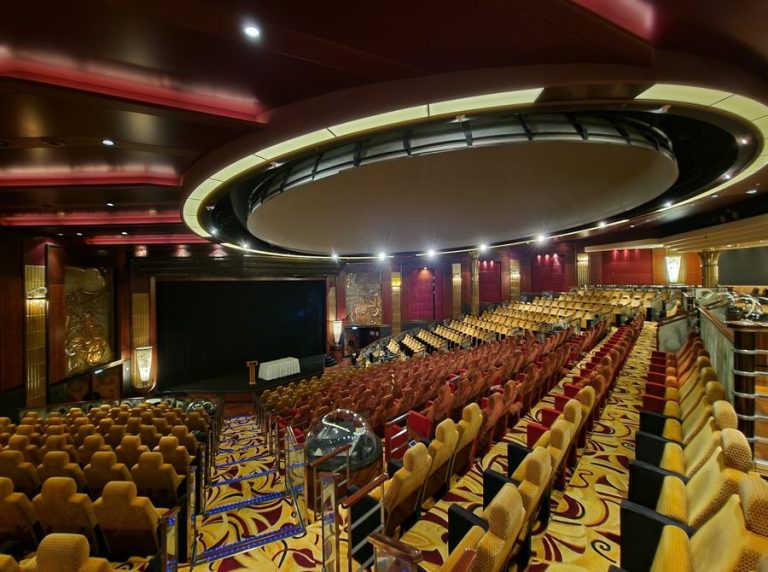
Queen Mary 2 Theatre
However, this does that mean that even if you think you have the general layout of a cruise ship sorted, you’ll still get quite lost on the first few days of your voyage on QM2 ! This is also compounded by the fact that QM2 has lots of corridors and half decks to help you get from A to B. This can lead to some amusing moments such as when I was utterly perplexed as to the location of the Illuminations Theatre. Yet after speaking to a member of the crew, I found out it was actually situated along a long corridor, off the Grand Lobby that I didn’t know existed! However, this exploration was part of the fun as I felt like I was getting the chance to get to know this unique vessel. She did make sense in the end, but I’d recommend leaving a bit of time on those first few days when getting to events!
Expect a traditional but unpretentious atmosphere.
QM2 and Cunard as a whole are renowned for offering a traditional, formal cruise experience. Yet one thing I can’t stress enough is that a voyage on QM2 (or any Cunard Ship for that matter) is not filled with pretentious individuals or an uptight atmosphere. Instead, you’re travelling with likeminded passengers who simply want to explore the world on a classic ship that invokes the golden era of ocean liner travel. The amount of interesting people I met whilst having dinner with my mum in the Britannia Restaurant was fantastic and I got to know people from a range of countries including Germany, the US and a few Brits along the way too!

Yes, Cunard is formal in the evenings and there’s no escaping that, but it doesn’t mean you can’t have fun as well! Although I’m in my mid-20s, I absolutely loved dressing up formally and seeing everyone else dressed to impress in their suits and ballgowns on Gala Nights. It helped make every evening feel special and I hope they continue to keep the formal aspect as it helps set Cunard apart from other lines.
This traditional feel is present throughout the entirety of QM2 , with a perfect example being the Queen’s Room – the largest ballroom at sea! This is an incredible space onboard QM2 with it truly coming into its own during the aforementioned Gala Nights. Here, you can dance the night away with the backing of a full jazz band and two talented singers.
Now if you’re someone like me who has two left feet, it’s just as fun catching up with your friends or family whilst drinking your favourite cocktail and admiring the skill of your fellow passengers. The musicians deserve a particular mention as they performed a vast array of music in styles to suit various dance types and were a true joy to listen to. Granted I wasn’t expecting to hear a jazzy version of Lady Gaga’s Alejandro onboard QM2 but I loved it! Even if this isn’t how you’d typically spend an evening on holiday, I’d recommend giving it a go on one of the Gala Evenings onboard. Seeing a ballroom full of people dancing is something I’ve never seen before in my day-to-day life, with the exception of Strictly Come Dancing, so it felt like a unique and special moment to be to experience.
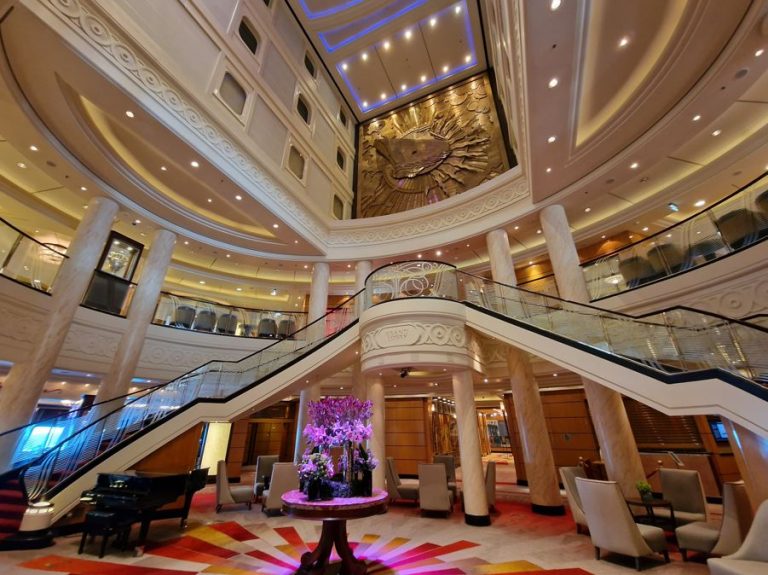
The Queen’s Room is also hosts Cunard’s signature afternoon tea which is another must onboard QM2 . Every afternoon, you get the chance to enjoy tea, sandwiches, cakes and scones served by white gloved waiters all whilst you listen to a talented musician play. The food you get is incredible and it’s just a wonderful, civilised atmosphere which made me feel as if I was stepping back in time!
It did feel quite surreal listening to a string quartet and enjoying afternoon tea whilst sailing through the Mediterranean Sea, but I absolutely loved it. It’s definitely worth doing at least once as the staff really help make the whole experience feel special and I always left feeling super relaxed – albeit quite full after enjoying one too many of those fabulous cakes.
Sea Days are QM2’s Speciality.
As QM2 offers regular transatlantic crossings, she has to keep her passengers occupied during the seven days it takes for her to cross the Atlantic, with it occasionally being too poor weather outside for passengers to comfortably enjoy the outside decks. This may seem like some people’s worst nightmare as it’s often expected you’d feel bored or cooped up on these type of sea days yet QM2 is designed to make the journey feel as important as the destination. So, Cunard packs tonnes of varied activities on each sea day of your voyage, so much so there was often too much to do and I could never see everything I wanted!
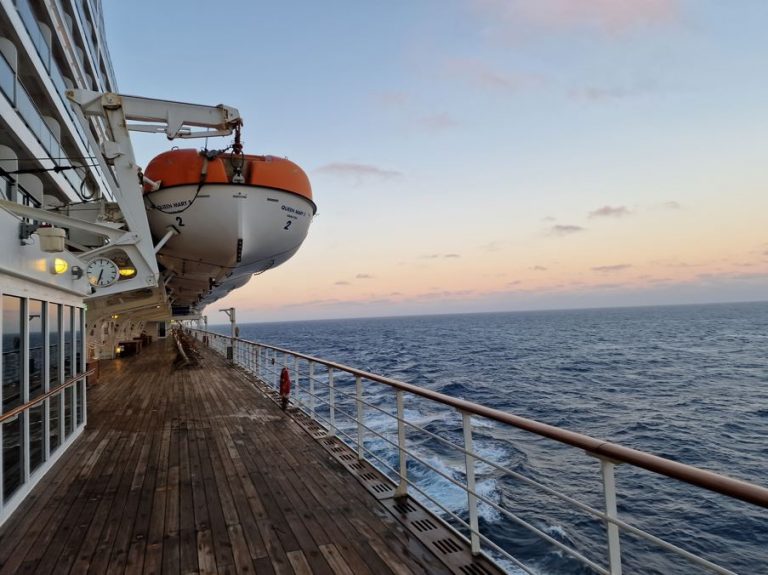
QM2 navigation
A personal highlight had to be Cunard’s Insights lecture series which gives you the chance to listen to experts in their relative fields give you insights into a rich variety of topics! In the space of two days, I learnt about Catacombs under Rome, the Northern Lights, the biology of Sharks, Salvador Dali and the intricacies of the changing of guard at Buckingham Palace! You can even explore the wonders of the universe in the first planetarium at sea on select sea days. As a result, I felt that my days at sea onboard QM2 were as enriching as they were relaxing. It’s all included within your fare and it’s a fantastic chance to learn something new or do something you’d never normally consider!
Alternatively, if you just want to switch off and relax, you can always just sit back with your favourite book and a good drink in one of the many lounges onboard. Personally, I’d choose the Carinthia Lounge as they do some great coffees as well as occasionally offering trivia sessions throughout the day too! If you’ve forgot to pack a book onboard, then head to QM2 ’s library which as the largest collection of books at sea! It’s completely up to you how you spend each day of the voyage. If you wanted a packed schedule, you could fill it with lectures, quizzes and performances or you could just sit back and watch the world pass you by. Her Open Decks are as remarkable as her interior.

Queen Mary 2 – Cunard
As we were sailing through the Mediterranean rather than the Atlantic, we were lucky enough to enjoy sunny days for the entirety of our voyage. This enabled us to make the most of the fabulous open decks of QM2 . In keeping with the interior spaces onboard, her open decks are wonderfully traditional. A great spot to relax out in the sun is around QM2 ’s tiered stern which were particularly popular, offering two pools and comfy sunlounges to take in the Mediterranean sunshine. The design feature is sadly lacking on modern day cruise ships, with this space being occupied by cabins and aft facing balconies so I felt especially lucky to be able to enjoy these large amounts of aft facing open deck space onboard QM2 .
A true stand out feature however has to be QM2 ’s full wraparound teak promenade deck. I just loved walking around here and taking in the sea views or doing a few laps with my mum as we attempted (in vain) to work off our fabulous dinner in the Britannia Restaurant. Dotted along the promenade are these wonderful, padded steamer chairs which I found to be a great way to relax on a sea day with my book whilst listening to the waves lap against the side of QM2 ’s hull. What made it even better was the fact that Cunard ran a drinks trolly on the promenade deck, so you didn’t even need to go inside for a drink!
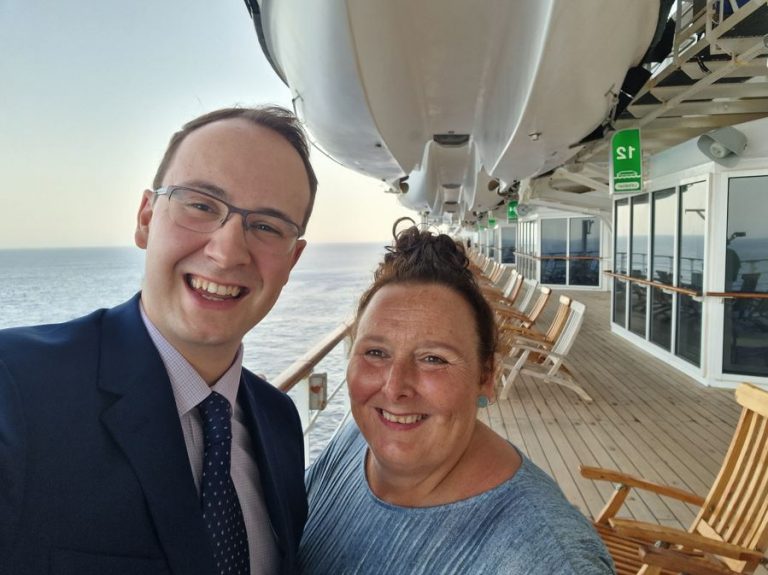
Me and Mum on QM2
The maritime geek in me absolutely adored the forward section of the promenade as you got to enjoy some incredible views that cruise ships simply don’t have. This includes the ‘Commodores Cufflinks’ which are actually spare propeller blades for QM2 ’s mighty azipod propulsion system which I found incredibly cool. Facing forward, you can also appreciate the scale of QM2 ’s bow whilst behind you, you can see the whole of QM2 ’s forward superstructure up to the bridge!
This being said, my favourite spot is ‘the Observation Deck ’ way up on deck 11 at the very front of the ship and almost felt like a ‘secret deck’ as not many people seemed to realise you can step out here. As this vantage point is situated above the bridge, it also wraps round the side of the ship so you can look all the way down the side of the ship as well as take in the sheer size of QM2 ’s bow! This is definitely a spot I’d recommend visiting during any periods of scenic cruising during your voyage as the views you would get from here are incredible.
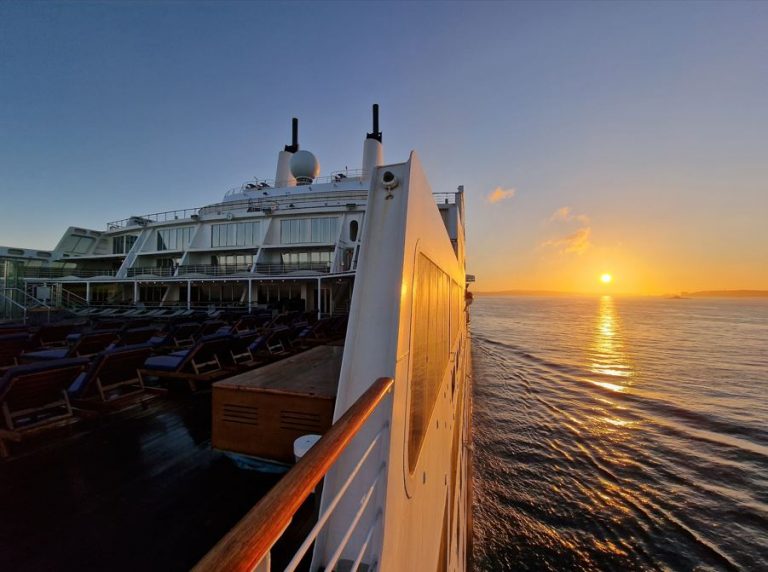
Queen Mary 2 Cunard
Since sailing on Queen Mary 2 I’ve come to understand why she has such a loyal following across the world. Stepping onboard, I felt that she was continuing the long and illustrious history of ocean liners and taking that experience into the modern era. QM2 is not a ship for everyone as she lacks the facilities of modern-day resort style ships. Her layout can feel a little quirky at times whilst the formal and traditional atmosphere might not be to everyone’s taste. Yet these are the exact reasons why I chose to sail on her.
What is quirky to some was exciting for me as I spent days of our voyage exploring every nook and cranny this ship offered whilst getting hopelessly lost in the process. The traditional experience gave me a chance to experience a style of cruising that is fast becoming rarer with each passing year. The formality of evenings onboard QM2 never fazed me as I relished the opportunity to swap my normal work-based attire of a lab coat to a suit and head to the Chart Room for cocktails and canape’s.
A trip on Queen Mary 2 is a voyage unlike any other as she herself is unique. There will never be another like her whilst she is in service and I count myself so luckily that I got the chance to sail on Queen Mary 2 – the last Ocean Liner in service.
Don’t miss more updates, news and reviews of Cunard on Cruising Journal with photos, videos and cruise offers.
Want to Know more about Cruising with Matthew?
Check out his: facebook, instagram and youtube –> cruising with matthew; twitter @matthewcruises; email [email protected], cruising with matthew.
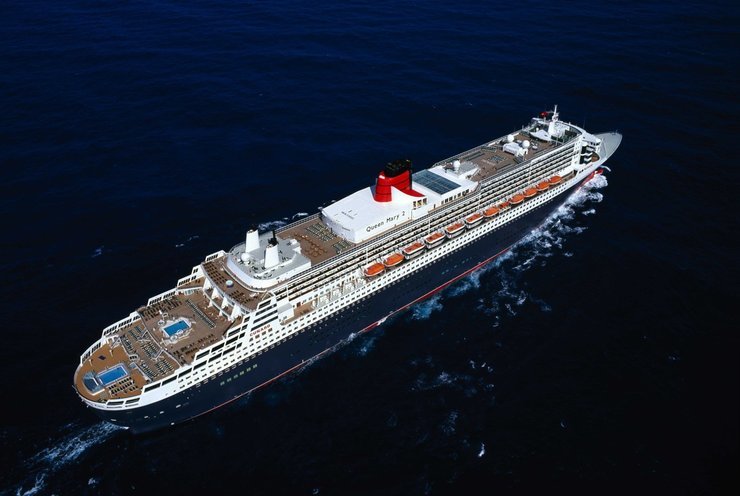
Latest Reportages
Azamara pursuit: the south africa intensive voyage, ponant: expedition cruising a la francais, vista’s maiden call on new york, cfc: renaissance makes its debut and impresses, on crystal symphony: the return of crystal cruises.
Queen Mary's Great History
The RMS Queen Mary was constructed in 1936 and functioned as a luxury liner during the Second World War. She became a great popular tourist destination after the war until she retired in 1967. She served as a passenger vessel between England and America and was among the most opulent vessels of her era. She was reconfigured as a troopship during WWII and played an important part in the war effort. She became a famous tourist attraction after the war and continued in operation until 1967. In 1971, she was brought to Long Beach, CA, where she has been open to the public as a museum ship ever since.
Queen Mary's Specifications
The RMS Queen Mary, which was considerably bigger than the Titanic, was among the most opulent ships of its era. She was faster and could carry a lot more people. Unlike the Titanic, which could only cruise at 23 knots, she was capable of 30 knots of speed. Modern conveniences like air conditioning and TVs were also available on board the Queen Mary. In general, she was a far more opulent and modern ship than the Titanic.
Her specifications are as follows:
Length: 1,031 feet
Width: 118 feet
Height : 185 feet
Weight: 81,237 tons
Queen Mary in the 21st Century
Her current function as a museum ship is crucial because it enables tourists from across the globe to learn about her fascinating past. A World War II museum, an engine room tour, as well as a number of stores and restaurants, are among the various exhibitions and activities that can be found on the Queen Mary. She has played a significant role in Long Beach's history and is still a favorite with travelers from across the globe. The city of Long Beach wants to rehabilitate the queen Mary ship, which is now in need of repair. The city hopes to remedy the ship's hull problems before they worsen because they have been present for a long time.
Articles about The Queen Mary

- Hotel Rooms Choose from 200 original first class staterooms and suites Specials & Packages Packages & Special Offers Services & Amenities Modern amenities and world-class service Fitness Room Rejuvenate with our fitness options
- Attractions Tours & Exhibits Get an up close and personal look at the Queen Mary with our exciting tours & exhibits Fourth of July Celebration Celebrate an all-American 4th of July aboard The Queen Mary! Queen Mary Heritage Foundation Membership Experience everything the Queen Mary has to offer with a tour package
- Dining Casual Dining Enjoy inspired meals and quick bites at our restaurants Sir Winston's Restaurant & Lounge Fine dining with stunning seaside views Bars Enjoy the 1930's classic sophistication of the Queen Mary bars Royal Sunday Brunch A local favorite, voted “Best Brunch” by OpenTable Groups & Experiences The Queen Mary offers several dining options for large groups or those seeking a unique dining experience
- Meetings & Weddings Meetings Explore one of the most unique meeting and conference venues in Southern California Weddings The Queen Mary has been host to unforgettable weddings for over 70 years Socials The Queen Mary is the ideal location for any social occasion Event Spaces Over 80,000 square feet of meeting and exhibit space across 14 Art Deco salons
- History Timeline Re-live the Queen Mary’s rich history, from her ground-breaking construction to today Stats & Fun Facts Everything you ever wanted to know about the Queen Mary Design & Preservation Learn about the era of elegant Art Deco design and how the Queen Mary is maintained with preservation projects Press Releases Press Releases about the Queen Mary Amateur Radio Discover the on-board radio stations starting in the 1960s
- Visit Hours & Parking Find open times for the Queen Mary and its dining and parking. On-Board Shopping An array of unique shops featuring souvenirs, one-of-a-kind treasures, clothing, memorabilia, historic documents, artwork and more Nearby Attractions The Queen Mary is a great central hub to all of Southern California’s most popular attractions Directions Your guide to getting to the Queen Mary
- Happenings Calendar
- Book Now Room Tour
Now Open and Welcoming Passengers Onboard
Memorable Stays | Exciting Dining | Thrilling Tours
The Queen Mary
Tours & exhibits.

Learn More • Pricing Information

Art Deco Staterooms
Enjoy a unique historic stateroom or suite aboard the Queen Mary. Unlike hotel rooms, these comfortable sleeping rooms will make you feel as if you’re traveling across the Atlantic in a period-true ship’s cabin.

Discover What's New Happenings Calendar
From live music shows to signature ship-wide events, experience all of the exciting activities happening on the iconic Queen Mary all year round.


A Trip Across Time The Whole Story
The Queen Mary’s creation and launch was nothing if not extraordinary and her story is rich with history, elegance and grandeur. From the time her construction began in 1930 in Clydebank, Scotland, the Queen Mary was destined to stand in a class all her own.
- CruiseMapper
Queen Mary 2
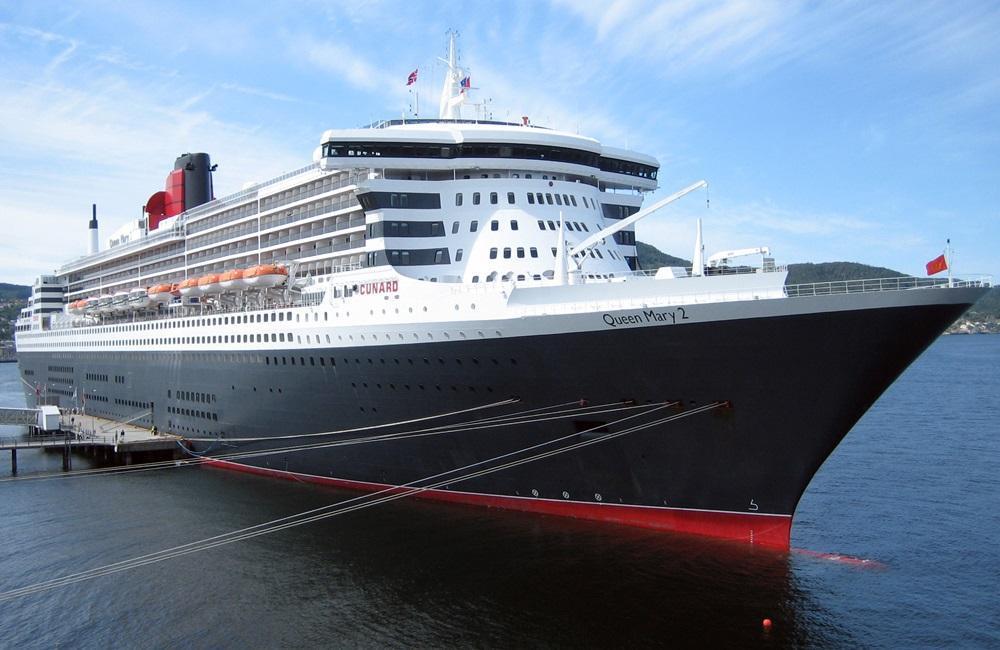
Cruise line Cunard
- Southampton (England)
- New York (NYC Manhattan-Brooklyn)
- Hamburg (Germany)
- Sydney (NSW Australia)
- Hong Kong (China)
Queen Mary 2 current position
Queen Mary 2 current location is at Indian Ocean (coordinates -27.91517 S / 39.10620 E) cruising at speed of 18.9 kn (35 km/h | 22 mph) en route to MU PLU > ZA DUR. The AIS position was reported 32 minutes ago.
Current itinerary of Queen Mary 2
Queen Mary 2 current cruise is 123 days, round-trip Full World Voyage , themed as "Easter". The itinerary starts on 03 Jan, 2024 and ends on 05 May, 2024 .
Specifications of Queen Mary 2
- Itineraries
- Review
- Wiki
Queen Mary 2 Itineraries
Queen mary 2 review, review of queen mary 2.
The 2004-built RMS Queen Mary 2 cruise ship is the oldest and most famous of all Cunard liners, with fleetmates the sisterships MS Queen Victoria (2007) and MS Queen Elizabeth (2010), and Cunard's newest liner (2024-built) Queen Anne .
The vessel (IMO number 9241061) is currently Bermuda- flagged (MMSI 310627000) and registered in Hamilton . The previous flag state/registry was the UK/Southampton (MMSI 235762000).
History - construction and ownership
Cunard Line is a British-American cruise brand, operated by Carnival UK and owned by Carnival Corporation (shipowner). Cunard is headquartered in Southampton (England UK) and is among the world's oldest passenger shipping companies . In 2015, Cunard Line celebrated its 175th anniversary.

Cunard held the Blue Riband for the fastest Atlantic voyage for most of the next 30 years. In 1968 Cunard Line withdrew from year-round service to concentrate on cruising and summer transatlantic sailings for vacationers. The Queens were replaced by QE2 (Queen Elizabeth 2), which was designed for her special dual role. In 1998, Carnival Corporation acquired Cunard. Five years later, Queen Elizabeth 2 was replaced on her transAtlantic runs by QM2 (Queen Mary 2).
Currently, Cunard is the only shipping company operating a regularly scheduled passenger service between North America and Europe.
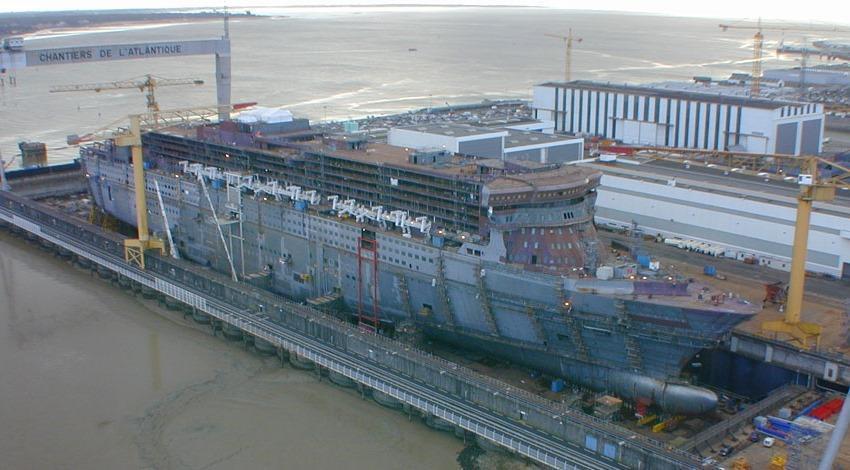
The 1300-passenger ship RMS Queen Mary 2 is Cunard's current flagship, one of the most modern (by design and technologies) and currently the world's biggest ocean liner specifically designed for regular Transatlantic ocean crossings. QM2 was created with perfection, from bow to stern, with gorgeous public areas, lavish restaurants, ballrooms, theatres, bars and lounges, and even a Planetarium (the first at sea). In order for passengers to be well protected when the ship is moving fast (30 knots), invisible windscreens were built.
Stephen Payne was the vessel's naval architect - a CCL-Carnival's designer, who resembled features of some former ocean liners. These aspects include three thick black lines which recall the appearance of the first Queen Mary. Because Queen Mary 2 is too large and cannot dock in all ports, the passengers are ferried in tenders to and from the ship. For transporting passengers to shore, tenders pull up to loading stations, which have large hull doors for hydraulically opening outwards and forming a boarding platform.
The vessel changed its flag-state in 2011 (from London UK to Hamilton Bermuda) in order to allow shipboard weddings at sea. RMS stands for "Royal Mail Ship" - a gesture to Cunard Line's history.
RMS Queen Mary 2 is the only ocean liner with regularly scheduled Transatlantic cruise crossings between England and the USA (Southampton and NYC New York). She provides premium travel experiences with contemporary amenities, highly-trained staff, and most professional crew. By GT-tonnage (148528 tons) QM2 is also one of the world's largest passenger ships .
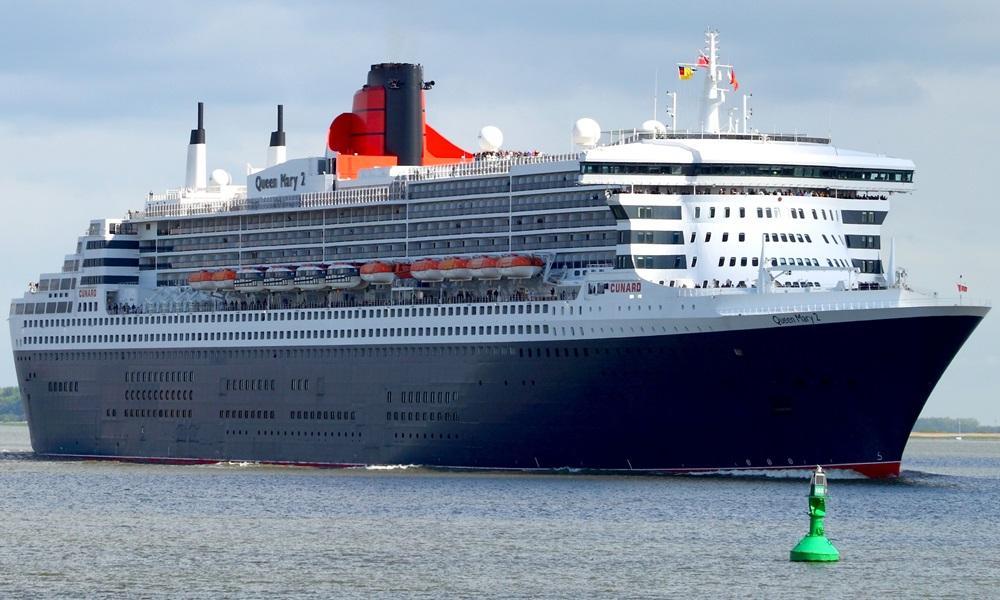
Cunard QM2's first World Cruise started on January 10, 2007, navigating around the globe for 81 days. On February 20, in Sydney NSW, she met Queen Elizabeth 2 - being also on a World Voyage. Numerous viewers were at the harbor bridge although the queens' arrival time was 5:42 am. This was the first time they met since the original Queen Elizabeth and Queen Mary served in 1941 as troopships.
Queen Mary 2 embarked on a 3-month voyage around the world from Southampton on January 10, 2012. She traveled south and afterward east around Africa, then along the east coastline of Australia heading to Japan and back to Southampton through the Suez Canal.
Another Royal Rendezvous took place in New York on January 13, 2011, at 6:45 pm, in front of the Statue of Liberty. Queen Mary 2 met Queen Victoria and the brand-new Queen Elizabeth. The two other ships- QE and QV crossed the Atlantic in tandem for the event. The fireworks and the red lights of the Empire State Building marked the event. For the celebration of the Diamond Jubilee of Queen Elizabeth II, the Queens met again in Southampton on June 5, 2012.
Decks and Cabins
RMS Queen Mary 2 staterooms (1363 total) include 170 Suites, 813 Balcony, 74 Oceanview (of which 12 Lanai/Atrium-View), 286 Inside rooms, in all 29 categories. The ship has 479 connecting, 26 wheelchair-accessible and 15 studios (single-occupancy cabins). The largest are the Grand Duplex Suites (1600 ft2 / 149 m2 plus 645 ft2 / 60 m2 terrace).
The boat has 18 decks , of which 13 passenger-accessible and 11 with cabins.
Passenger staterooms are in the following types: Standard Inside (no window), Lanai/Standard Atrium View (Standard Inside with a small window), Standard Oceanview (1 small non-opening porthole with seaviews), Britannia Club Balcony and Britannia Balcony (with glass-fronted step-out balconies) and the rest are Suites (Princess, Queen, Penthouse, Royal, Duplex, Grand Duplex).
Theoretically, RMS Queen Mary 2 is a classless ship, but passengers are actually separated (like on all Cunard liners) as their onboard dining locations are according to their cabin's category/cruise fares paid.
Shipboard dining options - Food and Drinks
All Cunard ships have 3 main restaurants offering breakfast, lunch, and dinner: Queens Grill Restaurant is designated for guests staying in Queens Grill accommodations. Evening dining is anytime between 6.30 pm - 9.00 pm. Princess Grill Restaurant - for guests staying in Princess Grill accommodations. Evening dining is anytime between 6.30- 9 pm. Britannia Restaurant - for guests staying in Britannia Balcony, Oceanview or Inside Staterooms. Dining arrangements depend on the class of accommodation passengers have chosen. Most of them prefer the Britannia class and dine in the main restaurant. Passengers can upgrade to a "junior suite" and then dine in Princess Grill, or choose a suite and then dine in the Queens Grill. Thus they are grouped by Cunard as the so-called Grill Passengers who are permitted to the Queens' Grill Lounge and may also use the private area on deck 11 and its whirlpool. The other public areas are allowed to use by all passengers.
Each stateroom is allocated and most cabins are allocated to Britannia restaurant - two-story with 1,300 seats. Princess Grill on deck 7 is for the more expensive staterooms- the Queen's Grill on the same deck - for the very best ones. Fares include all meals in the allocated restaurant and the afternoon tea served in King's Court or Queen's Room. Food is excellent - you may choose different starters, main courses, desserts, being changed every day. Dining optional venues - instead of in allocated restaurants, you can choose to eat in the self-service informal King's Court on deck 7 (with several buffet areas) or in the Golden Lion pub on deck 2. You may have breakfast or lunch at the King's Court area which is open twenty-four hours a day - it serves as a buffet restaurant. Todd English restaurant on deck 8 serves superb food, call in the morning to reserve a table.
Each cabin has free room service with a simple menu - burgers, pasta, crackers which can be ordered by phone at any time. If you order drinks, they are charged at bar prices.
When you book you may request a sitting. The Britannia restaurant has two for dinner - at 6 p.m. and at 8.30 p.m. Princess Grill and Queens Grill do not have sittings - when they are open, you can dine any time you choose. A note for confirmation sitting and table number will be left in your stateroom when you board. Lunch and breakfast do not require allocated tables or sittings.
NOTE: During the ship's major drydock refit in 2016, "Winter Garden" was replaced with "Carinthia Lounge". The new lounge offers alternative breakfast, lunchtime options, and premium coffees. Also during the 2016 refurbishment, "Todd English" (Mediterranean cuisine) was replaced with "The Verandah" - a contemporary French cuisine restaurant. The buffet-style "Kings Court" was completely transformed, with the addition of a smokehouse (alternative dining concept).
Passengers staying in suites are offered new menus in refurbished settings by Princess Grill and Queens Grill restaurants. Britannia Restaurant, Golden Lion pub, and Veuve Clicquot Champagne Bar all boast refreshed menus. Cunard Line has created many of the new menus in its development kitchen in Southampton.
Follows the complete list of Queen Mary 2 restaurants and food bars.
- King's Court (478-seat self-service buffet restaurant, with Chef's Galley area for culinary demonstrations and Chef's Table menu on select evenings; sectioned in 4 casual dining venues - Chef Galley, The Carvery, Lotus, La Piazza)
- Britannia Restaurant (1351-seat, 3-decks high Dining Room; serves open-seating Breakfast and Lunch. Dinners are waiter-served, with 2 assigned sittings at 6 or 8:30 p.m. Inside is the Britannia Club which is a private dining room for Britannia Club Balcony guests)
- The Carvery (offers gourmet English cuisine, reservations are recommended)
- Lotus (Asian cuisine with Chinese, Japanese, Indian and Thai dishes; reservations only)
- La Piazza (24-hour; serves Italian cuisine; reservations recommended)
- Queens Grill Restaurant (206-seat, for Queens Grill Suite guests; with regular and an a la carte menu)
- Princess Grill Restaurant (180-seat, Princess Grill Suite guests only; open-sitting, with the same menu as at the Queens Grill)
- Todd English (216-seat specialty restaurant, reservations are required)
- Boardwalk Cafe (a fast-food bar serving the pool area).
Transatlantic cruise travel is more formal as a dress code. During the day, passengers definitely tend towards country club casual. At night, even when it isn't a formal-designated evening, passengers dress up anyway. There are 3 dress codes in the main restaurants after 6 pm each evening. Which one applies each night is noted in pre-voyage documentation and daily program in all staterooms.
- Formal (men - dinner jacket with a black tie or dark business suit; women- evening dress)
- Semi-formal (men- jacket and a tie; women - cocktail dress/trouser suit)
- Elegant casual (men - a jacket, a tie is optional; women - skirt, dress or trousers). Shorts and T-shirts are not permitted.
Shipboard entertainment options - Fun and Sport
The facilities on Queen Mary 2 include fifteen bars and restaurants, a theatre, casino, ballroom and five swimming pools (four of the ship's five swimming pools are outdoors), together with the first planetarium at sea. You can also use the ship's kennels and nursery. QM2 has a shipboard class dining system.
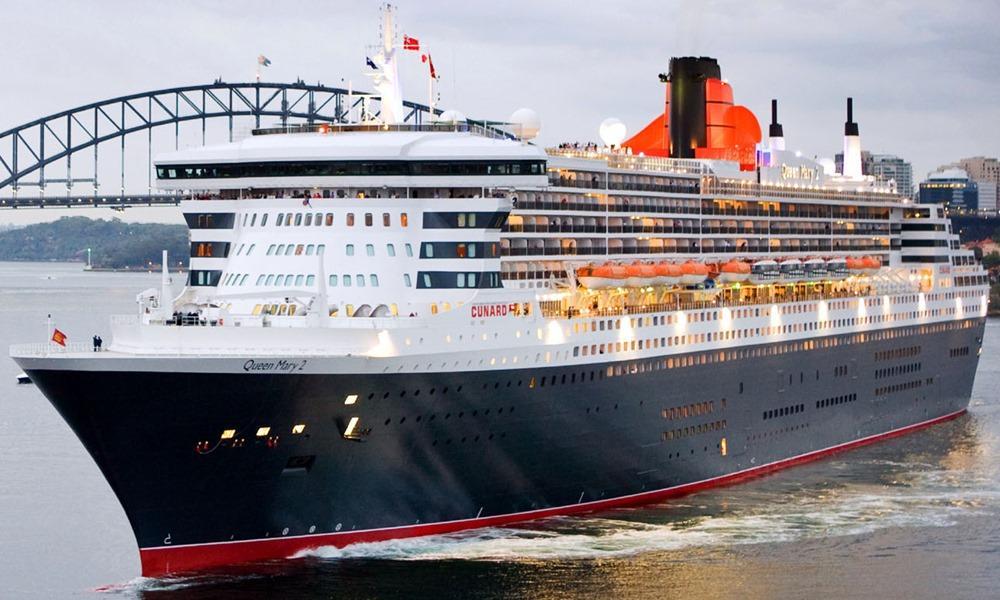
As it is with most modern passenger ships, the major public rooms onboard are situated on the lowest decks while the passenger cabins are stacked above them. This way the designers made it possible more staterooms to be equipped with balconies not affected by ocean waves.
The Illuminations Theatre, the first at sea Planetarium and a Cinema are on Deck 2, where are also the Empire Casino, the Royal Court Theatre, the Grand Lobby, the Golden Lion Pub, Britannia Restaurant's level 1. The upper level of Illuminations Theatre, Britannia Restaurant, and Royal Court Theatre are on Deck 3, together with a shopping arcade, Queen's Room, Veuve Cliquot (champagne bar), Sir Samuel's (wine bar), Chart Room, G32 Nightclub.
Another public deck (Deck 7) houses the Winter Garden, Canyon Ranch Spa, King's Court, Queen's Grill Lounge, the restaurants Princess Grill and Queen's Grill.
On Deck 8 is the Todd English Restaurant, 8000-volume Library, Book Shop, a large outdoor swimming pool.
QM2 also has a large amount of commissioned artworks (5000+) by artists from 16 different countries. These are visible in the hallways/corridors, lobbies, various public rooms.
Each evening a daily program for the next day will be delivered to your stateroom, showing detailed information about activities on board, opening and closing times of bars, restaurants, and other facilities. There is also an ongoing program of plays, shows, lectures. Several live bands with dancing every evening will entertain you on board. If you prefer disco - visit the G32 nightclub. Do not forget Canyon Ranch spa on deck 7 which offers from massages to manicures, jacuzzis, and saunas.
Cunard cruise ship weddings, ceremonies, and parties could be held in some of the QM2's lounges. There is no chapel on the ship.
Follows the complete list of Queen Mary 2 lounges, clubs and other entertainment venues for kids, teens, and adults.
- Royal Court Theatre (1105-seats, 2-decks high; has a dynamic stage for grand show / musical productions; features concert hall acoustic and high tech equipment). Via a 3-year partnership deal with RSC-Royal Shakespeare Company (2022 through 2025/May-Aug and Sept-Nov), at the Royal Court Theatre are also hosted theatrical performances by RSC actors. The company's program for QM2 includes "Boundless as the Sea" (a piece created by Owen Horsley exclusively for Cunard Line) as well as "Miss Littlewood" (musical show by Sam Kenyon) and "Shakespeare Tales" (informal events with RSC actors performing their favorite pieces (sonnets and speeches) and interacting with the audience.
- Illuminations Theatre (493-seat, 2-leveled, with a giant movie screen; hosts the world's only Planetarium at sea for astronomy shows, virtual reality movies, and high-tech visual programs)
- Grand Lobby Atrium (with a grand piano, grand sweeping staircase, interior glass-wall lifts)
- Golden Lion Pub (123-seat traditional British pub bar; features a large selection of the UK and international beers, large-size TVs, live entertainment, small dance floor)
- Empire Casino (222-seat, 6000 ft2 / 610 m2; with 115 slots and 11 gambling tables, served by Casino Bar)
- Images Photo Gallery & Shop (professional photo-video services; exhibits fine artworks)
- Cunard ConneXions (a complex of 7 rooms that host onboard events)
- Cyber Centre (has 9 Internet computers, with 35 Internet workstations available in the other ConnneXions rooms)
- Clarendon Art Gallery (art auctions and exhibitions; the artworks are all originals)
- Video Arcade (with the newest video games for all passengers)
- Mayfair Shops (shopping arcade; luxury jewelry, watches, fashion clothes, formal wear, QM2 logo merchandise)
- Veuve Cliquot Bar (Champagne bar; the menu also includes tapas and canapes)
- Sir Samuels Bar (specialty coffee/tea and patisserie bar)
- Chart Room (cocktail bar with live jazz)
- Queens Room (2-level formal dancing ballroom; features the biggest dancefloor at sea)
- G32 Disco & Nightclub (named after the QM2 ship's yard number; with live band music and DJ program)
- The PlayZone (club lounge area and nursery for kids; complimentary)
- The Zone (supervised teens club lounge, equipped for kids activities)
- Minnows Pool (QM2 family pool area, with a sunbathing area and a splash pool)
- The Canyon Ranch Spa & Salon complex (size 20000 ft2 / 1860 m2, 2-level; with a Spa, Thalassotherapy Pool, Thermal Suite, Finnish and Herbal Saunas, Treatment Rooms, Relaxation Lounge, Aromatic Steam Room, Beauty Salon)
- Fitness Centre (Gym Room and Weights area; with 8 exercise bikes, 10 Elliptical machines, 14 treadmills, 4 steppers, 2 rowing machines, yoga mats)
- Carinthia Lounge (ex-Winter Garden; 278-seat, size 7000 ft2 / 650 m2 classy lounge and supper club with live plants area, live music performances; serves Afternoon Champagne Tea, specialty cocktails and pre-dinner snacks)
- Queens Grill Lounge (Queens Grill Suite guests only venue with white-glove service and live piano music)
- QM2 Book Shop; The Library (with the largest book selection at sea - over 8000 volumes)
- Terrace Pool Area (with two Whirlpools, poolside bar, sunbathing area, and Band Stand)
- Commodore Club (115-seat indoor observation lounge with panoramic windows and live piano music)
- Boardroom (a lounge for private parties and meetings)
- Churchill's Cigar Lounge (QM2's smokers' room with a selection of fine liquors and cigars)
- Concierge Lounge (private club venue for Princess and Queens Grill guests)
- Atlantic Room (meeting room; doubles as Card Room)
- Queens Grills Terrace (private outside pool area for Queens Grill passengers with bar service and Jacuzzi)
- Pavilion Pool Area (with two Whirlpools, Magrodome, served by the Pavilion Pool Bar)
- 22 kennels for pets (dogs and cats; with a fire hydrant and lamp post in the area reserved exclusively for walking the dogs)
- The Fairways (2 golf simulator machines, 51 golfing course choices)
- Sports Centre (1/2 size basketball court; Deck Games area with quoits, shuffleboard, chessboard, paddle tennis, mini-golf course)
- The Sun Deck's pool area (with Splash Pool and two Whirlpools; a sunbathing area with loungers; served by the Regatta Bar).
Itineraries
Queen Mary 2 itinerary program is based on regular Transatlantic crossings with departures from Southampton England UK , Hamburg Germany , and NYC New York USA . Each year the ship offers an Around the World Voyage sailing roundtrip from Southampton and oneway itinerary segments. QM2 features special Cunard cruises to Canada (New England) and the Caribbean, also with departures from UK and USA.
Queen Mary 2 - user reviews and comments
Photos of queen mary 2.

Queen Mary 2 ship related cruise news
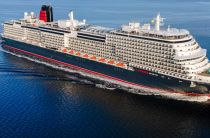
Cunard unveils 2025-2027 voyages, new Caribbean routes, simultaneous World Cruises
Cunard announced the commencement of sales for sailings spanning from September 2025 to January 2027, inclusive of new Caribbean itineraries leaving...

Cunard announces Exclusive Le Gavroche Residencies at Sea with Chef Michel Roux
Cunard Line is set to reintroduce an exclusive series of Le Gavroche residencies at sea, featuring two Michelin-starred chef Michel Roux showcasing...

Cunard's Transatlantic liner RMS Queen Mary 2 restarts operations on November 16
Cunard's Transatlantic ship RMS Queen Mary 2 is currently undergoing drydock maintenance at Damen Shiprepair Rotterdam (in Rotterdam Holland). After...
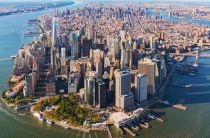
Carnival Venezia and Queen Mary 2 experience delays in their departures from New York due to flash...
On September 29th, two passenger liners - Carnival Venezia and RMS Queen Mary 2, experienced delays in their departures from New York City due to...

Cunard opens for booking cruises 2025 (ships Queen Anne, Queen Victoria, Queen Mary 2)
Cunard Line is set to provide travelers with the opportunity to embark on an array of unforgettable journeys by releasing 180 voyages for 2025...
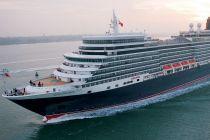
Cunard and P&O UK improve Wi-Fi connectivity with SpaceX's Starlink
Carnival Corporation's UK-based subsidiaries Cunard Line and P&O Cruises UK have unveiled plans to enhance Wi-Fi connectivity fleetwide through a...

Cunard Line enabling shore power capability fleetwide
Cunard has achieved a groundbreaking milestone by equipping its entire fleet with the capability to utilize shore power. Queen Elizabeth has been...

Cunard’s Queen Mary 2 ship breaks moorings due to strong winds in Italy
On Friday, August 4th, strong winds in Italy caused RMS Queen Mary 2 ship of Cunard Line to break free from her moorings. Despite the anticipation...

Cunard Line introduces 2024 Event Voyages program
The UK-based Cunard Line announced its highly anticipated Event Voyages 2024. Cunard's flagship RMS Queen Mary 2 will host 4 out of 7 themed voyages...

Cunard Line announces Coronation Celebrations at Sea onboard its three Queen ships
Cunard Line is joining in the celebration of the coronation of His Majesty The King and Her Majesty The Queen Consort by organizing coronation-themed...
- show more news
Other Cunard cruise ships
- Queen Elizabeth
- Queen Victoria
Queen Mary 2 Wiki
RMS Queen Mary 2 (QM2) is Cunard Line's oldest and one of the world's most famous ocean liners of all time. As vessel class and design, QM2 is an "ocean liner" designed specifically for regularly scheduled passenger express Transatlantic crossings between the UK and the USA. Departures are from 3 homeports - in the USA ( New York City ), the UK ( Southampton ) and Germany ( Hamburg ). Most of these voyages are according to a fixed Transatlantic schedule with 7-day North Atlantic crossings between Southampton and NYC. The short (7-day) itinerary is usually without any ports of call.
Cunard's QM2 construction was completed on December 23, 2003. The inaugural cruise/maiden voyage to Fort Lauderdale Florida started on January 12, 2004.
The ship's Godmother was HM Queen Elizabeth II (UK's ruling monarch/1926-2022). The naming ceremony was held on January 8th, at Port Southampton. The special event featured live musical performances by the Royal Philharmonic Orchestra/RPO and the Royal Marines Band (the British Navy's musical wing).
The ship was named "RMS Queen Mary 2" in respect of Cunard Line's Royal Mail service.
RMS Queen Mary 2's building cost is over USD 900 million - ranking the vessel nearly 2 times more expensive than most of the currently operated cruise liners. The construction was costly because the ship is big and the materials used were of the highest possible quality. Plus, vessel's construction demanded 40% more steel than an ordinary cruising vessel. When launched in 2004, QM2 became world's biggest cruise liner ever .
QM2's cruising speed of 30 knots (56 kph / 35 mph) ranks it world’s fastest cruise liner currently in operation. The vessel's service speed is 26 knots (48 kph / 30 mph). RMS Queen Mary 2 is the first cruise ship with CODAG propulsion system (“combined diesel and gas”) based on gas turbines that magnify diesel-produced power.
Illuminations Theatre is the first Planetarium at sea. The ship also has the largest Library at sea (8000+ volumes), the first Canyon Ranch SpaClub at sea, a total of 15 dining venues, 5 swimming pools, 620-m wraparound promenade deck, onboard kennels (available only on the transatlantic crossings). QM2 is Post-Panamax vessel (can’t pass through the old Panama Canal locks), designed specifically for Transatlantic crossings. Among the fun facts are, that on Transatlantic crossings, QM2 is supplied with about 65 000 fresh eggs and about 150 tons of food. Propulsion demands are however even more impressive. QM2 ship needs 1850 tons of diesel oil and 1000 tons of fuel for the gas turbines on a regular 7-day North Atlantic crossing between USA and UK. It takes 6 hours to fill her storage tanks.
In August 2004 (during the Summer Olympics in Greece), the ship was chartered and stayed docked for 2 weeks in Port Piraeus (Athens) serving as ship hotel. Among the guests were Tony Blair (UK's Prime Minister), Jacques Chirac (France's President), George W. Bush (USA's President), the whole US Olympic basketball team, John Cleese (UK actor), Richard Dreyfuss (US actor), Harold Evans (UK journalist and author), George Lucas (film director and producer), Carly Elisabeth Simon (US singer), Rod Stewart (UK singer), Donald Trump (media magnate / future US President).
On October 19, 2011, the vessel changed its registry (flag-state) from UK to Bermuda which allows cruise wedding ceremonies to be held on the ship. The word "Southampton" on the stern was replaced with "Hamilton". This was the first time in Cunard's history when its liner was registered not in the UK.
In early-February 2017, Cunard Line announced company's sponsorship of the "Westminster Kennel Club Dog Show". This prestigious all-breed conformation show is held annually in NYC New York since 1877. The onboard show took place on February 11-14. The winner and its owner were offered a free QM2 Transatlantic Crossing.
On December 8, 2017, QM2 operated a cruise-themed after "The New York Times" crossword's 75th anniversary. During "The Crossword Crossing" (7-night Transatlantic cruise NYC to Southampton), QM2 passengers had the unique chance to test their crossword skills and meet the newspaper's crossword experts (including Ben Zimmer, Deb Amlen, Joel Fagliano). They offered insight into the media's popular puzzles via daily scheduled themed events (lectures, game sessions, other activities). The New York Times' first crossword puzzle was published in 1942. It became a daily occurrence by 1950 and is now one of the media's most popular features.
On itinerary August 31-September 7, 2017, the passenger liner hosted the 2nd "Cunard Transatlantic Fashion Week" cruise from Southampton to NYC. These themed voyages bring together some of the world's most renowned fashion brand representatives. On each of the 7 days at sea are hosted fashion shows, formal dinners, exclusive events, workshops, and talks. Among the 2017 voyage's VIPs were Julien Macdonald (celebrity designer) and Colin McDowell (fashion writer). Three new for Cunard pop-up stores on the QM2 ship offered for purchasing latest fashion collection items, including Mulberry (purses and bags), Lucy Choi (designer shoes) and Melissa Odabash (designer swimwear).
An interesting fact is that a baby boy was born on board RMS Queen Mary 2 on January 17, 2016, while en route to New York . The ship was on a transatlantic crossing from Southampton when a German passenger went into labor. The ship doctor delivered the baby. The baby boy, who arrived 3 weeks early, was named Benjamin Brooklyn.
Starting in January each year, RMS Queen Mary 2 "World Cruise" is a huge event on the cruising market. Compared to other lines, Cunard's World Cruises deals offer affordable prices, exciting destinations and "big and famous" ports of call to visit around the world.
Cunard World Cruise 2022 (Queen Mary 2)
RMS Queen Mary 2 has scheduled a 118-day World Voyage 2022 which replaced all scheduled QM2 cruises departing January 3 through April 3, 2022 (including a voyage to South America).
The voyage departs roundtrip from Southampton (104-day, booking code M203I) and from New York City (118-day, booking code M202F) and visits Greece, Israel, Dubai, Sri Lanka, Singapore, Vietnam, Hong Kong China, Australia, Bali, Abu Dhabi, Oman, Italy, Portugal. The itinerary also features two Suez Canal crossings (on both the eastbound and westbound route) and overnights in Haifa, Dubai, Hong Kong, Sydney NSW, Singapore, a late-night departure from Colombo.
Queen Mary 2 World Cruise 2022 is bookable either as a full voyage (118-night / 104-night) or in several shorter segments from NYC (to Dubai, Singapore, Hong Kong, Sydney Australia), Southampton (to Dubai, Singapore, Hong Kong, Sydney NSW, Fremantle) and itineraries departing out of Dubai, Singapore, Hong Kong, Australia. The full itinerary visits 27 ports in 16 countries and 33 UNESCO Sites. Customers with full itinerary (roundtrip) bookings enjoy a Welcome Onboard Reception, services by World Voyage Concierges, use of an exclusive lounge, Gala Event ashore, complimentary daily gratuities.
Prices for the 118-night full voyage (NYC roundtrip Jan 3 - May 1) started from GBP 13000 / ~USD 16900 / ~EUR 14300 per person (inside stateroom at double occupancy). Prices for the 104-night full voyage (UK roundtrip Jan 10 - April 24) started from GBP 10100 / ~USD 13150 / ~EUR 11100 per person (inside stateroom at double occupancy).
RMS Queen Mary 2 refurbishments review
The ship's last drydock was in 2023 (October 23 to November 12, at Damen Shiprepair Rotterdam ) and mainly for routine/general maintenance and class works, inspections, a technical overhaul, hull cleaning and repainting.
QM2's drydock in 2021 (August-September) was at Damen Shiprepair Brest ( Brest France ), during which were conducted mainly general maintenance works, as well as hull cleaning and painting.
During Cunard Line’s 175th anniversary celebrations was announced that QM2 enters 25-day long drydock in 2016 (May 27 to June 21). The drydock (at Blohm+Voss Shipyard in Hamburg Germany ) resulted in the following changes:
The Winter Garden lounge on Lido Deck 7 was redesigned and transformed into the new Carinthia Lounge. The lounge is named after the Cunard's two Carinthia ships – RMS Carinthia (1925-1940) and RMS Carinthia (1956-2006).
On deck 8, the ship’s signature restaurant Todd English was replaced by “The Verandah Restaurant”. The new restaurant (available on both QM2 fleetmates) offers gourmet French regional cuisine (with seasonal influences) plus a fine French wines list. The new specialty dinner is at a surcharge and opens for lunch and dinner only. The Verandah Grill has its own bar selling pre/post-meal drinks.
172 suites (all Princess and Queen Grill suite accommodations on the QM2 ship’s upper decks) were comprehensively redesigned to maximize space. Their decoration was also changed, reflecting the Cunard Line’s history. The changes include new luxury textures in soothing colours and new carpeting (with a rugs-design inspired by the old RMS Queen Mary liner).
Extensive development work involving Cunard guests and the onboard Queen Mary 2 galley teams has been undertaken over the last eighteen months in the redesign of this very popular area of the flagship. Enhancements are planned to both the service and culinary offerings in Kings Court with the refreshed venue featuring new menus, the convenience of pre-set tables and waiter-served drinks.
The King's Court (self-service buffet restaurant on lido deck 7 midship) was majorly redesigned. Both central-location elevators were removed to create a vast open space. This way, the central buffet stations area became more open, allowing an easygoing flow. The restaurant’s seating was also reconfigured for a less crowded experience, adding the convenience of pre-set tables and waiter-served drinks. New menus were introduced (including a smokehouse alternative), plus pre-set tables and waiter-served beverages. Among the new menu choices are hot/cold meals, light snacks, afternoon treats, alternative cuisine specialties (including Asian, Indian, Italian, Tex Mex. At the center stage, ship's chefs entertain guests through cooking demonstrations in the evenings.
(King’s Court) The Chef’s Galley area (that offers for lunch pasta and pizzas) on select evenings additionally offers Chef’s Table menu. This is a fine wine pairing and food tasting VIP dining event hosted by the ship’s Executive Chef. The buffet’s new design features modern chandeliers, new artworks (circus-themed), areas with timber flooring, lots of mirrors.
Both Grill restaurants (on Lido deck 7) were redesigned and renovated with a new color scheme, furnishings, and flooring. After the 2016 refurbishment, they both have new menus, more 2-seat tables and were reconfigured for more privacy (by increasing the space between tables).
15 new single-occupancy staterooms were added on deck 2 portside (taking space from the Casino) and deck 3L portside (in the place of the Images Photo Gallery).
The Britannia Restaurant (dining room on deck 2) was redesigned too. It was renovated with new decor and upgraded with new dining menus and the Cunard's "White Star Service" standards.
Updated menus were introduced also at Golden Lion (pub) and Veuve Clicquot (wine / Champagne bar).
30 new balcony staterooms category “Britannia Club Balcony” plus 5 Inside staterooms were added on deck 13 (in the deck’s forward part)
10 new kennels (for cats and dogs) were added to the existing 12 kennels on deck 12. This is the best amenity for passengers traveling with pets. Cruise ship kennels were the Cunard’s signature feature on the line’s former flagship RMS Queen Elizabeth 2. On the ocean liner QM2, they were first introduced at the Duke of Windsor's suggestion.
On QM2, the kennel area was expanded, an owners lounge and a new pet playground were added. The extended outdoor area is intended for dog walking and features a lamppost (from Liverpool ) and a fire hydrant (from NYC ). In 2016, Cunard partnered with Barbour (British sportswear brand) to offer smart pet accessories on the QM2 ship (including jackets, collars, leashes).
On deck 2, two of the Grand Lobby's elevators were removed. This made more space for the lobby lounge, which was also redesigned and refurbished with high-back chairs and a new Baby Grand piano.
Around 55,200 m2 (594,200 ft2) of new carpets have been laid throughout the ship. All new cruise cabins increased the QM2 ship’s capacity from 2620 passengers (max 3151) to 2726 passengers (max 3271). Refurbishment's fun facts: man-hours (over 1 million), new carpets (55,200 m2 / 594,200 ft2), new framed pictures number (4,000), hull paint quantity (over 15,000 litres / 3,962 US gallons).
QM2's drydock 2016 refurbishment cost Cunard ~GBP 90 million.
Please enter at least 3 characters
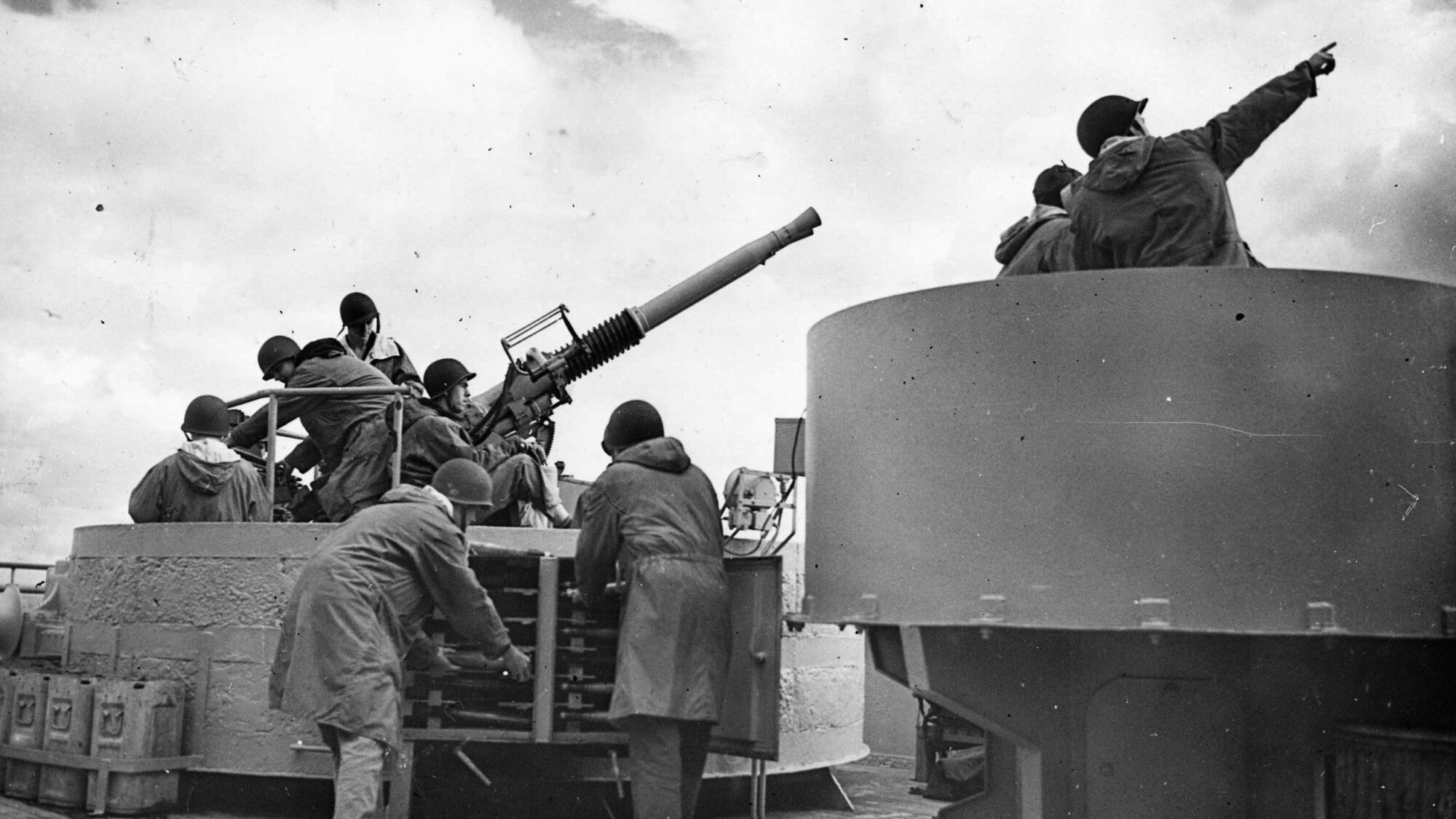
RMS Queen Mary’s War Service: Voyages to Victory
The war service of the RMS Queen Mary made a vital contribution to the success of the Allies.
This article appears in: March 2008
By Eric Niderost
The late summer of 1939 saw Great Britain teetering on the brink of war with Hitler’s Germany. The years of appeasement and vacillation, of meekly acquiescing to Hitler’s insatiable territorial demands, were over at last. Prime Minister Neville Chamberlain’s government pledged to come to Poland’s aid if it was attacked. It was clear that if the Polish crisis could not be settled amicably Europe would be at war within a matter of days. Southampton became a magnet for thousands of people seeking to escape the Continent before hostilities began. Many were Americans, who cut their holidays short for fear of being trapped on the wrong side of the Atlantic. One such “refugee” was entertainer Bob Hope and his wife, Dolores, who booked passage on the RMS Queen Mary . The Hopes were not alone, and in fact Queen Mary had a record 2,332 passengers aboard when she left Southampton on August 30, 1939.
The Queen Mary had survived the Great Depression, an economic hurricane that had once threatened her very existence. The great liner was designed to resist the fury of nature, but could the Queen Mary also weather the storms of war? Only time would tell.
Why the RMS Queen Mary Was an Instant Legend
RMS Queen Mary was Britain’s entry in the fierce transatlantic passenger trade. Commercial aviation was in its infancy in the 1920s and 1930s, leaving passenger liners the only viable way to get to Europe. Before World War I, most shipping companies made their money in steerage, transporting thousands of poor immigrants to new and hopefully better lives in America. But when Congress curtailed immigration in the early 1920s, steamship companies like Cunard faced serious financial difficulties.
The solution was to build one or two huge liners that would gradually replace older, smaller steamships on the transatlantic routes. It would be much more cost-effective. The spartan accommodations of steerage would be upgraded to a much more comfortable “third class” in order to attract middle-income passengers. The ships themselves would be the main attraction of the journey, or, as the old saying put it, “Getting there is half the fun.”
Cunard would build the first of its great new ships in the Clydeside region of Scotland. Clydeside is a stretch of the Clyde River that reaches west of Glasgow toward Gourock and the Western Approaches. John Brown and Co., Ltd., a shipbuilder of great experience and skill, was selected for the task, but the work was hardly put in hand before the Great Depression deepened and severely weakened the British economy. On December 11, 1931, all work was suspended indefinitely and 3,500 workers were laid off.
The British government stepped in, offering subsidies if Cunard merged with its great shipping rival, White Star. All parties agreed, and work resumed in April 1934, after a hiatus of a little over two years. Shipyard hull no. 534 became the Queen Mary , hailed as the largest and “stateliest” liner ever built. The ship was named after the wife of Britain’s reigning monarch, King George V. The royal couple was on hand when the ship was launched RMS Queen Mary was an instant success, a legend in its own time. Passengers were awed by its great size, measuring 1,019 feet long and displacing 80,677 tons. In peacetime, it was designed to carry 2,119 passengers and 1,035 crew. Queen Mary may have been large, but it was also incredibly fast. The ship could average around 29 knots, even faster if pushed a little.
The great steamship was the physical embodiment of Britain, an amalgam of British taste and 1930s refinement. The Art Deco style may have had its origins in France, but on Queen Mary it epitomized the British liner’s elegance and sophistication. Mahogany and other exotic woods, many from Britain’s own colonies, were used in the interior. In a very real sense Queen Mary was an expression of the island nation’s far-flung empire. The ship went into service in 1936, and in August of that year it captured the fabled “Blue Ribband” prize for the fastest transatlantic passage. Queen Mary had traveled from Southampton to New York in a record three days, 23 hours, and 57 minutes, averaging over 30 knots.
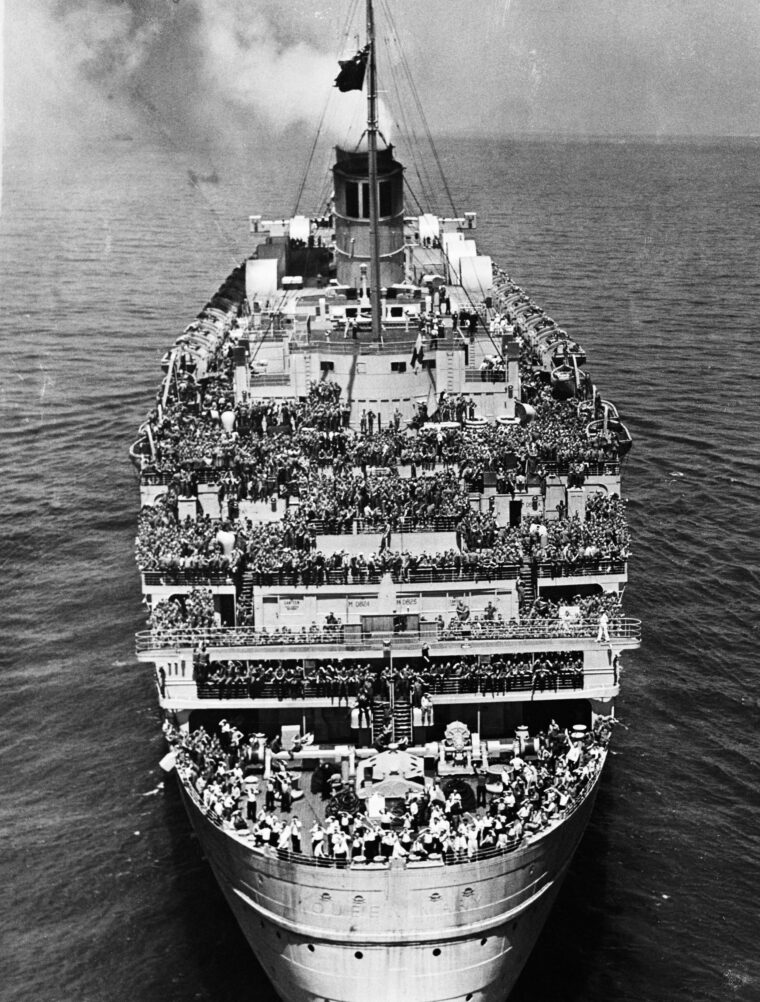
Queen Mary ’s growing fame attracted many celebrities of the period. Hollywood stars like Cary Grant could be seen in the Cabin (First) Class Dining Saloon, which featured a large intricately carved wooden map of the Atlantic Ocean, Europe, and America. Diners could follow the ship’s daily progress by observing a small crystal ship that was frequently repositioned on the map.
One Last Peacetime Voyage
The ship’s last peacetime voyage in August 1939 was anything but routine. Queen Mary ’s captain was ordered to sail about 100 miles south of her normal route as a precaution against lurking German submarines. On September 1, the German Army invaded Poland, and shortly before midnight on September 2, just a few hours after Britain’s ultimatum was delivered to Germany, Queen Mary received an urgent dispatch from the Admiralty. The ship was ordered to “take all necessary precautions” to guard against submarine attack.
The crew worked with a will, painting over portholes and rigging blackout curtains on doorways. Extra lookouts kept eyes peeled for periscopes or the telltale white streak of a torpedo wake. Tension grew, and the fear among passengers was palpable. The liner Athena had been torpedoed a short time earlier, which did nothing to lighten the mood. In an effort to calm nerves, the captain asked Bob Hope to do a show for his fellow travelers.
The comedian rose to the occasion, and soon had passengers roaring with laughter. Noting the crowded conditions, Hope did a parody of his signature tune, “Thanks for the Memory.” While his audience laughed, Hope sang, “Thanks for the memory, Some folks slept on the floor, Some in the corridor, But I was more exclusive, My room had “Gents” above the door.…”
Queen Mary arrived safely at Cunard’s Pier 90 in New York City on September 5, and was ordered to stay put for the foreseeable future. Most of the crew went back to Britain to serve in the war, leaving only a small maintenance crew aboard. The liner was well guarded against sabotage, even though the United States was neutral at the time. There was a fear—real or imagined—that German spies might try to damage the mighty vessel.
Converted For Wartime Use
In March 1940, the Queen Elizabeth joined her sister ship, Queen Mary , in New York. The newer ship was unfinished and less vulnerable in the United States. Both vessels would perform a vital service in carrying thousands of troops to far-flung battlefronts around the world.
The Queen Mary stayed in New York for the next seven months, idle and seemingly forgotten. But this neglect was more apparent than real. Back home in Britain a debate raged in the highest circles of government over what to do with the two Queens . Some suggested that they were “white elephants,” and one member of Parliament seriously suggested they be sold. Besides being vulnerable to attack—or so it seemed at the time—the Queen Mary and her sister ship would eat up tons of fuel oil that might be better used in warships.
Saner heads prevailed, and on March 1, 1940, Queen Mary was officially called up for the duration. As a first step, her prewar livery of white, black, and Cunard red was replaced by a drab coat of what the Royal Navy called “Light Sea Gray.” This camouflage, together with her great speed, would be Queen Mary ’s principal defense against marauding German U-boats.
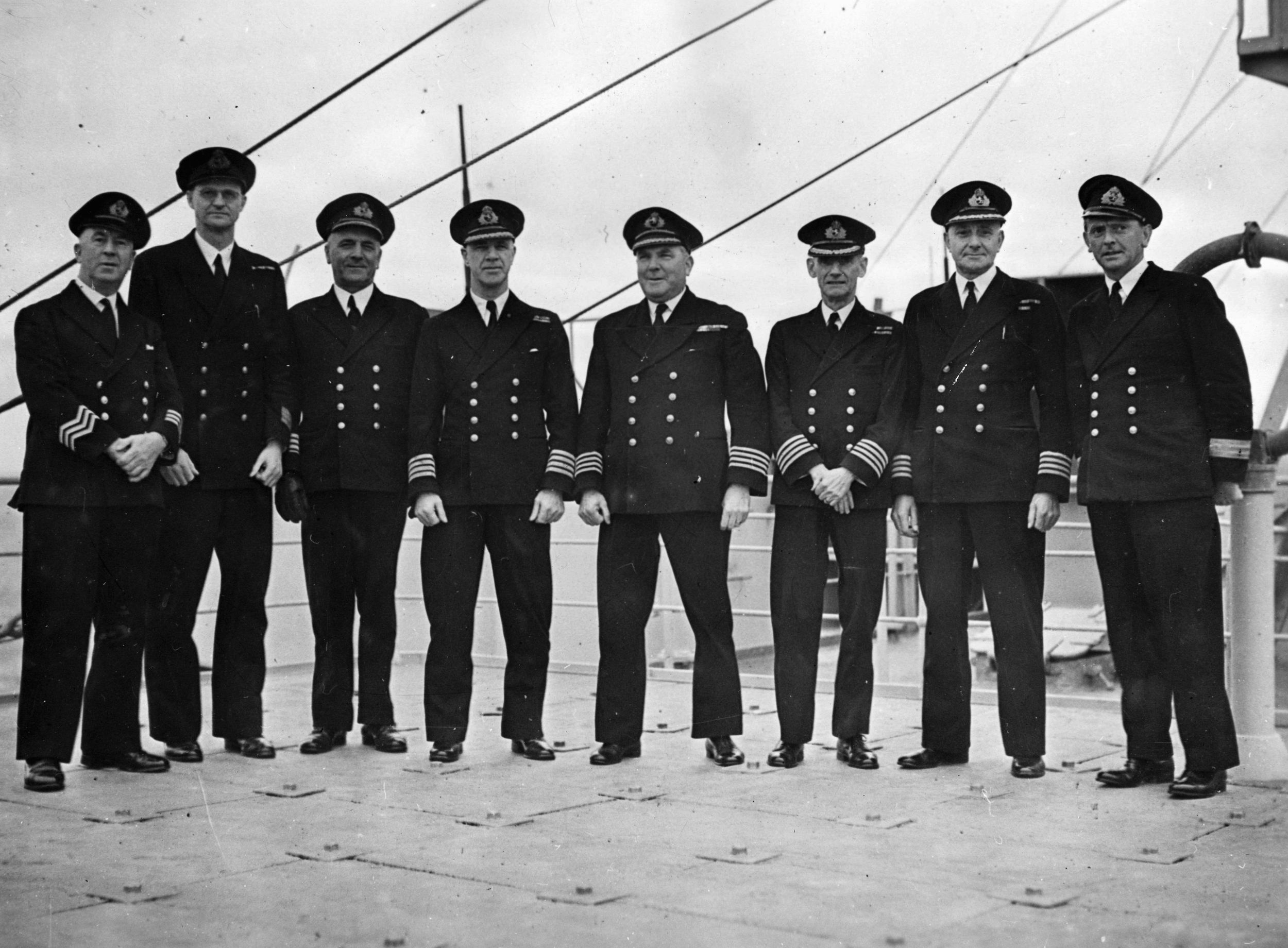
Queen Mary left New York on March 21, 1940, bound for Australia via the Cape of Good Hope. Once down under, the ship would undergo a major refit to turn her into a troopship. The liner reached Sydney on April 17, a voyage of some 14,000 miles made at an average speed of 27.2 knots. Once in Australia, Queen Mary was taken to the Cockatoo Docks and Engineering Co. pier to undergo its transformation. When the workmen were finished, Queen Mary could take 5,500 passengers.
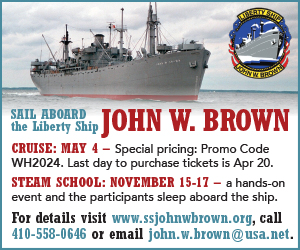
The RMS Queen Mary ‘s Maiden Voyage as a Troopship
On May 4, 1940, Queen Mary left Sydney with 5,000 Aussie troops aboard. The great liner joined other “drafted” passenger ships similarly loaded with equipment and men, forming a huge convoy protected by the Royal Australian Navy. This first maiden troopship voyage was completed successfully, but the Queen’s arrival back in Britain coincided with the war’s darkest days. That spring, Hitler unleashed the blitzkrieg on Western Europe, overrunning Holland, Belgium, and ultimately France in a matter of weeks.
The British Expeditionary Force was pushed to the coast and barely escaped annihilation in the celebrated “ Miracle of Dunkirk .” The British Army had escaped destruction but was forced to leave all its vehicles and heavy weapons behind. The island nation, now truly alone, braced itself for a possible invasion. There was only one bright spot in this litany of gloom: Winston Churchill had replaced the inept Neville Chamberlain as prime minister. Churchill was a man who truly appreciated the importance of Queen Mary and her sister ship.
Defending Against Sea Mines
Queen Mary ’s primary mission would be to ferry troops to battlefronts where they were most needed, but she needed additional modifications. The ship was dispatched to Singapore, Britain’s great eastern bastion, where the transformations could take place. Japan, already embroiled in a major land war in China, soon occupied French Indochina. Tokyo’s ambitions knew no bounds, and its clear goal was nothing less than the control of East Asia.
The Japanese were careful to maintain peaceful relations with Britain and the United States, but war with the western powers was clearly on the horizon. In the meantime, the Queen Mary ’s focus was the worsening crisis in the Middle East. Italian dictator Benito Mussolini hoped to carve out a new Roman Empire in the Middle East by invading British-held Egypt, which was the site of the Suez Canal, Britain’s lifeline to India and the Far East, a jugular vein of communications that had to be held at all costs. Mussolini’s badly led forces were easily routed, but Hitler upped the ante by sending the German Afrika Korps to aid his ally.
Queen Mary arrived in Singapore on August 5, 1940, and slipped into a huge Admiralty drydock for the scheduled modifications. A degaussing coil was wrapped lengthwise around the liner’s exposed hull as protection against German magnetic mines. The coil consisted of five miles of copper wire that, when charged with electric current, effectively neutralized the ship’s magnetic field.
The Route From Sydney to Bombay
After the extensive refit, Sydney became Queen Mary ’s main base throughout 1941. In this period the liner shuttled troops from Australia to the Middle East, although she did not make the complete journey to the battlefronts. The ship usually stopped at Bombay, where the troops would transfer to smaller vessels that took them to Egypt.
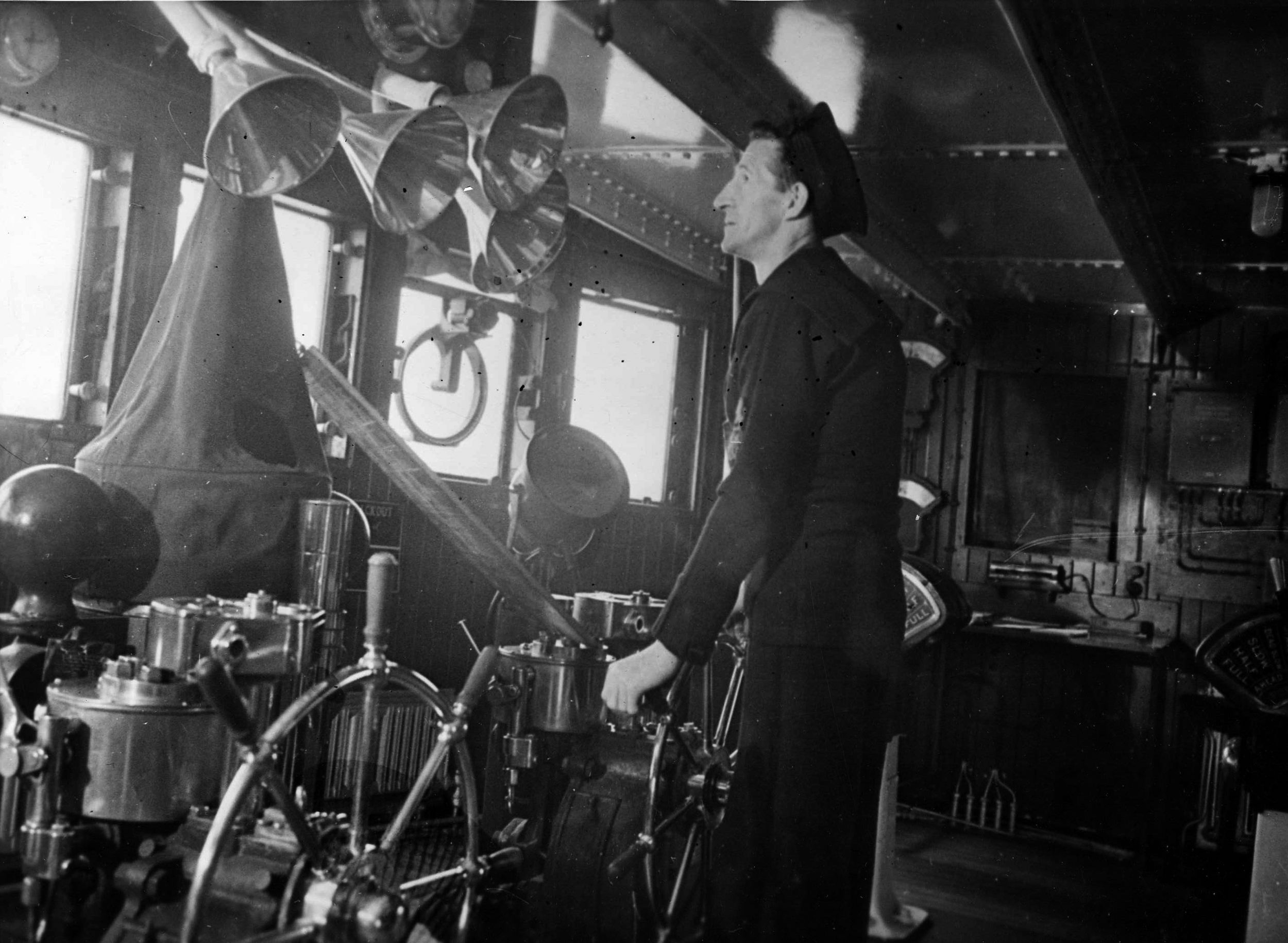
The open ocean is one thing, but the relatively narrow confines of the Red Sea exposed the ship to too much risk. If the liner was sunk, the psychological blow to morale—not to mention the loss of life—would have been devastating. On a strategic level, Britain would lose almost 20 percent of its troop-carrying capacity during the war. It was the kind of percentage that might tip the scales in Germany’s favor.
Australian troops were tough and hearty, with a sense of humor that delighted in poking fun at the pretensions of themselves and others. They needed this irreverent wit because tedious weeks aboard the Queen Mary could try the patience of a saint. The war with Japan was still months into the future, and the chance of encountering a “rogue” German U-boat was remote indeed. Unfortunately, the Queen Mary and Queen Elizabeth were designed for the cold North Atlantic, not the blistering heat of the tropics.
Torrid temperatures, not German torpedoes, became the chief threat in the summer months of 1941. Extra fans were jerry-rigged all around the ship, and saltwater showers were installed above decks. Awnings also were spread in an effort to deflect the sun’s burning rays. Unfortunately, these stopgap measures could not prevent temperatures rising well past the 100-degree range. Cases of heatstroke and heat exhaustion were multiplied, and on occasion there were one or two deaths from the oven-like temperatures.
The Queen Mary Under American Control
The December 7, 1941, Japanese attack on Pearl Harbor widened the war and brought the United States into the conflict on the Allied side. Churchill hurried across the Atlantic to confer with his new partners, although in truth the British and Americans had been cooperating with each other long before the formal declarations of war.
President Franklin D. Roosevelt and his advisers cordially welcomed Churchill that grim December, then set to work devising a strategy to deal with a two-front, two-ocean war. The Anglo-Americans agreed on a Germany-first policy, but where would the Queen Mary and Queen Elizabeth fit into the new realities of war? Their services as troopships were more needed than ever, but obviously the United States far outstripped Great Britain in terms of resources and manpower.
It was agreed that the Queens would be turned over to the Americans in a kind of reverse Lend-Lease, but that British Cunard crews would continue to run the ships under American operational control. But now that America was in the war, its troops were urgently needed, especially in the Far East. The Japanese were sweeping through Asia almost unchecked, and Australia was almost defenseless against Japanese aggression.
U.S. Army Chief of Staff General George C. Marshall met with Churchill to discuss how many people the Queens could carry effectively. Marshall had the idea of shipping at least 10,000 men, perhaps even 15,000, aboard one vessel. The figure is significant because a single division could number 15,000 troops.
Queen Mary ’s lifeboats could carry a maximum of about 3,000 souls. Add all available rafts and floats, and the number might boost to 8,000. The liner often was unescorted because her speed was considered her best defense. But if the Queen Mary was torpedoed, roughly half of her passengers might meet the same fate as those aboard the ill-fated Titanic —death by drowning or hypothermia.
Churchill was a complete romantic who loved pageantry, tradition, and the past. Churchill was also a hard-headed realist who did not shrink from difficult and even controversial decisions if the need arose. The prime minister’s reply to Marshall was unequivocal: “I can only tell you what WE would do. You must judge for yourselves the risks you will run. If it were the direct part of an actual operation, we should put all on board they could carry…. It is for you to decide.”
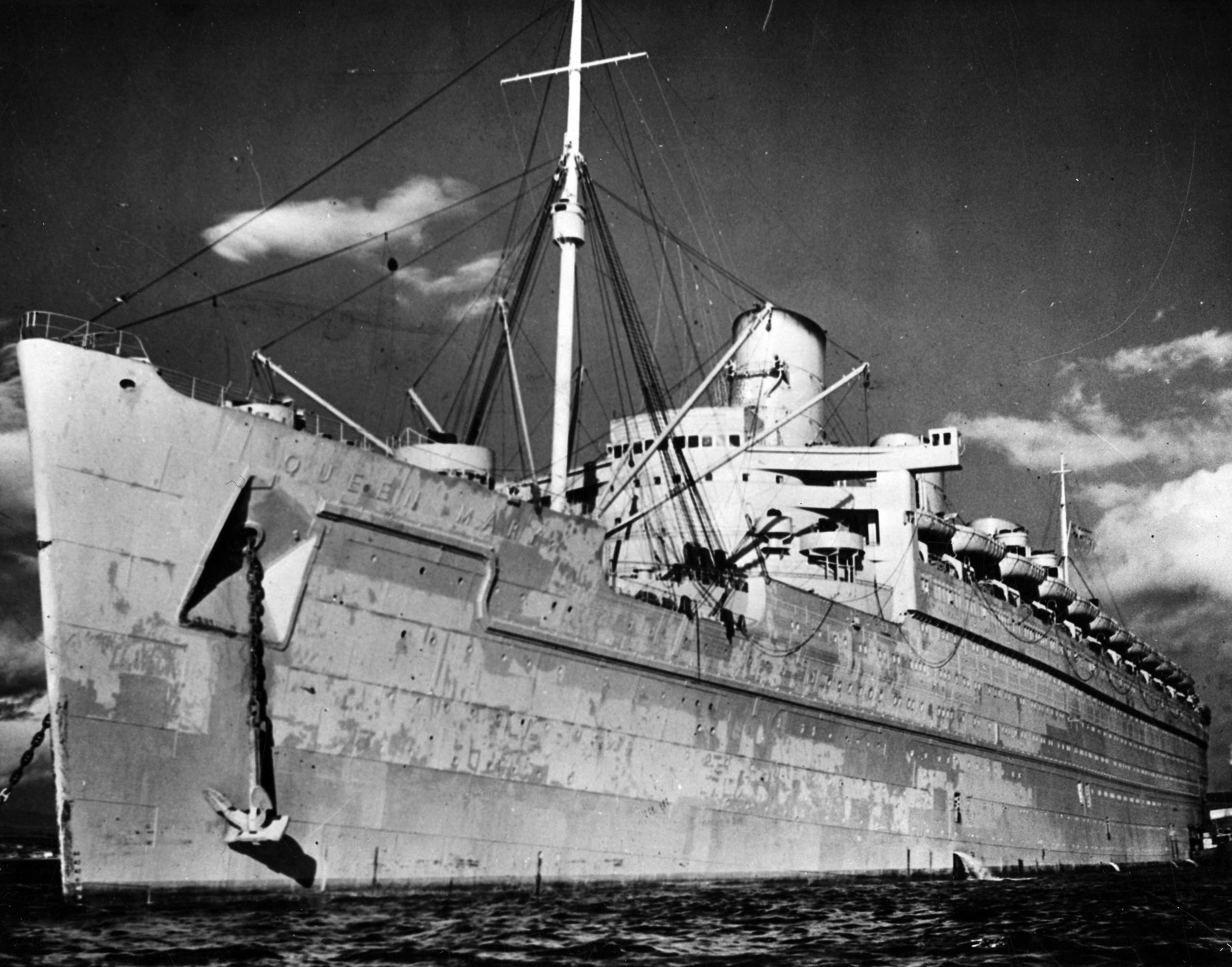
In the end, the Queen Mary would carry 15,000 passengers, but not right away. In January 1942, the ship was in Boston undergoing another refit that would boost her passenger load from 5,000 to 8,500. The ship needed to upgrade her defensive capabilities as well. Before 1942, she had been protected by a single 4-inch gun and a few scattered Vickers and Lewis machine guns.
Now, she was to have the armaments roughly equivalent to a light cruiser. The list included 40mm cannon in five double mounts sited fore and aft and 24 single-barrel cannon emplaced in steel tub mounts along the ship’s upper structure. Six 3-inch guns were also aboard, as well as two antiaircraft rocket launchers near the aft funnel.
U-Boats on the Hunt
When the job was complete, the Queen Mary embarked 8,398 American soldiers, most of them artillerymen or ordnance troops of one kind of another. Her destination was Sydney via Trinidad, Rio de Janeiro, Cape Town, and Freemantle. The liner left Boston on February 18, 1942, under bright blue skies that seemed to augur a safe passage. In fact, this trip was one of the most dangerous of the Queen Mary ’s entire wartime service. The period from January to August 1942 was fondly remembered by German submariners as “the happy time,” a period when they were winning the vital Battle of the Atlantic. In these eight months no less than 609 Allied ships went to the bottom, a staggering 3.1 million tons in all. The Queen Mary would have been the greatest prize of all. Adolf Hitler offered a million reichsmarks, about $250,000, and the Iron Cross with Oak Leaves to any submarine captain who could successfully torpedo the Queen Mary .
Increased U-boat activity around Trinidad forced a slight change in plans. The Queen Mary was diverted to Key West, and it was there that Captain James Bisset took command of the vessel. A 35-year veteran of the sea, he was nevertheless amazed by the Queen Mary ’s great size. “Gazing up at her,” he later recalled, “I felt overawed at the responsibility soon to be mine….”
Once on the bridge, Bisset had little time for such reflections. The Queen Mary sailed on the westward side of Cuba, then east into the Caribbean, finally breaking into the wide Atlantic via the Anegada Passage. Bisset had no idea that two German submarines, U-161 and U-129 , were not far behind following the same route.
The Queen Mary ’s radio operator picked up a distress signal from a torpedoed tanker only 10 miles astern of the giant liner. In fact, this same tanker had passed the Queen Mary only 45 minutes earlier. Captain Bisset ordered full speed ahead, and the liner safely reached Rio on March 6, 1942.
The Queen Mary was in even greater danger in Rio. Count Edmondo di Robilant headed an Italian spy ring in South America, and according to some versions of the story had actually obtained a copy of the ship’s sailing schedule. Robilant or one of his confederates secretly radioed German submarines with the intelligence that the great ship was anchored at Rio, but luckily the message was intercepted by Allied intelligence.
Captain Bisset was told to refuel quickly and leave port as soon as possible. Forewarned, the ship left Rio several hours before its scheduled departure. The Queen Mary escaped in the nick of time. An oil tanker that left port about the time of the liner’s original sailing was torpedoed a few miles out to sea. It looked as if a German submarine had been lurking in ambush.
The Germans refused to believe that the Queen Mary had slipped the net; in fact they proudly announced the sinking of the great ship. Hearing this, Captain Bisset remarked to his communications officer, “Keep this news under your hat. Don’t let the troops know we’ve been sunk. It might worry them!”
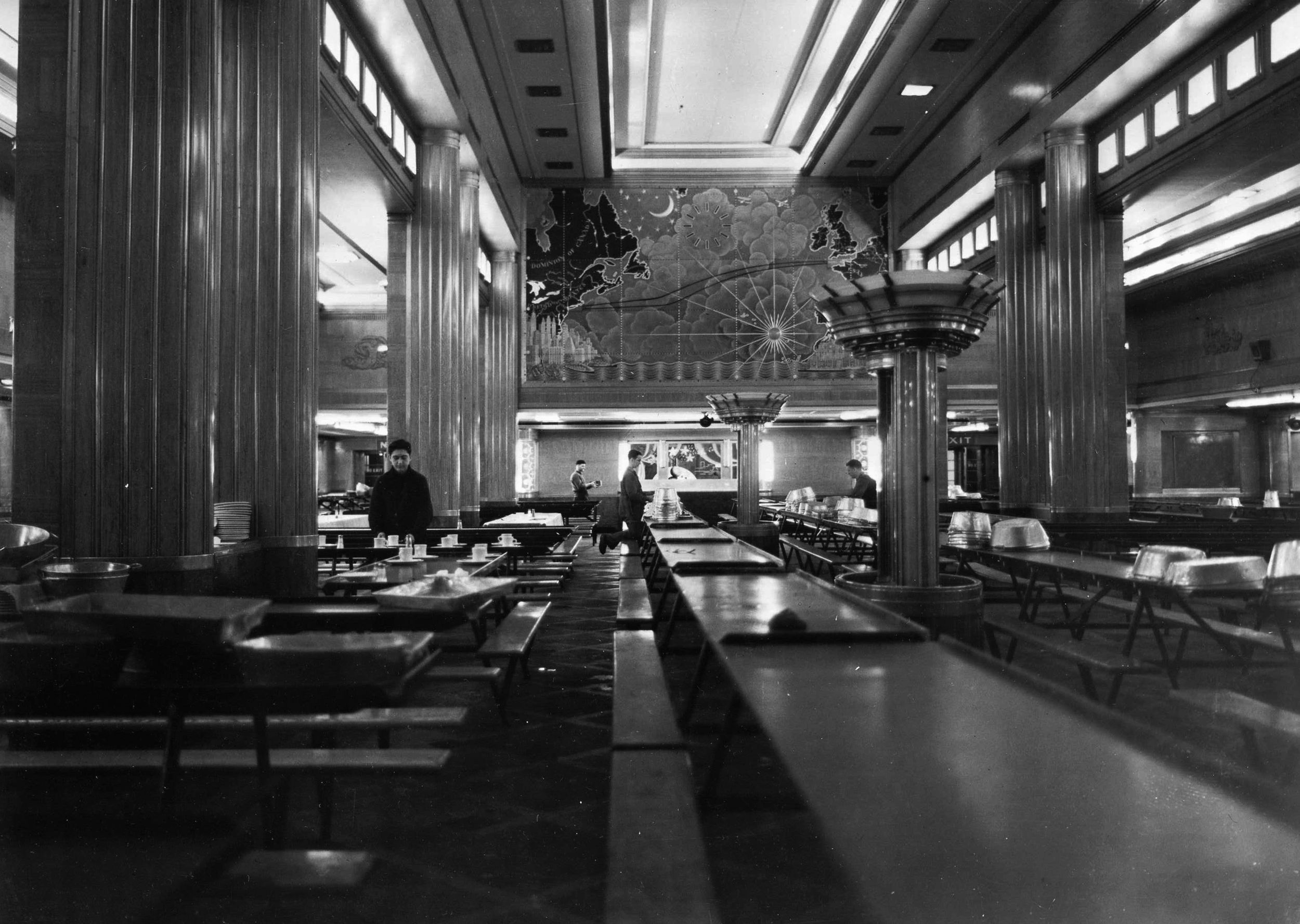
The rest of the trip was uneventful, and the Queen Mary successfully reached Australia, where the Americans disembarked safely. The Yanks had behaved themselves but left distinctively American “calling cards”—wads of chewing gum stuck from stem to stern. Captain Bisset quickly revised the rules, adding chewing gum to the list of banned substances.
A GI Shuttle in the European Theater
By 1943, planning for Operation Overlord, the Allied invasion of occupied France, was well underway. Earlier refitted to accommodate 15,000 men, the Queen Mary made a significant contribution to the Allied build-up that preceded the invasion. In essence, the ship could carry an entire division across the ocean in less than six days.
Now permanently assigned to the European Theater, the giant vessel became a “GI shuttle” that ferried thousands upon thousands of American and Canadian troops across the Atlantic to Great Britain. It was decided that the Queen Mary could take 15,000 men only during the summer months, when the seas were calmer. The ship might weather choppy seas or a raging winter storm, but the packed men would be so tossed about that broken arms and other injuries could result. The idea was to deliver the men in one piece!
Gourock, Scotland, not far from where she was launched, was slated to be the Queen Mary ’s home port for the duration. Southampton was the liner’s normal base in peacetime, but it was too near German-occupied France and subject to enemy air raids. Liverpool was another alternative, but it had also experienced German bombing. Gourock was beyond reach to all but a handful of German long-range aircraft types.
A Good Night’s Sleep on the Transatlantic Voyage
It was quickly realized that new rules and new procedures had to be adopted for the 15,000-man voyages, or all would dissolve into chaos. The ship was divided into three vertical sections—Red, White, and Blue—and every soldier coming aboard was given a colored button corresponding to the section where his unit was assigned. Visiting other sections was strictly forbidden. The Red section stretched from the bow of the ship aft to the number three stairway, excluding the sun deck. White covered everything between number three and number four stairways, and included the sun deck. Blue was from the number four stairway to the stern.
This overcrowding was feasible thanks in part to the standee bunks, which had replaced the ship’s earlier hammocks. Standee bunks were tiered sleeping spaces stacked up as high as six feet. There was only an 18-inch clearance between each standee, which did not help any soldiers who might be claustrophobic. Sleeping was done on a rotation basis, with each bunk shared by the men. In addition, at any given time one-third of the troops would sleep “topside” on the open deck.
The rotation system assured that each man slept inside two nights and then outside two nights. Sleeping topside was feasible only in the summer months because winters on the North Atlantic are too cold. Most GIs actually preferred outside, which was less dank and claustrophobic. Besides, the men reasoned rightly that those topside would have a better chance for survival if the ship was torpedoed.
Sergeant Jerry Cerrachio got some good advice during one of the Queen Mary ’s outbound voyages to Britain. Since the upper standees were fairly high, it was only natural to select a lower bunk for convenience. “Don’t take that one, Sarge,” a friend cautioned. “If one of the guys above you throws up, it’ll wind up all over you!” Cerrachio immediately changed his mind and picked an upper bunk.
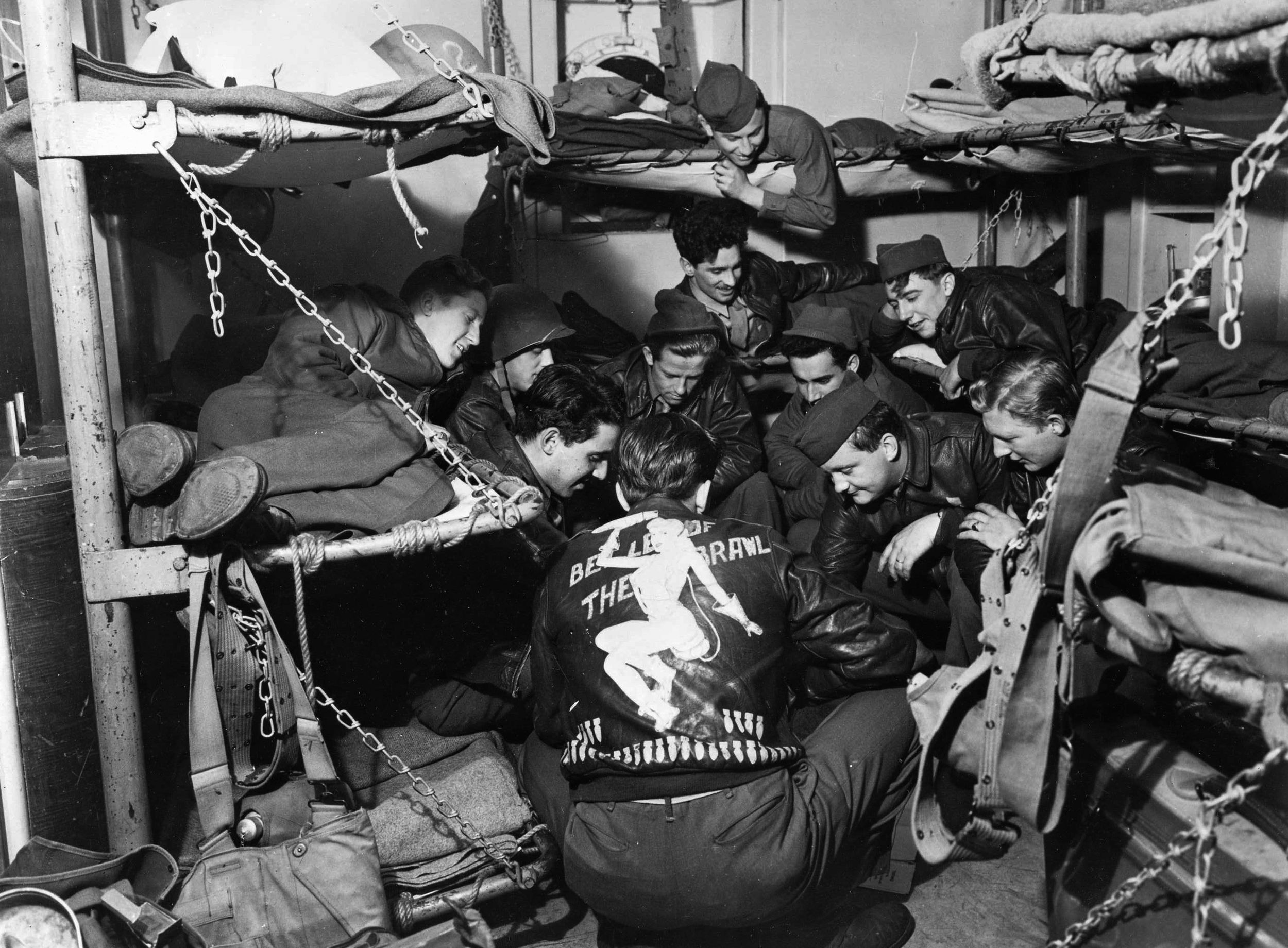
Rules and Regulations
Feeding such a multitude was no easy task. There were two main meals a day in six staggered sittings. Breakfast was available from 6:30 am to 11:00 am, and dinner from 3:00 pm to 7:30 pm. Soldiers could take as much as they wanted but were allotted only 45 minutes to complete their meals. As one group was exiting, another group would be queueing up to be served. Sandwiches were available for the men to take with them as they exited, to snack on between meals.
The former first-class dining saloon was the main enlisted men’s mess hall. It had been stripped of its prewar finery, but the great world map of earlier days was still in place, a reminder of happier times. Officers ate in the former tourist class lounge. Rank did have some privileges. Officers dined on regular tables and had food served by stewards. However, there was literally no “free lunch.” At the end of the crossing, it was expected that an officer would give the stewards a generous tip.
On such a crowded ship, rules and regulations assumed even greater importance. The Queen Mary officially was declared a “dry” ship—no alcoholic beverages allowed. Some rules were almost impossible to enforce. There was to be no swearing, no obscene or profane language, and above all no gambling of any kind. The GIs ignored the gambling ban, and probably drove the MP’s to distraction. Poker, blackjack, and crap games were a major form of amusement during the long six-day passage.
Some rules were rigidly enforced. There was a standing order that all personnel had to wear their life jackets and helmets when topside. Any person caught without these items had to forfeit his shoes. The story is told of an American admiral who must have thought his exalted rank put him above these things. He was caught without a life jacket and forced to surrender his shoes. He padded off in his stocking feet, thoroughly chastened.
Clandestine gambling apart, there was little to do on these long, cramped voyages. There was an occasional work detail, and some officers arranged exercise workouts. Movies were shown, but the Queen Mary ’s film library was limited. At least the GIs were aboard for only six days. Cunard crew members had even less choice. It was said that one crewmember saw the Laurence Olivier film, Pride and Prejudice , 120 times!
Other soldiers passed the time by reading, writing letters, or simply talking to buddies. Those seeking religious solace could attend services in the Catholic, Protestant, or Jewish chapels. Mandatory lifeboat drills, ironic in that there were not enough lifeboats to accommodate all, also provided some breaks in the monotony.
The Stench of Seasickness
Life may have been tolerable, but it was anything but a pleasure cruise. The RMS Queen Mary was a legendary ship in any guise, even a troopship, but even before the war it had a tendency to roll in heavy seas. This was an unfortunate trait in the North Atlantic, well known for centuries as one of the most treacherous, even capricious, oceans in the world.
Seasickness was common, and the men rarely washed. There was always a lurking fear that one would be caught in the shower when the ship was torpedoed. Rather be dirty and safe than be clean and sorry. The net result was an atmosphere of cigarette smoke, sweat, vomit, and diesel oil that cannot be imagined by merely looking at period photographs.
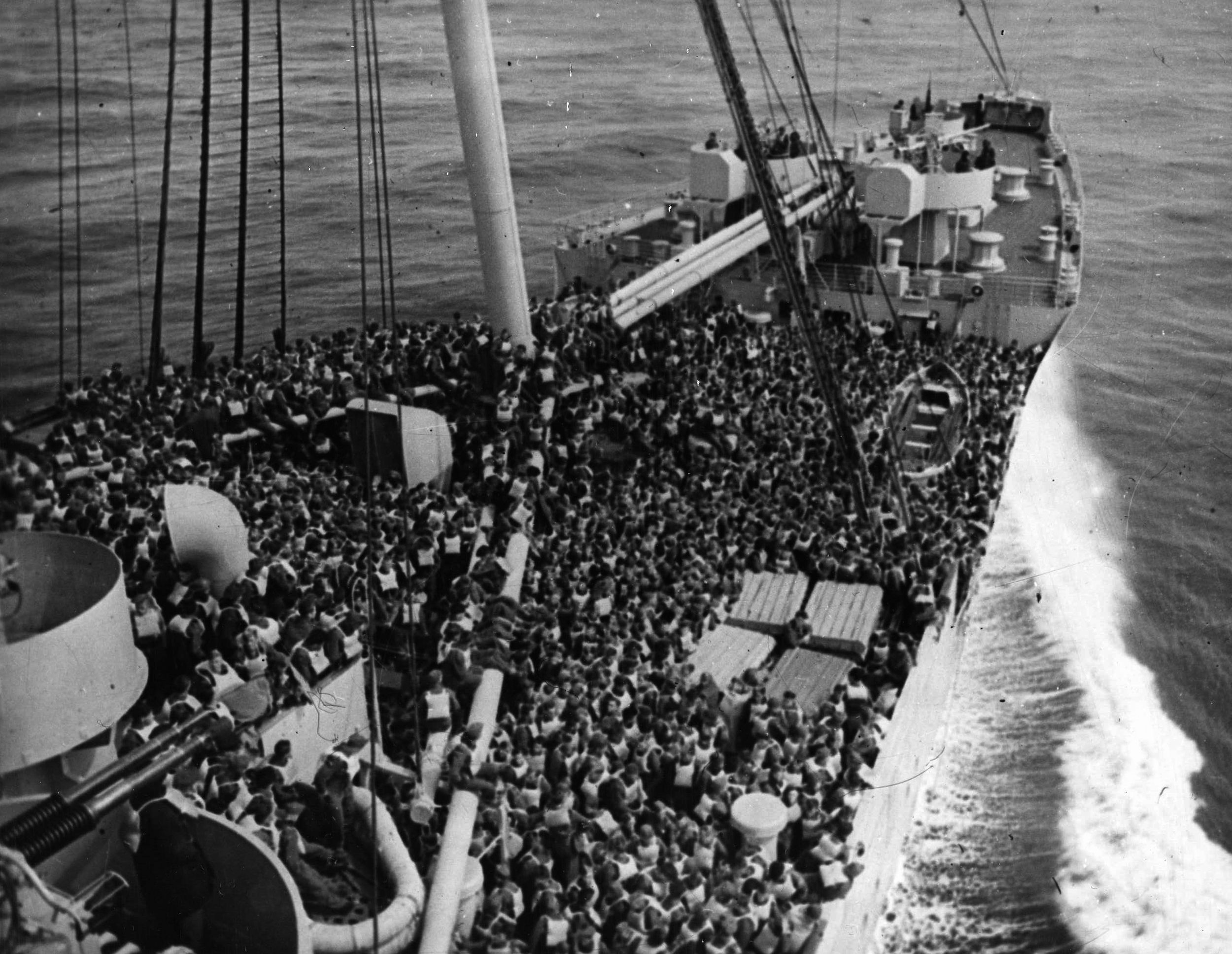
The Queen Mary ‘s Wartime Successes
In spite of the problems and discomforts, the Queen Mary was succeeding in its mission. During August 2 through 7, 1942, the ship carried a complete division, the First Armored, across the Atlantic. On that voyage, 15,125 troops and 863 crewmen were aboard. The ship reached a milestone on the July 25-30, 1943, passage. On that voyage she transported 15,740 troops and 943 crewmen, for a grand total of 16,683. It was the largest number of people ever carried by a steamship.
The Queen Mary also transported Axis POWs during her years of active service. Early in the war, the ship transported Italian prisoners to Australia. After the tide turned in North Africa, thousands of Germans also found themselves involuntary passengers aboard the great liner. Winston Churchill was aboard the Queen Mary for three trips, and during one of these voyages the liner also carried 5,000 German POWS.
On the whole, the Axis prisoners caused little trouble, but occasionally there were some minor flareups. In June 1942, some German prisoners scrawled anti-British slogans on a bulkhead. They were confined to the brig for a few days on bread and water. When some British personnel tried to counter with “Rule Britannia” graffiti, they too were thrown in the brig to cool off for a few days. One did not mark the Queen Mary ’s walls, and the captain was determined not to play favorites!
The Germans would claim to have sunk the Queen Mary from time to time, partly in an effort to locate it. The Germans hoped that the false reports would prompt the Queen Mary or the Admiralty to break radio silence. If they did so, then the Germans could get a fix on the vessel. The British never fell for such a transparent ruse, and throughout the war the Queen Mary led a charmed life.
The HMS Curacao Tragedy
One tragedy did mar the Queen’s otherwise sterling wartime career. It occurred off the coast of Ireland on October 2, 1942, at about 2 pm. Captain Cyril Illingsworth was the ship’s master on this voyage, and at the time he was in the chartroom in the back of the bridge. Navigating officer Stanley Wright remarked to the captain that he felt unhappy that the escorting vessel, HMS Curacao , was getting too close. Illingsworth dismissed Wright’s worries, saying the light cruiser was used to escort duties and she “will keep out of your way.”
At the moment, the Queen Mary was executing a zigzag pattern, standard procedure for protection against submarines. The HMS Curacao was a light cruiser of World War I vintage, 450 feet long and 4,200 tons, commanded by Captain John Boutwood, a regular Royal Navy officer.
Suddenly, the Curacao moved close to the Queen Mary —too close. Recognizing the danger, the Queen Mary ’s senior first officer, Noel Robinson, ordered, “Hard a port!” The horrified officer knew they had only two minutes to rectify the course and heading and to ward off disaster.
It was not enough. The Queen Mary struck the Curacao a glancing blow at an acute angle about 11 feet from her stern, which spun the smaller vessel around 90 degrees and left her vulnerable for a second, more devastating collision. The Queen Mary sliced through the Curacao ’s hull like a knife though butter, cutting the unfortunate cruiser in two amid the sounds of escaping steam and tearing metal. The Curacao ’s stern momentarily half capsized, its propellers spinning in the empty air, before finally disappearing beneath the waves. The front half, consumed in flames, floated a moment or two longer before going under.
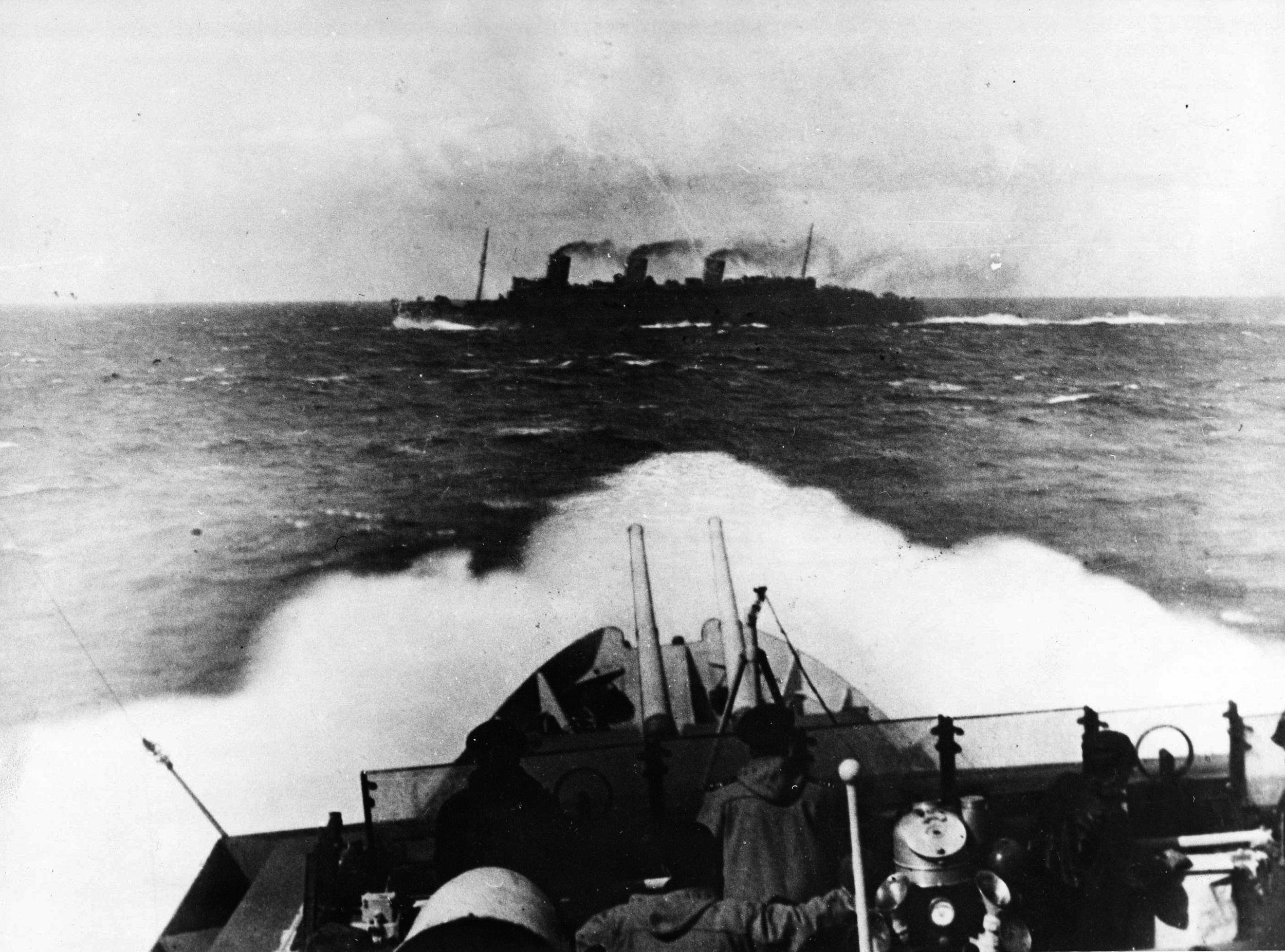
Within seconds, the sea was a thick, viscous mass of oil slicks and screaming, half-dazed survivors. The Queen Mary sailed on without stopping—those were the standing orders—leaving smaller ships to pick up survivors. Only 101 sailors out of a complement of 429 officers and men lived to tell the tale.
Damage control parties quickly examined the Queen Mary ’s bow and found an 11-foot hole at the point of impact. There was serious flooding to the forepeak, but as long as the watertight bulkhead held, there would be no serious danger. Speed was reduced to less than half, about 13 knots. The ship was inspected and deemed seaworthy. There was no need to replace the damaged bow, at least at the time.
The tragedy had been caused by a series of wrong assumptions, small miscalculations, and bad timing thoroughly based on human error. Both captains were men of ability and sound judgment. Though he was not entirely responsible for the disaster, Captain Illingsworth automatically thought that the Queen Mary would have the right of way. It was a fatal assumption.
The RMS Queen Mary ‘s Long Voyages of World War II
The RMS Queen Mary then embarked on one of the greatest troop delivery shuttles in her career. Dubbed the “long voyage,” the vessel went from Scotland, to Suez, and to Sydney, Australia, and then returned to Gourock. Total round trip mileage was 37,943 miles.
The Queen Mary and her sister ship, Queen Elizabeth , were a vital part of the war effort. Indeed, many claim they helped shorten the war by about a year. Without the massive buildup provided by the Queens , D-Day might have been postponed until 1945. Between June 1943 and April 1945, the Queen Mary carried nearly 340,000 American and Canadian troops on journeys that covered 180,000 miles. The political consequences were immense. If the Western allies had been delayed, Stalin’s Red Army might have spread Communism beyond the reaches of Eastern Europe.
It was Winston Churchill who summed up the matter best. “Built for the arts of peace and to link the Old World with the New,” he later wrote, “the Queens challenged the fury of Hitlerism in the Battle of the Atlantic. Without their aid, the day of final victory must unquestionably have been postponed.”
Eric Niderost is a college professor in Hayward, California.
Back to the issue this appears in
Join The Conversation
7 thoughts on “ rms queen mary’s war service: voyages to victory ”.
Hi Eric… Thank you so much for your well researched information on the Queen Mary.
I have a shoe box of memorabilia and souvenirs collected by my uncle, Leslie Jack Connolly, throughout his life. I came across a postcard of the H.T Queen Mary and two menus from the officer mess, dated January 1941, and just had to find out why he had collected these items. I knew he had been in the Australian Army and I also knew he had served in the Middle East and now I know how he got there. He left Sydney, Australian on the Queen Mary at the end of December 1940, or the beginning of January 1941 and arrived in Trincomalee, Sri Lanka on the 31 January, 1941. His brother Eric Sydney Connelly was also with him. So thank you again for your information on the Queen Mary. Regards Vicki
I just came across a letter from my father, John Oliver Fletcher, to a family friend, detailing his war time experiences as a pilot in the RAF. As a side note at the end of the letter, he left this comment: “The stamp on your envelope is interesting. It shows the very first building that I ever saw in Canada after leaving the Queen Mary with a hole in it at Boston before heading for New Brunswick.” I have vague memories of my father describing the tragedy and the result… but did not have any real idea what a big deal it was, as he tended to brush things off, I think, as a way to make them easier for us to understand. Much of the emotional toll of war was not communicated, but he did refuse to ever go on any type of vacation cruise, saying that they were a waste of money. I now understand that there was much more behind that stance than he was able to communicate. Thank you for your detailed article enabling me to better understand who my father was long before I arrived.
Hi Vicki – We would love to hear more about your uncle’s connection with the RMS Queen Mary and maybe able to help provide more detail of his time onboard the ship. Please reach out if interested. [email protected] – Foundation for the RMS Queen Mary ( http://www.Qmi.care ) Thank you
My dad was a sailor on the Queen Mary I around 1944-1945. He remembers ferrying American troops across the Atlantic. Interesting to hear about the history of the ship.
Hi Pauline – We would love to hear more about your Dads’s connection with the RMS Queen Mary and maybe able to help provide more detail of his time onboard the ship. Please reach out if interested. [email protected] – Foundation for the RMS Queen Mary ( http://www.Qmi.care ) Thank you
1944, I was 4 on holiday at the Isle of White. I grew up with the memory that a man on horseback rode along the beach telling everyone to get out of the water as the Queen Mary was either coming or going out of Southampton. Could this be a true memory.
My dad, Joseph Kohout, was with the Battery B, 743rd Battalion, Coastal Artillery (AA), when his unit was one of several on the QM during its ’40 Days & 40 Nights’ voyage, 2/18/42-3/28-42. He ended up in New Guinea with Aussie units as an AA gunner. Said he remembered the Rio de Janeiro port call. Said the troops on the QM were issued surplus WWI kapok life jackets which were mostly no good when they had a pool filled with water to test them. Kapok tree floss inside had deteriorated! Lost its ‘buoyancy’; didn’t help morale much! Also said he was trained to shoot down German/Italian planes and thought he was being sent to Britain, not the South Pacific, and had to learn Japanese plane silhouettes and markings once he got there.
Leave a Reply Cancel reply
You must be logged in to post a comment.
Share This Article
- via= " class="share-btn twitter">
Related Articles
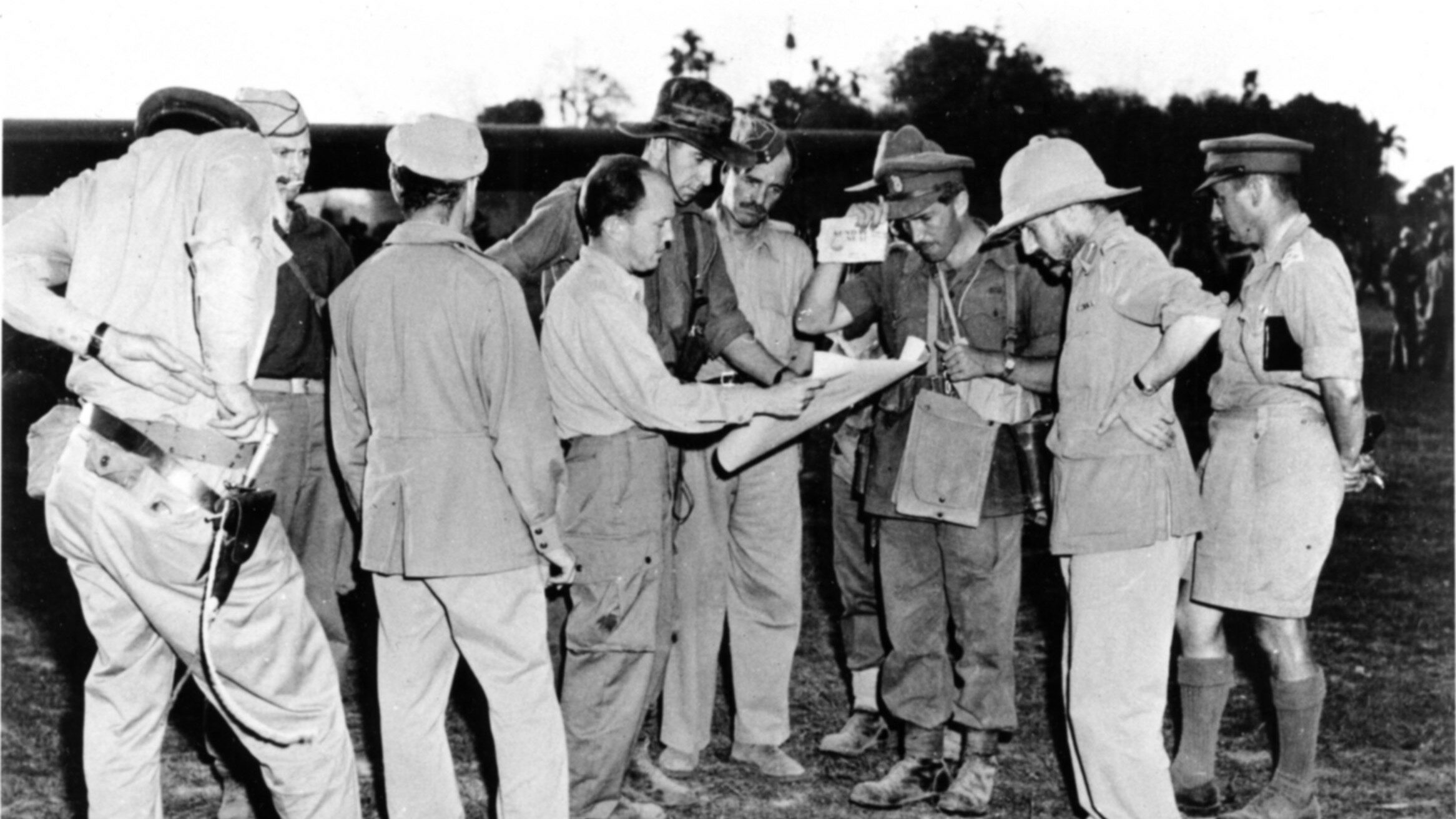
British General Orde Wingate’s Blurred Legacy
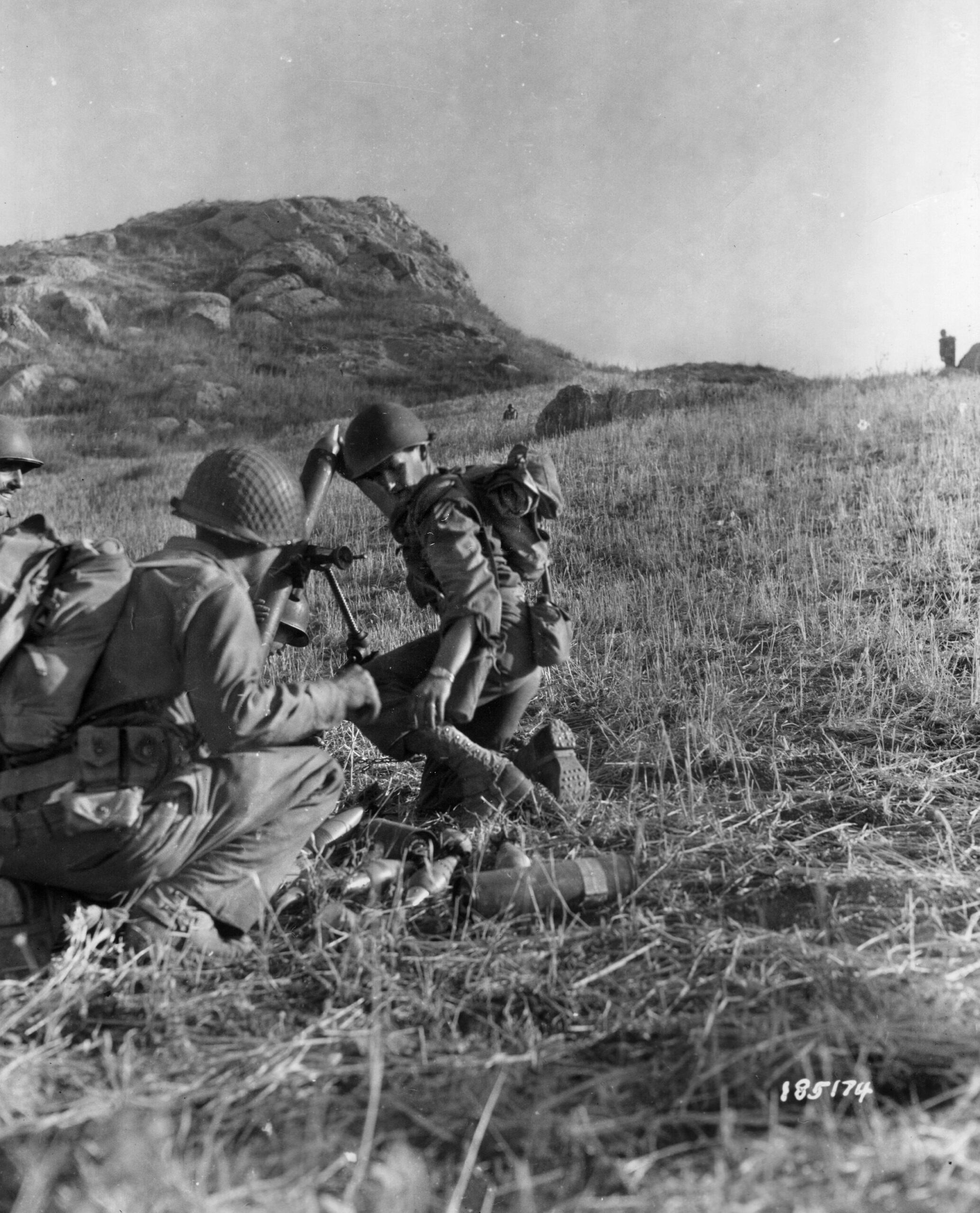
Above & Beyond
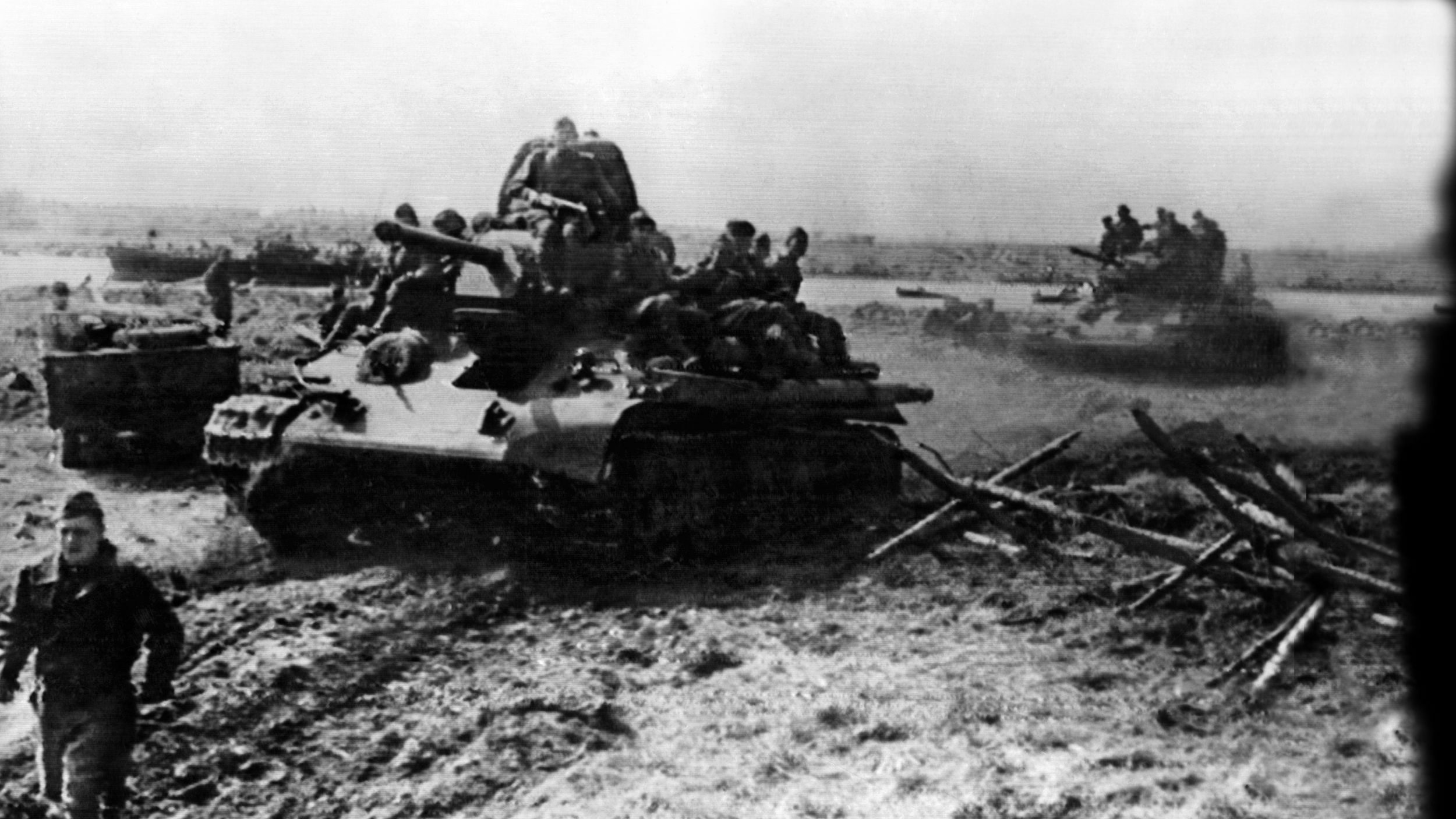
Finland on the Eastern Front: Defense of the VKT Line
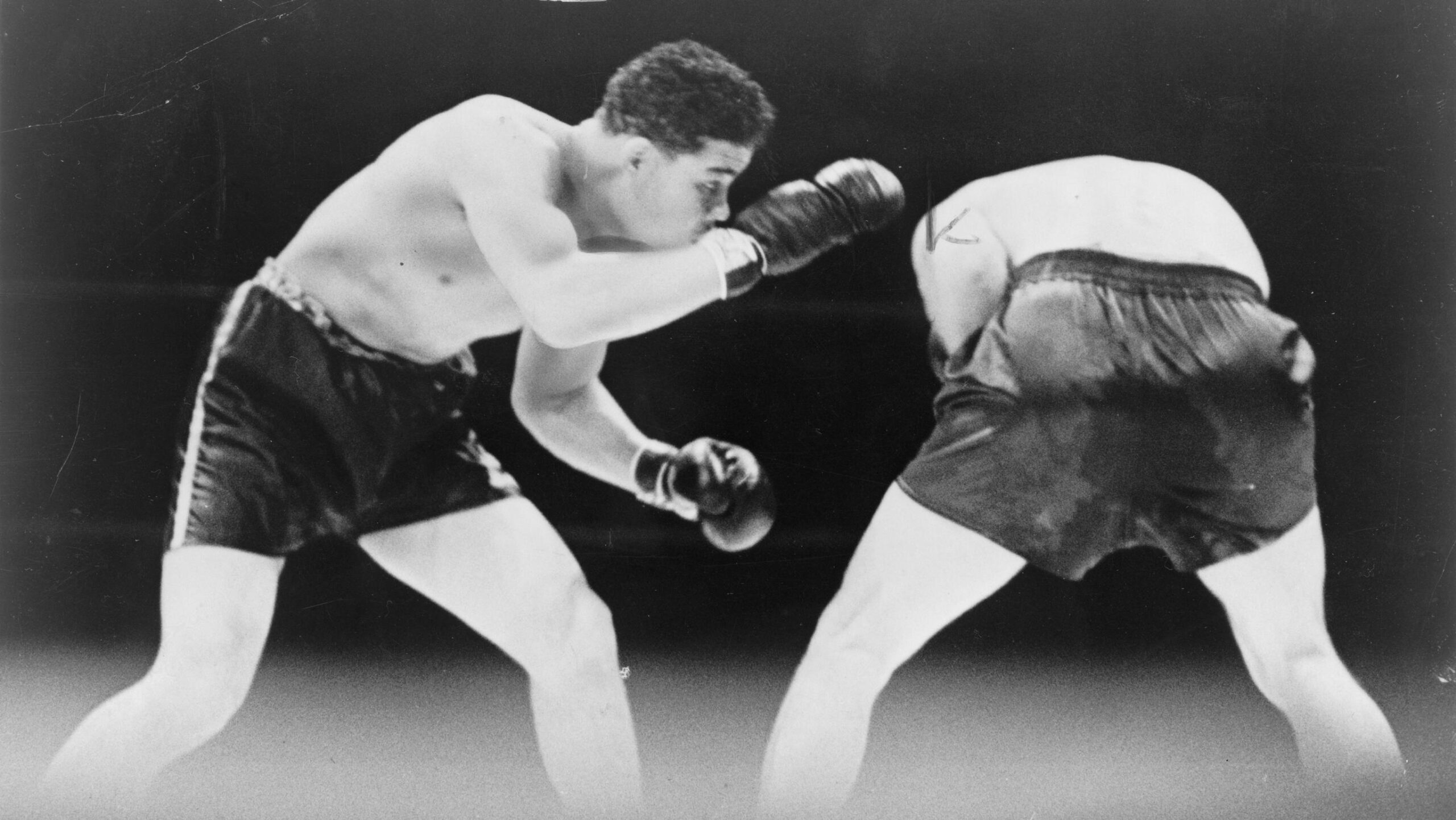
European Theater
The late Max Schmeling was a sports icon and a gentleman.
From around the network.
Military History
General Skobelev
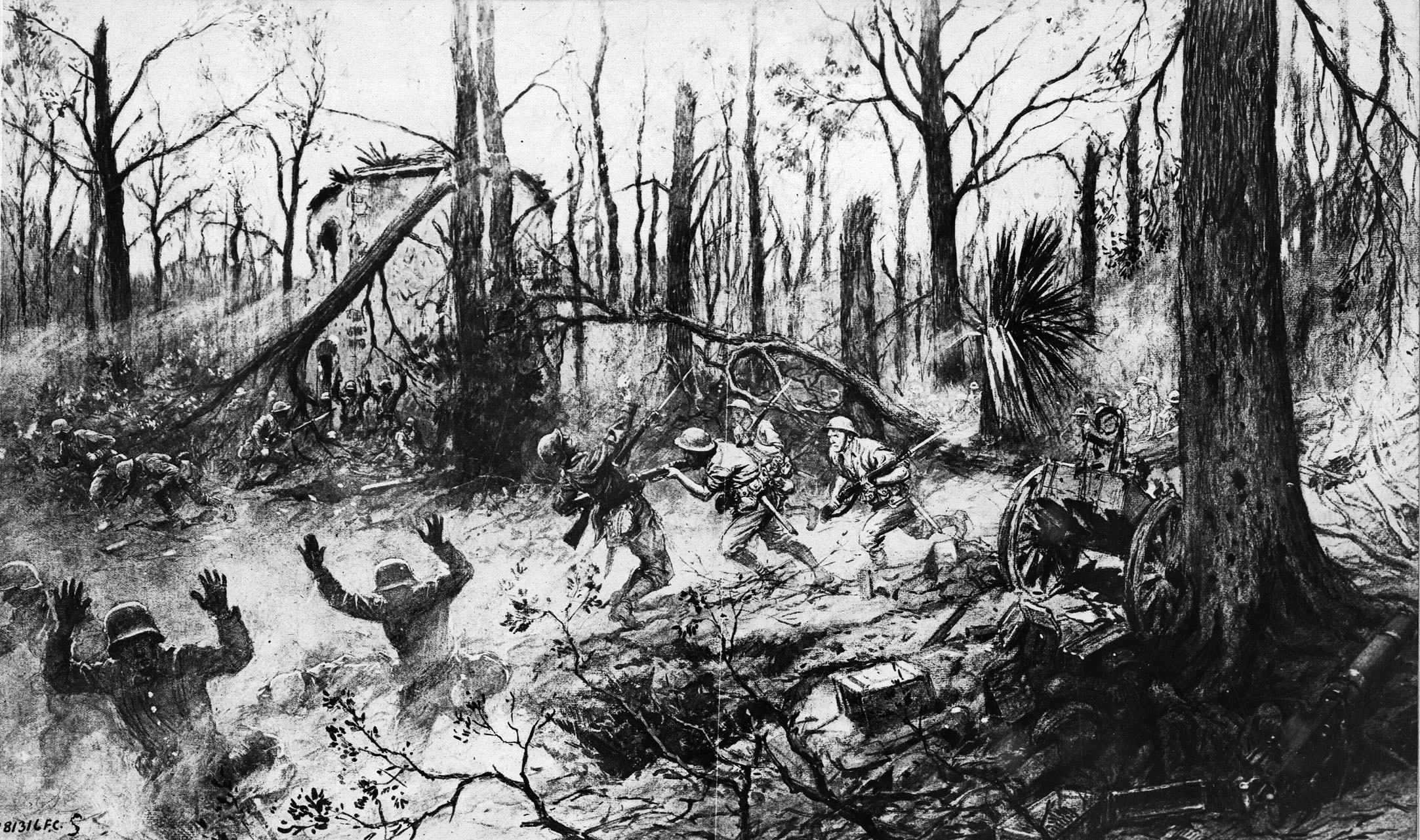
Book Reviews
The USMC in World War II
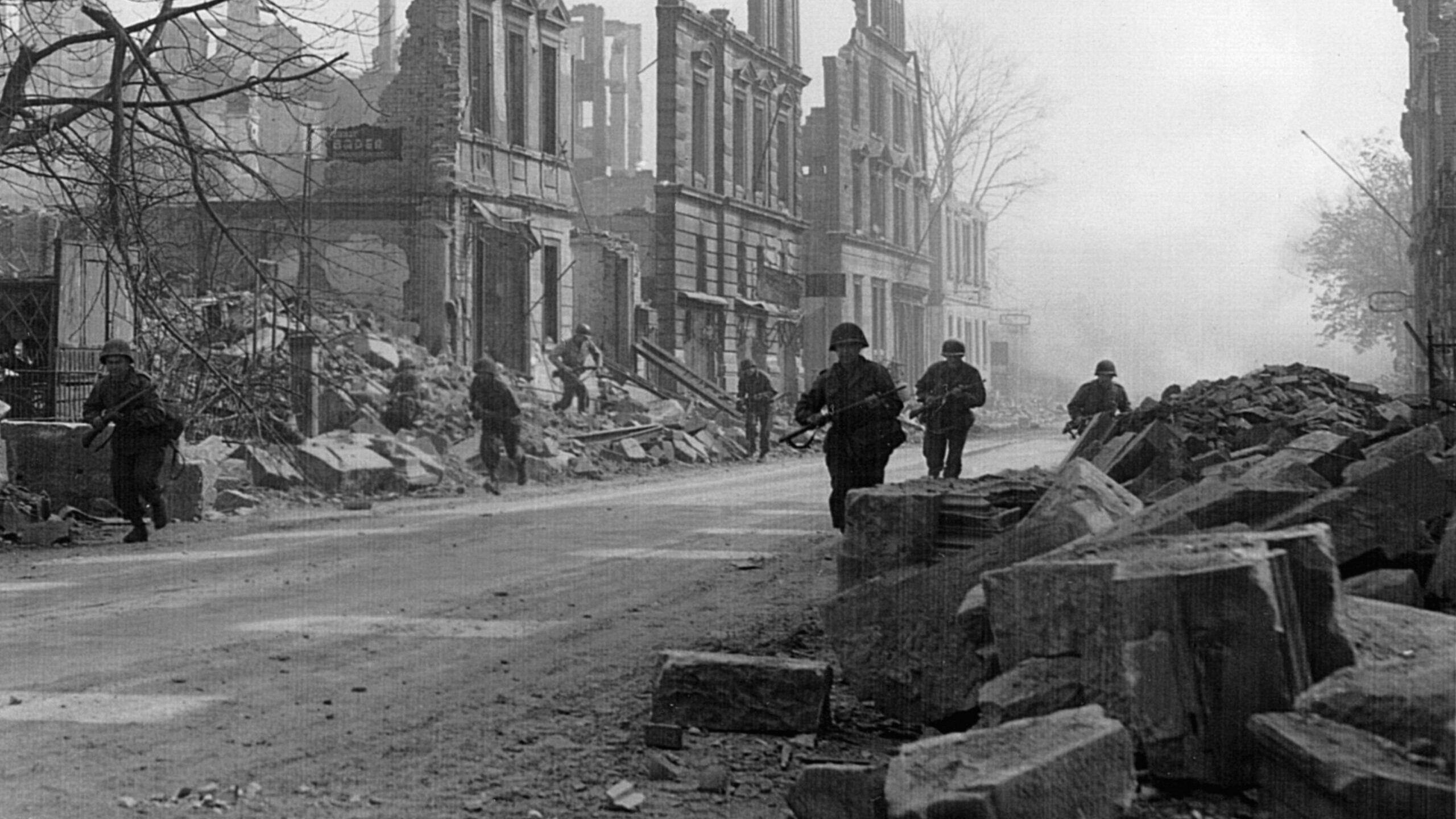
Heilbronn: Fighting House to House in World War II
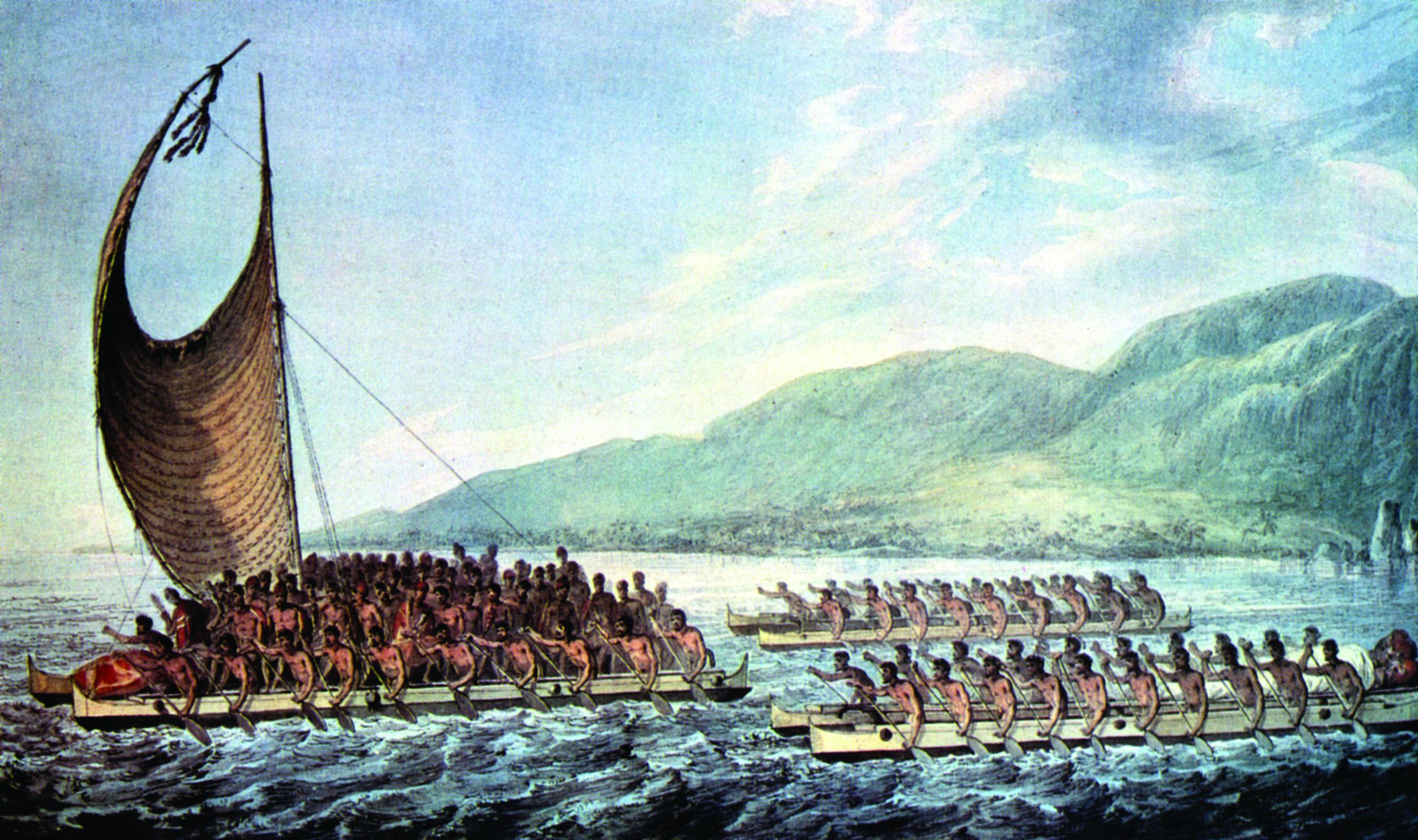
King Kamehameha’s Conquest of Hawaii

IMAGES
VIDEO
COMMENTS
On October 31, 1967, the Queen Mary departed on her final cruise, arriving in Long Beach, California, on December 9, 1967. She has called Southern California her home ever since. The Queen Mary is now a floating Hotel, Attraction and Event & Wedding Venue, home to three world-class restaurants and an icon in Southern California.
The Queen Mary added new routes, including a Mediterranean cruise. However, in 1966 Cunard announced that it was selling the ship. However, in 1966 Cunard announced that it was selling the ship. The following year the city of Long Beach, California, bought the Queen Mary for $3.45 million, planning to turn it into a hotel and tourist attraction.
The Queen Mary ship sailed weekly between Southampton and New York City, along with her sister RMS Queen Elizabeth. And if you're curious about her post-service history - this is the link to our review of the Queen Mary haunted hotel ship story. The first Queen Mary liner was the Cunard's flagship for 10 straight years - from 1936 to 1946.
RMS Queen Mary is a retired British ocean liner that sailed primarily on the North Atlantic Ocean from 1936 to 1967 for the Cunard Line and was built by John Brown & Company in Clydebank, Scotland. Queen Mary, along with RMS Queen Elizabeth, was built as part of Cunard's planned two-ship weekly express service between Southampton, Cherbourg and New York.
RMS Queen Mary ship first sailing was on 14 May with its Transatlantic itinerary being Southampton-Cherbourg-New York. By May 1937 the liner had carried a total of almost 57,000 passengers. And something about the Queen Mary ship - the fastest liner in the world. The main speed-rival of the QM ship was SS Normandie - a liner built in France ...
The Queen Mary offers daily public tours and welcomes visitors onboard to learn more about the ship's nearly 100-year history via exhibits and scheduled tours.. Engineering aficionados will enjoy The Steam and Steel Tour, which descends into the depths of the ship's boiler and generator rooms to share how the Queen Mary was powered across the Atlantic.
Ships from Germany, the Netherlands, and Japan started a deafening plethora of vibrato noise. The cruiser, Captain Black, fired an extra boiler for one long heroic blast. The stop in Callao, Peru would be only be 36 hours, but the locals went all out in laying out their wares for Queen Marians to view.
The Queen Mary. Address. 1126 Queens Hwy, Long Beach, CA 90802, USA. Phone +1 562-435-3510. Web Visit website. On your next trip to Long Beach, California, you should stop by the cruise ship that never moves—the Queen Mary. Originally built in 1937, the ship had a long and fascinating 30-year career before making its 516th and final voyage to ...
Launched in 1934, the RMS Queen Mary was the jewel of the Cunard-White Star Cruise Line, dedicated to and christened by Her Majesty Queen Mary herself. The largest cruise ship of its time at 1,019 ...
The Queen Mary provides a wide range of guest rooms, 14 Art Deco salons, tours, restaurants, shops, and exhibits. ... History. Resting in Long Beach Harbor is the RMS Queen Mary, a colossal ship that was ... or other amenities now commonplace on cruise ships. In 1967, she was withdrawn from service after more than 1,000 transatlantic crossings ...
British forces assigned the H.M.S. Curacoa, built during the First World War, to serve as an escort ship for the Queen Mary during World War II. On October 2, 1942, the two ships were scheduled to ...
RMS Queen Mary 2 (QM2) is a British transatlantic ocean liner.She has served as the flagship of Cunard Line since succeeding Queen Elizabeth 2 in 2004. The ship was officially named Queen Mary 2 by Queen Elizabeth II in 2004 after the first RMS Queen Mary of 1936. With the retirement of Queen Elizabeth 2 in 2008, Queen Mary 2 is the only ocean liner in service in the world.
The Queen Mary was built in 1930 in Clydebank, Scotland, by Cunard Line, a British cruise line based at Carnival House in Southampton, England. The project was initially known as job #534, and due to the economic setback induced by the Great Depression, the ship's construction was finished in three and a half years and cost 3.5 million pounds ...
Queen Mary History The need for Queen Mary. In the 1920s, Cunard identified the need to replace the ageing Mauretania on the transatlantic run. Initially they line wanted a ship of similar scale to Aquitania, although mechanically modernised.. As the design for the new ship evolved, the dimensions grew into a liner of over 310m (1,019 ft) long and 81,000 tons, making it a contender for the ...
1939 - 1946. As England and France declare war on Germany, the Queen Mary's days as a passenger ocean liner appear over. With her record-breaking speed and size, the Queen Mary is retrofitted to serve as a troop ship during WWII. Dubbed, the "Grey Ghost," the Queen Mary hauled as many as 15,000 men while playing a pivotal role in guiding ...
The Queen Mary measures 1,019 feet long and 118 feet wide. She is 181 feet tall from keel to masthead, and weighs in at 82,000 tons. By comparison, many of today's modern cruise ships measure over 1,100 feet in length and can weigh upwards of 150,000 tons. That means that the Queen Mary is slightly smaller than many of today's modern cruise ...
Queen Mary 2: An ode to the last of her kind. September 4, 2023. From an early age I've been lucky enough to explore the world via ship, so I guess it was only natural for me to delve into the history of cruise ships and learn about their precursors, the grand ocean liners of the 20th Century. I read books and watched documentaries to learn ...
The RMS Queen Mary, which was considerably bigger than the Titanic, was among the most opulent ships of its era. She was faster and could carry a lot more people. Unlike the Titanic, which could only cruise at 23 knots, she was capable of 30 knots of speed. Modern conveniences like air conditioning and TVs were also available on board the Queen ...
4.0. Very Good. Overall. Kerry Spencer. Contributor. The prospect of traveling onboard Cunard Queen Mary 2, the world's only ocean liner, is thrilling -- now more than ever -- following the ship's ...
The first Queen Elizabeth, which was the sister ship of the Queen Mary, was one of the largest passenger liners ever built.Launched in 1938 and used as a troopship during World War II, it entered the regular transatlantic service of the Cunard Line in 1946.The ship was 1,031 feet (314 metres) long and 118.5 feet (36 metres) wide and had a draft of 38 feet (11.6 metres) and an original gross ...
A Trip Across Time The Whole Story. The Queen Mary's creation and launch was nothing if not extraordinary and her story is rich with history, elegance and grandeur. From the time her construction began in 1930 in Clydebank, Scotland, the Queen Mary was destined to stand in a class all her own. Experience the glamour of the Golden Age of ...
The 2004-built RMS Queen Mary 2 cruise ship is the oldest and most famous of all Cunard liners, with fleetmates the sisterships MS Queen Victoria (2007) and MS Queen Elizabeth (2010), and Cunard's newest liner (2024-built) Queen Anne.. The vessel (IMO number 9241061) is currently Bermuda-flagged (MMSI 310627000) and registered in Hamilton.The previous flag state/registry was the UK/Southampton ...
One of the worst accidents occurred on October 2, 1942, when a British antiaircraft cruiser and the famous British liner Queen Mary collided. The mishap cost 236 British seamen their lives; only 99 were rescued. During World War II many of the great Atlantic liners, such as the luxurious, 1,020-foot-long Queen Mary (which had a comfortable ...
The RMS Queen Mary 's Maiden Voyage as a Troopship. On May 4, 1940, Queen Mary left Sydney with 5,000 Aussie troops aboard. The great liner joined other "drafted" passenger ships similarly loaded with equipment and men, forming a huge convoy protected by the Royal Australian Navy.